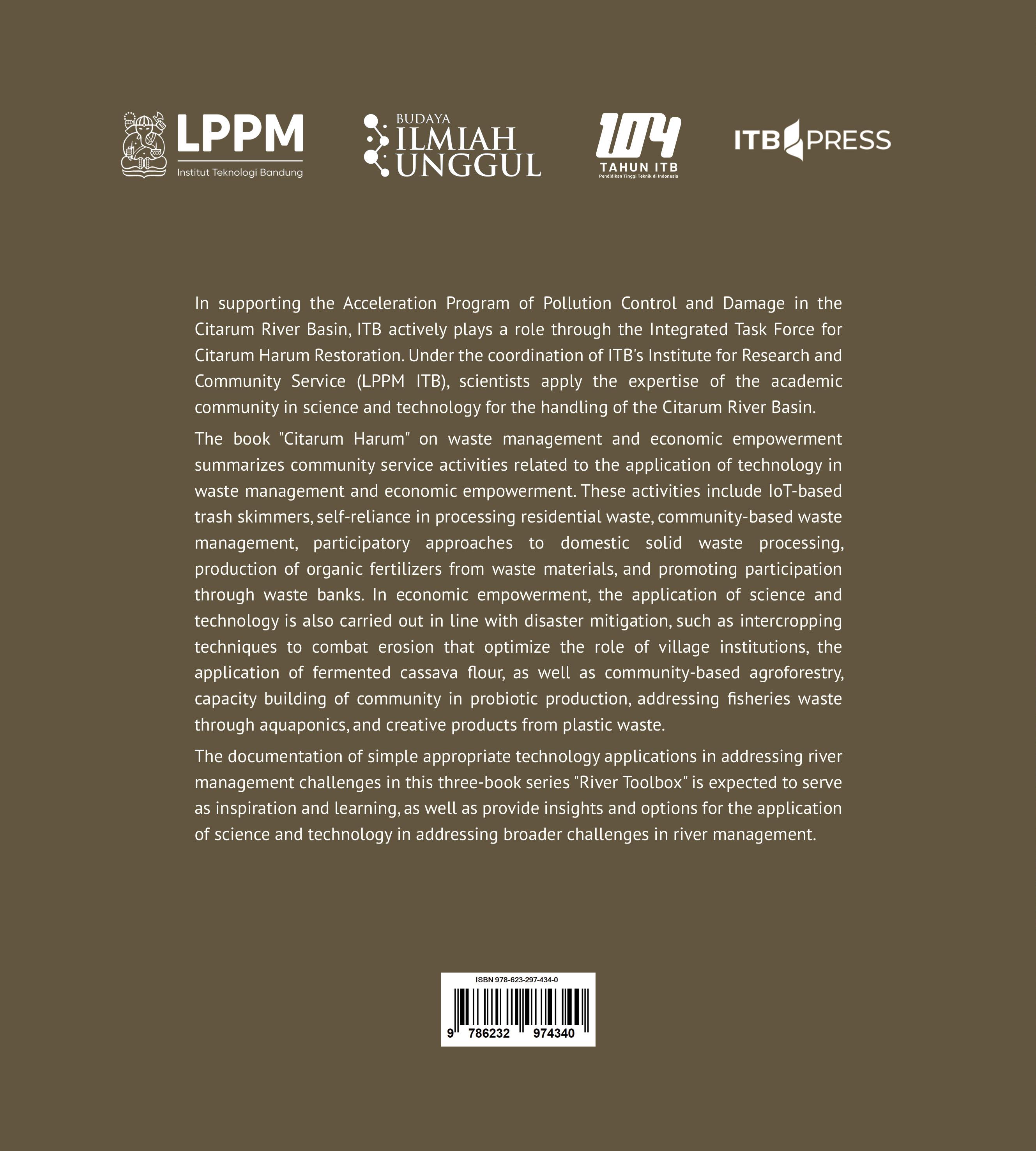
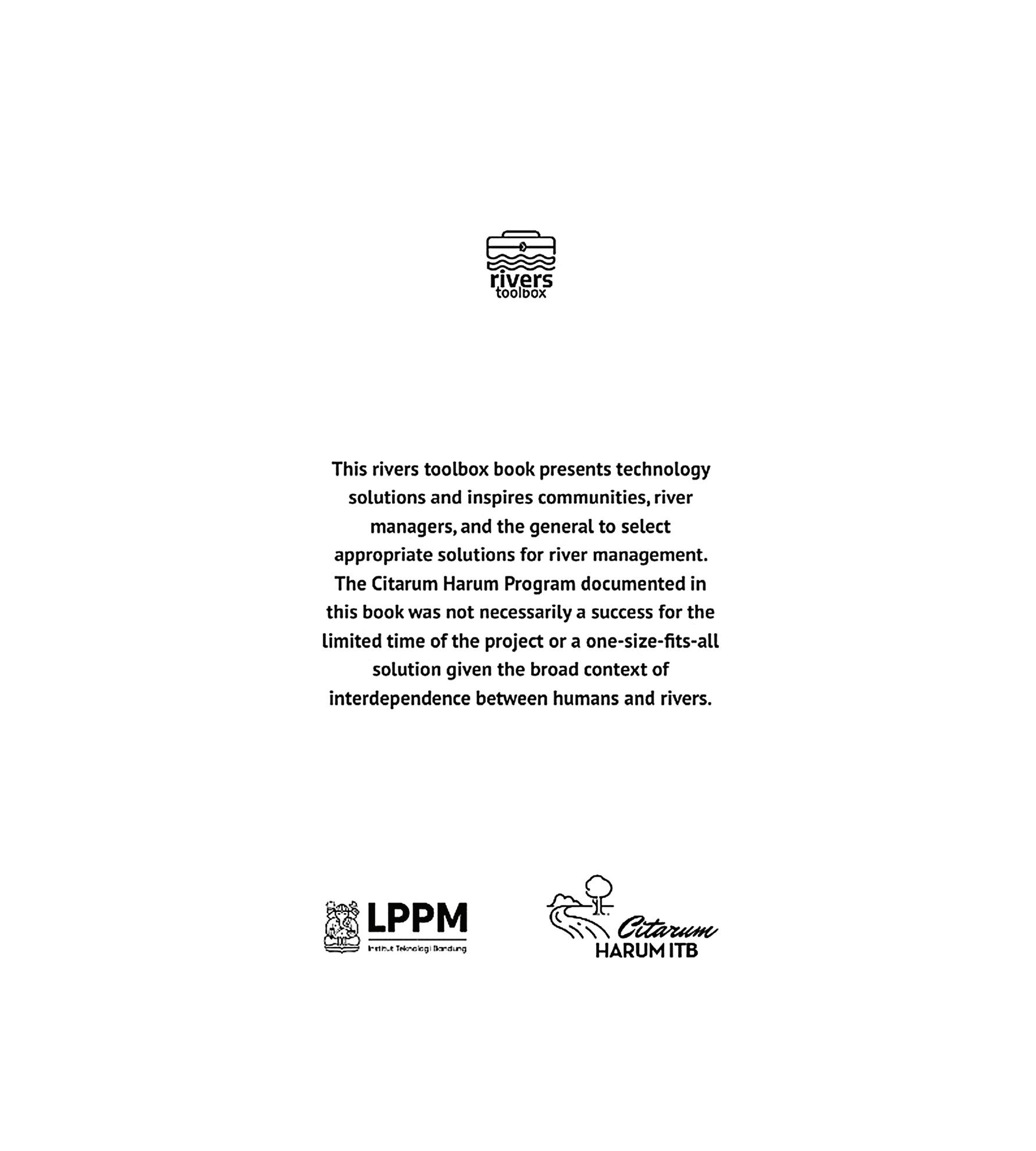
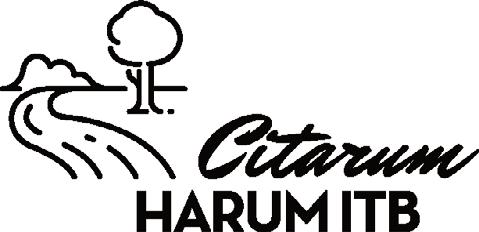
PERSON IN CHARGE:
Dr. Yuli Setyo Indartono
Chair of Institute for Research and Community Services ITB
AUTHORS:
Mindriany Syafila Qomarudin Helmy
Yuli Setyo Indartono
Deny Willy Junaidy
Rino Rakhmata Mukti
Mohammad Farid
EDITOR: Islaminur Pempasa




PERSON IN CHARGE:
Dr. Yuli Setyo Indartono
Chair of Institute for Research and Community Services ITB
AUTHORS:
Mindriany Syafila Qomarudin Helmy
Yuli Setyo Indartono
Deny Willy Junaidy
Rino Rakhmata Mukti
Mohammad Farid
EDITOR: Islaminur Pempasa
EDITORIAL TEAM:
Yudi Noorachman
Risa Anggreini
Saffanah Zahirah
PHOTOGRAPHERS:
Harry Surjana
Ferdyansyah
GRAPHIC DESIGNERS:
Irman Nugraha
ILLUSTRATORS:
Fachri Fauzy
Ali Parma
COVER:
AI
SECRETARIAT: Noviyanti
Dian Sumardiana
Nisa Refika
Linda Syah Khotimah
All Staff of General Administration, Finance, and Information System of Institute for Research and Community Services Bandung Institute of Technology (ITB)
First edition: March 2024
ISBN: 978-623-297-434-0
e- ISBN: 978-623-297-435-7
Copyright ©2024
This document is published by ITB Press. Copyright belongs to LPPM ITB - Bandung and is protected by law. Reprint, partial quoting, or using the content in any form without permission is strictly prohibited. Institute for Research and Community Services Bandung Institute of Technology (ITB)
CRCS Building 6th Floor Ganesha Street No. 10, Bandung 40132
West Java, Indonesia (022) 86010050 / 86010051
https://lppm.itb.ac.id
https://pengabdian.lppm.itb.ac.id
Email: lppm@itb.ac.id
processing by Irman Nugraha using Midjourney from the source photo of Citarum River by Harry Surjana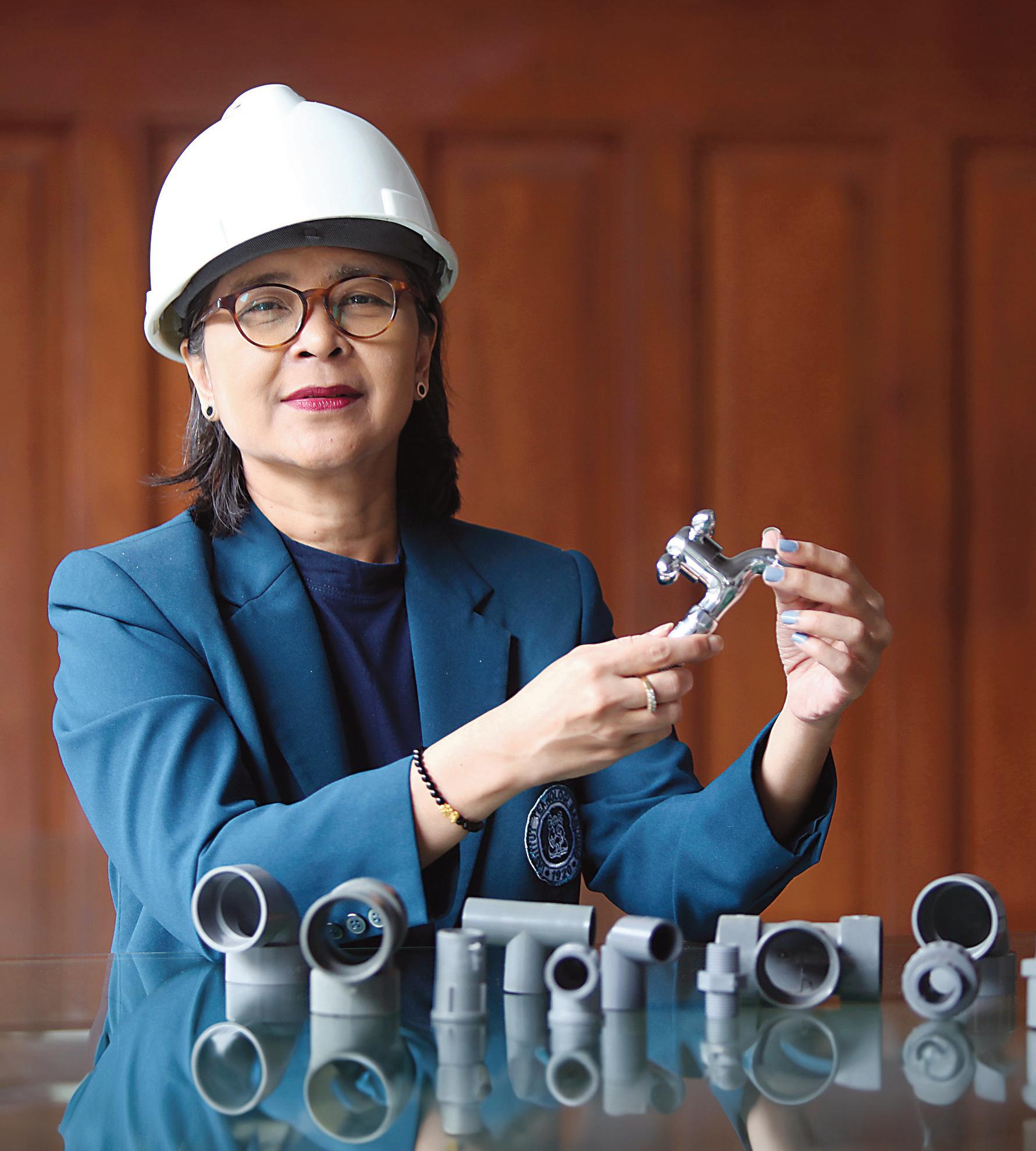
THE Citarum River, like rivers around the world, flows in tandem with the growth of human life. At its inception, the river becomes a mother, borrowing the Sundanese term "indung cai," giving birth to new ecosystems, values, and ways of life. Its flow connects humans, places, and other forms of life, nurturing civilizations along the way.
The interdependence between humans and rivers makes it a central aspect of population growth. Rivers should not be only perceived as water sources to fulfill basic needs of humans but also to become the source for energy and even to offer economic potential. Alongside growth, challenges arise in river management. To increase river loads, it is thus necessary to involve multidisciplinary approaches, encompassing social, cultural, as well as scientific and technological aspects.
When the heavy burden borne by the Citarum River triggered the national initiative of Citarum Harum, ITB (Institut Teknologi Bandung) directly became part of the effort to address this collective challenge. ITB practically formed the
Citarum Harum ITB Task Force, which became a part of this significant program.
We view the Citarum from a holistic perspective, recognizing ITB's role in responding to national interests and the dynamics of global knowledge, as well as the entire transformation process that encompasses all aspects of the Universities Tridarma: education, research, and community service. These efforts will only be meaningful if they have a tangible impact on improving the quality of life for communities.
In the context of community service, ITB scientists and engineers approach critical issues concerning the Citarum River, including water resources, sanitation, energy, infrastructure, waste management, and economic empowerment.
A variety of approaches, methods, and technologies implemented during the period 2018-2022, documented in this book, are expected to not only benefit the Citarum River but also be replicated and scaled up in overcoming the challenges of river management in Indonesia and globally.***
THE Citarum River is indeed a blessing for at least 27.5 million people who directly utilize it, especially in West Java and DKI Jakarta. Moreover, beneficiaries include those receiving around 1,880 megawatts of hydroelectric power from hydropower plants scattered across Java Island and possibly Bali as well. The Citarum serves as a source of drinking water for community of DKI Jakarta, with 80 percent of the water coming from the river, which passes through 10 regencies and cities in West Java and DKI Jakarta, in addition to irrigating 420 thousand hectares of agricultural land.
The challenges faced are equally significant. In 2018, Lieutenant General Doni Monardo (the late) invited ITB to collaborate, along with various other universities and stakeholders. We immediately embraced this invitation because ITB also shares responsibility in other environmental and social contexts. The knowledge and technology we acquire must be applicable in addressing the existing challenges, including in the sustainability of river management.
ITB has relevant fields, and many scientists conduct research related to the Citarum River or the management of other rivers. In terms of scientific disciplines, we can mention Environmental
Engineering, Biology and Life Science Technology, Chemical Engineering, Pharmacy, Geodesy, and others in improving fish and other aquatic cultivation as well as waste management.
We began with a multidisciplinary approach and developed several concepts and applied technologies, such as zero discharge for domestic waste, biofilter bioseptic tank technology, anaerobic filter tank processes adopting Johkasou technology from Japan, biodigesters, revitalization of industrial and area wastewater treatment plants, bioremediation, floating gardens, and capacity building through training and clean technology optimization.
The application of science and technology can be viewed from two perspectives: through the Citarum River and its community. There is a contribution to driving the utilization of knowledge and technology developed on campus while also generating several new research topics. ITB is not only for ITB, but ITB also benefits society, the nation, and the country.
The next development includes promoting research to become entrepreneurial. Research does not stop on paper; it grows into innovative products that can be utilized by society provide added economic and social value, as well as improving the quality of human life.***

THE Citarum Harum program has been regulated through Presidential Regulation Number 15 of 2018 concerning the Acceleration of Pollution Control and Damage in the Citarum River Basin Area. The Citarum Harum program initiated by the government requires cooperation from all parties in handling it. Several universities in West Java, including ITB, have been actively involved since 2018 in assisting with the handling of the Citarum River through the dissemination of the application of appropriate science and technology.
Specifically, ITB formed the ITB Citarum Harum Task Force led by Prof. Mindriany Syafila to coordinate the implementation of science and technology in the Citarum Harum area from 2018 to 2022. The implementation of these programs involved science and engineering students in line with the Ministry of Education, Culture, Research, and Technology of the Republic of Indonesia's MBKM program.
This program also provides opportunities for students to hone their skills according to their talents and interests by directly entering the workforce as preparation for future careers. The inclusion of the Merdeka Belajar-Kampus Merdeka (MBKM) initiative in ITB's Citarum Harum community service activities further strengthens the correlation with the development of engineering curriculum that
considers humanitarian aspects.
ITB has implemented dozens of scientific and technological works in several sectors of the Citarum Harum River Basin Area, ranging from Bandung Regency, Cianjur Regency, Bandung City, Cimahi City, West Bandung Regency, to Subang Regency. The implementation of science and technology such as bioremediation, water quality sensors including for maintaining river biota, sanitation, aquaculture, aquaponics, composting, upcycling plastic waste, automatic trash skimmers, waste bank management, as well as Black Soldier Fly (BSF), maggot cultivation, small-scale microhydro or hydroelectric power, including the cleaning of water hyacinth in the Cirata Reservoir area with gangboats to water hyacinth which is then upcycled into briquettes.
All of the above science and technology application programs are in line with the vision of Excellent Scientific Culture in the practice of community service, while also being a hallmark of community service at ITB. The implementation products are documented in a series of books covering topics such as water resources and sanitation, energy and infrastructure, as well as waste management and economic empowerment, with the hope of inspiring river managers and surrounding communities in choosing approaches and tools for river management.***

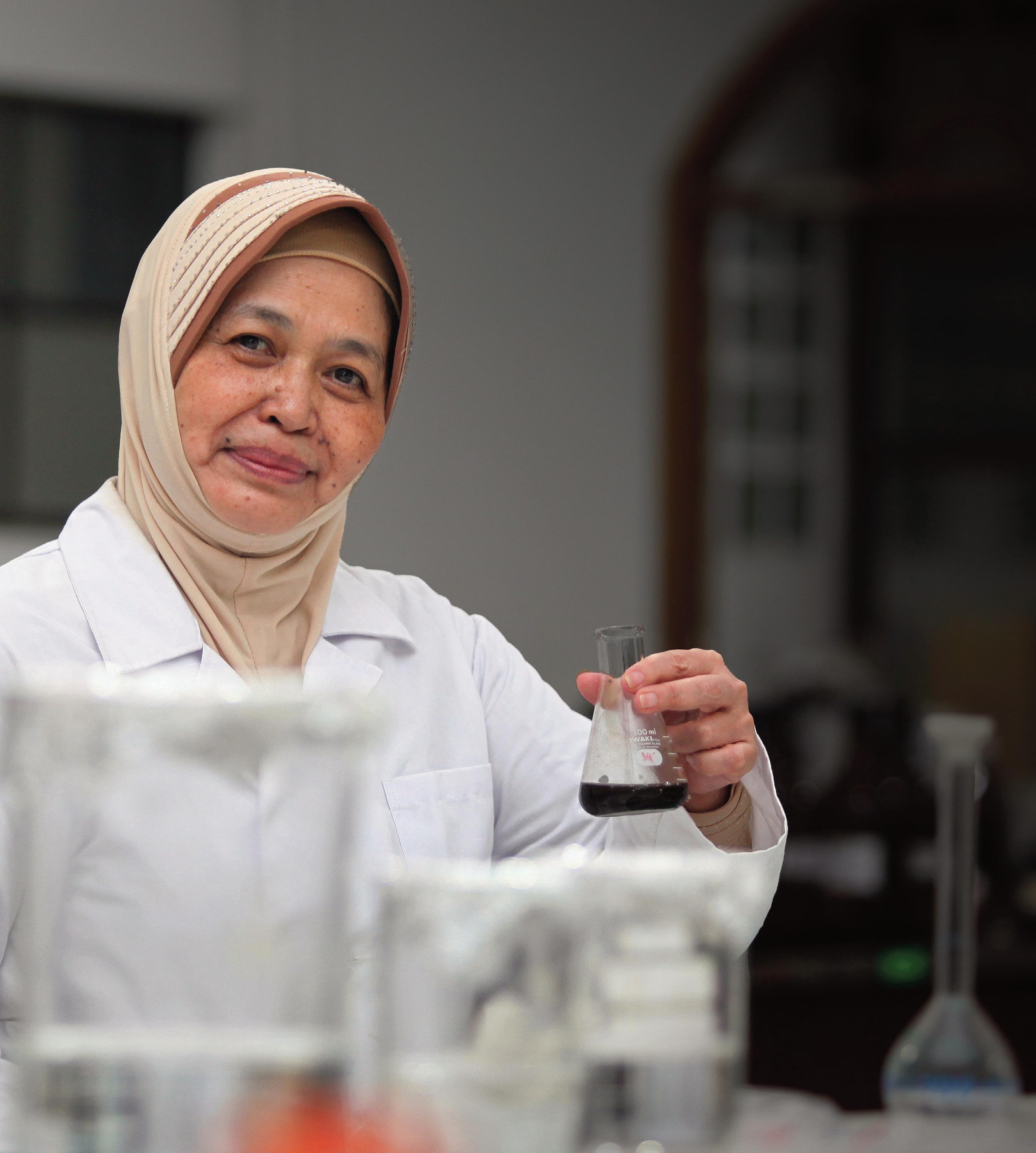
Chair of the ITB Task Force for Citarum Harum for the period 2018-2022
IN the spirit of realizing ITB as a globally respected and locally relevant institution, and in support of the Central Government and West Java Provincial Government’s program on the Acceleration of Pollution Control and Damage in the Citarum River Basin, ITB actively plays a role through the Integrated Task Force for Citarum Harum Restoration, which has been established since 2018. Under the coordination of the Institute for Research and Community Service (LPPM ITB), ITB applies the expertise of its academic community in science and technology for the handling of the Citarum River Basin, including household waste management, sanitation, critical land handling, water resources management, as well as community empowerment and education.
The rapid growth of the population and the increasing consumption levels have led to a higher generation and diversity of waste types. Based on data from the Housing and Settlement Agency of West Java Province in 2018, the waste generation in the Citarum River Basin amounted to 3512 tons per day, originating from 8 (eight) regencies/cities.
Another important approach in encouraging communities around the river to be able to preserve the river, especially is by increasing livelihoods by optimizing the waste recycling process through enhancing the capacity of communities around the river. The model of community-centered development approach emphasizes empowerment, emphasizing the fact that communities are innovative, creative, and competitive.
Therefore, the community is the most important resource for development, where the goal of community empowerment is the achievement of material and spiritual well-being. In line with this, land management in communities along riverbanks must also strike a balance between economic and environmental values. The important role of land management systems should contribute to reducing erosion into the river and provide economic value and income for the community. This development concept aims to eradicate poverty, increase community participation, utilize local wisdom understood by the local community, and focus on marginalized groups within society.
This book: "Upcycling Empowerment" summarizes several activities conducted by the ITB academic community as a tangible contribution to society in terms of the application of technology in waste management and economic empowerment. These activities include IoT-based trash skimmers, selfreliance in processing residential waste, community-based waste management, participatory approaches to domestic solid waste processing, production of organic fertilizers from waste materials, and encouraging participation through waste banks.
In the approach to economic empowerment, the application of science and technology is also carried out in line with disaster mitigation, such as through agroforestry-based community initiatives, the application of fermented cassava flour, intercropping to combat erosion by utilizing the role of village institutions, enhancing community capacity in probiotic production, addressing fishery waste through aquaponics, and the creation of creative products from plastic waste.
The Citarum River, once dubbed as the most polluted river in the world, is now starting to be addressed. During the one-year implementation of this program, optimism about revitalizing the Citarum River is considered to have grown. Some circles believe that the program has raised awareness among many parties about the importance of caring for rivers and the environment.***

Turning Organic Waste Into Biofertilizer
Prof. Dr. I Nyoman Pugeg Aryantha, Dr. Mustika Dewi, Azizah Nur Fitriani, S.Si, Sri Utami, M.Si., Rizki Arifani, S.Si. 59
Encouraging Participation through Waste Banks
Dinda Annisa Nurdiani, M.T., Dr. I Made Wahyu Widyarsana 72
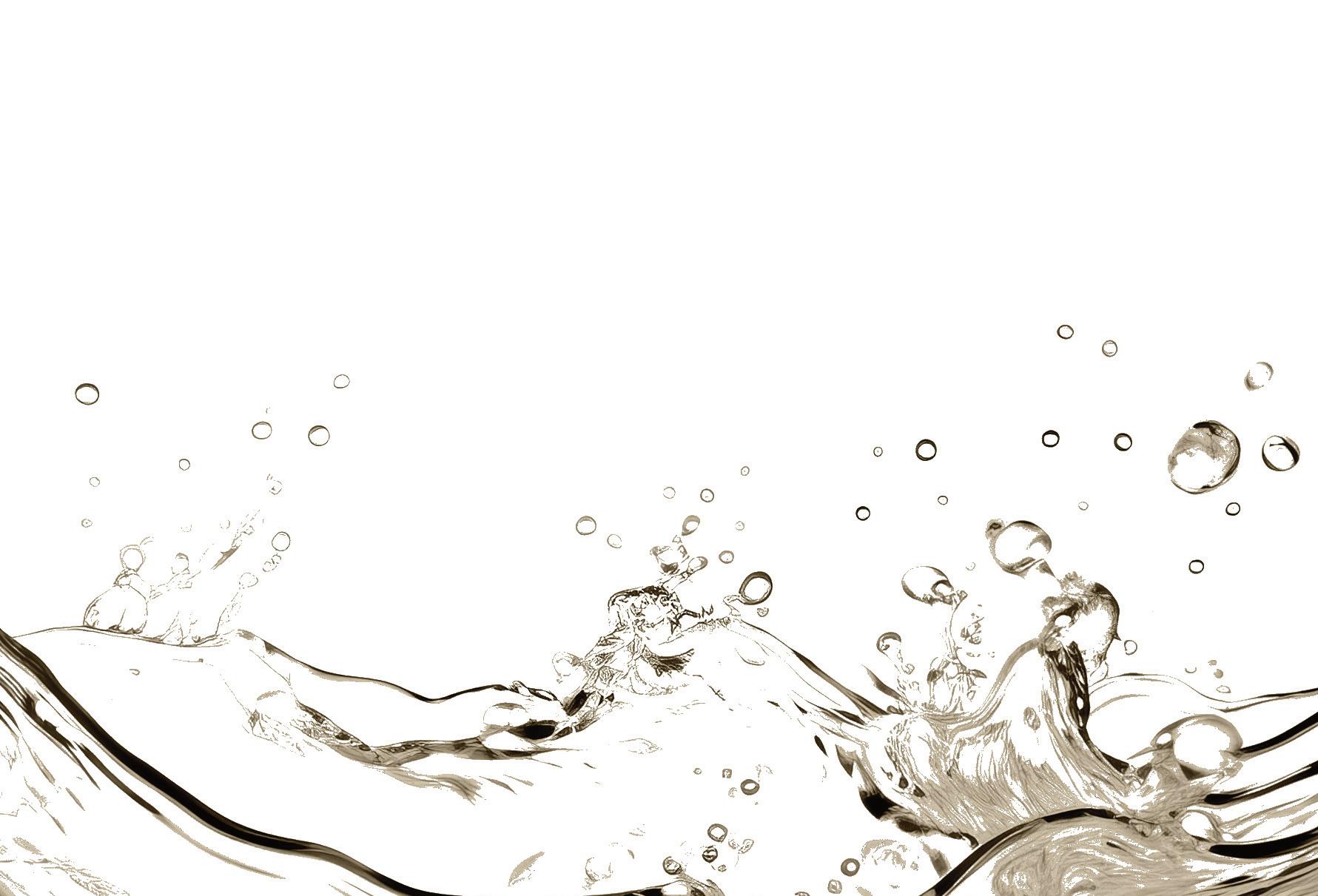
Pathmi Noerhatini, M.Si., Prof. Dicky Rezady Munaf, Ph.D., Amanna Dzikrillah L.L. AL Hakim, MAB, Yeyet Setiawati, M.P. 77
Boost the Economy with Fermented Cassava Flour
Prof. Tjandra Setiadi, M.Eng., Ph.D., Prof. Dr. Made Tri Ari Penia Kresnowati 99
Implementing Community-Based Agroforestry
Dr. Sopandi Sunarya, Prof. Endah Sulistyawati, Ph.D., Dr. Susana Paulina Dewi 109
Community Capacity Building in Probiotic Production
V. Sri Harjati Suhardi, Ph.D. 123
Addressing Fishery Waste through Aquaponics
Dr. Taufikurahman, Endra Susila, Ph.D., Andira Rahmawati, M.Si. 129
Creative Products from Plastic Waste
Meirina Triharini, Ph.D., Dr. Arianti Ayu Puspita, Prananda Luffiansyah Malasan, Ph.D. 133
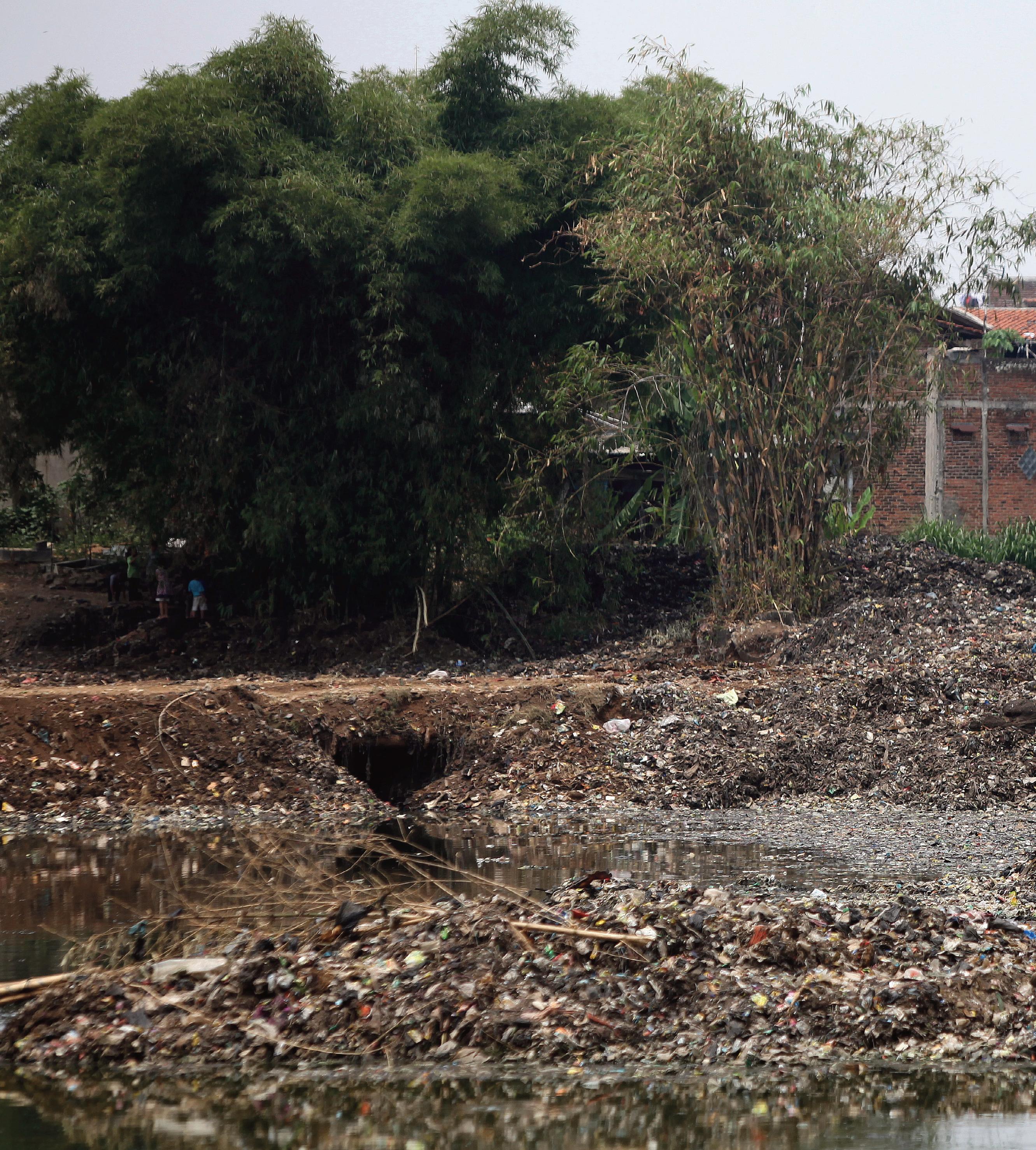
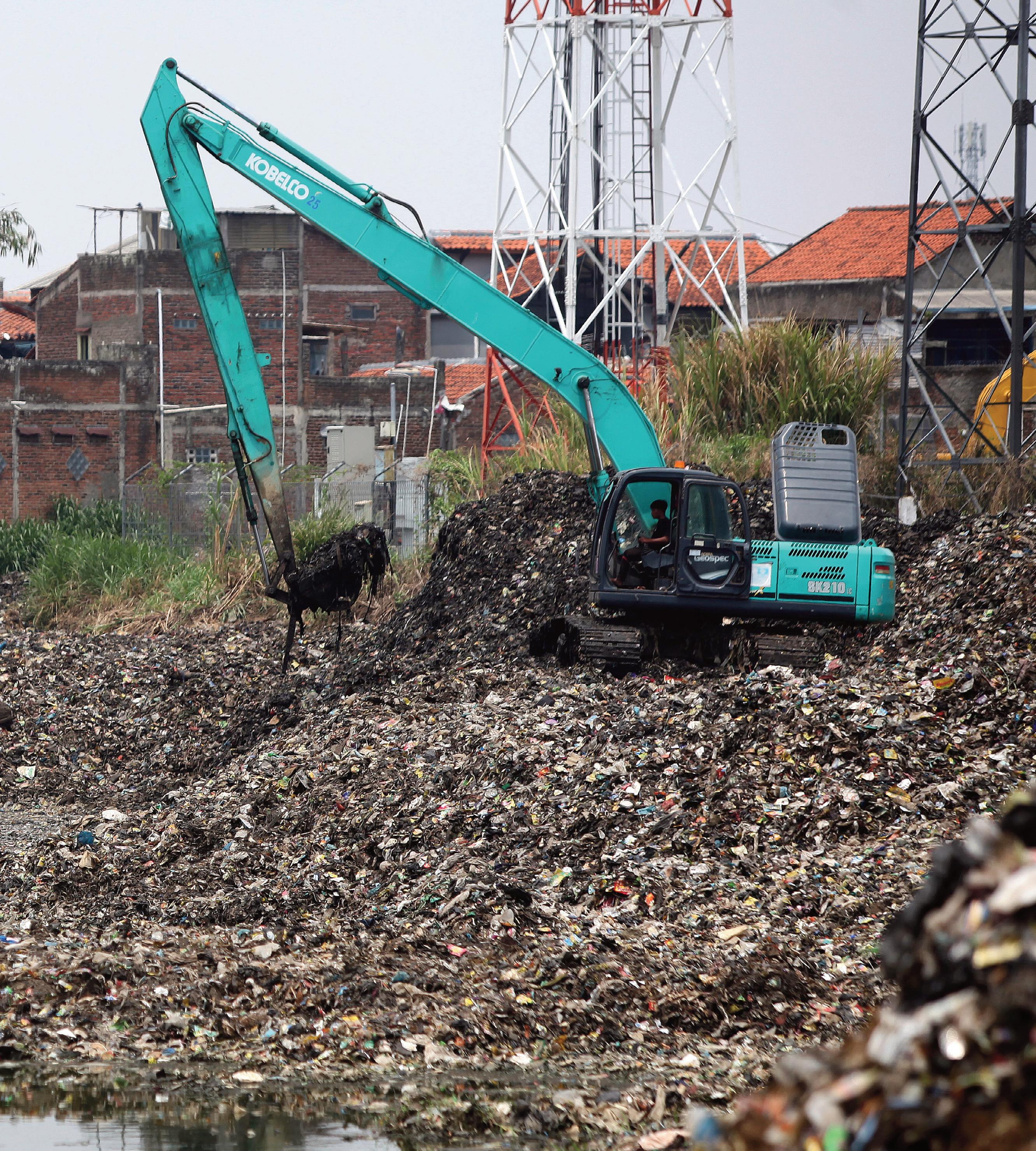
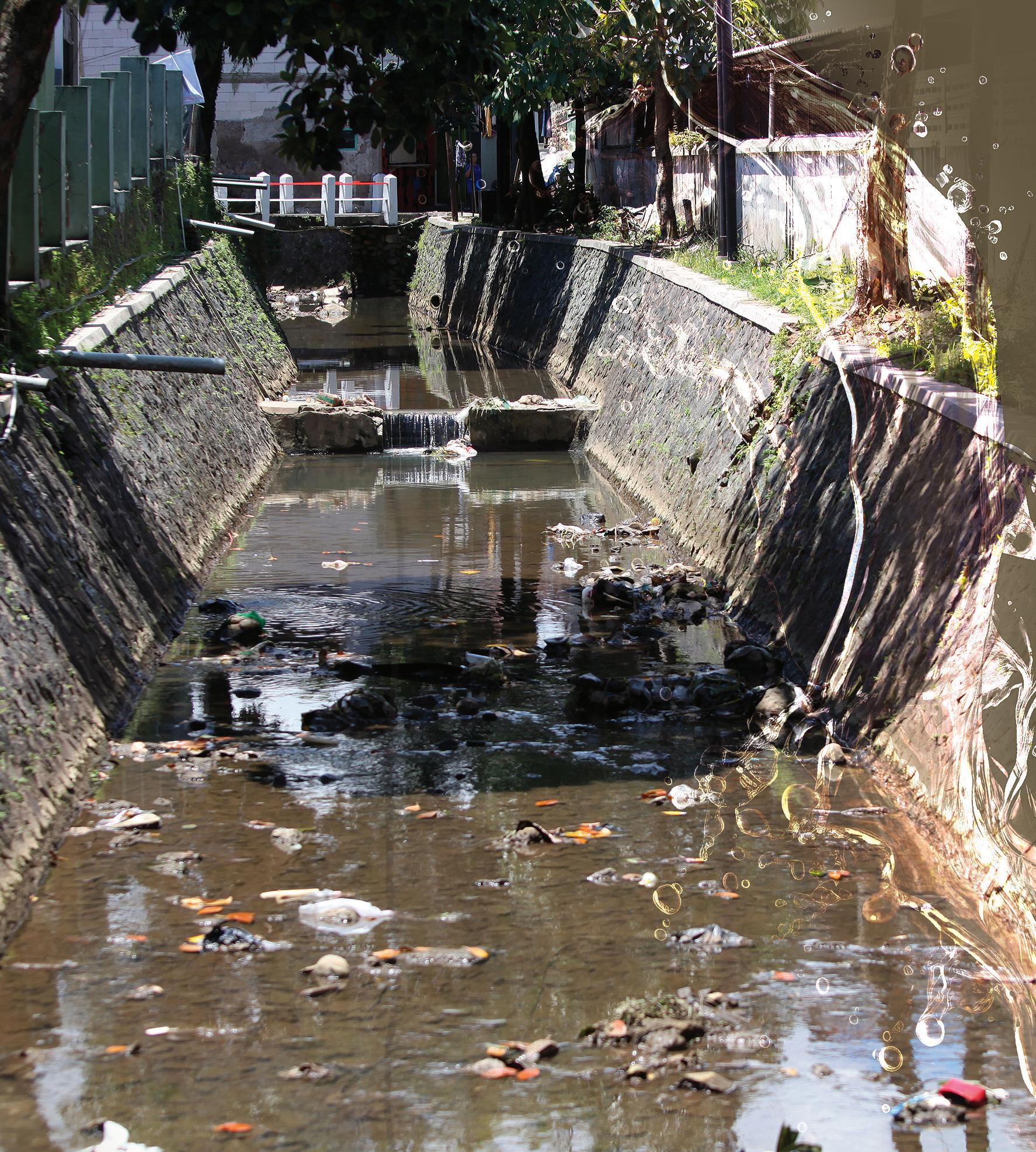
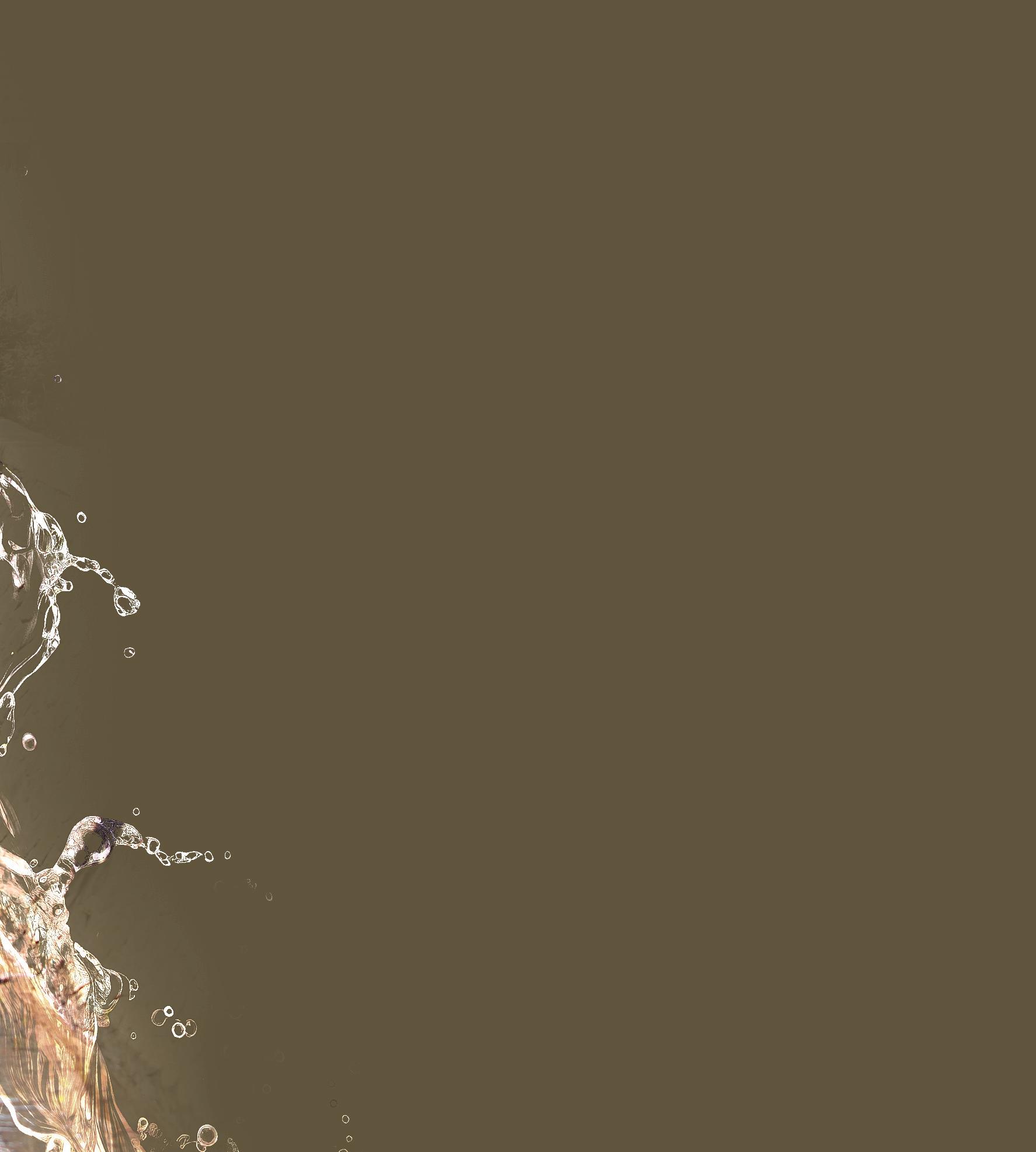
Dr. Nina Siti Aminah
Prof. Dr.Ing. Mitra Djamal
Instrumentation and Computational Physics Research Group
Faculty of Mathematics and Natural Sciences
The waste collected from the Citarum River in 2021 reached 15,838 tons per day, with plastic waste accounting for 15.35%. An essential solution to clean up the Citarum River is required, necessitating a trash skimmer capable of collecting plastic waste from the water surface. A trash skimmer has been designed to transport surface waste using a communication system based on radio frequency modules, a propulsion system consisting of conveyor and propeller circuits, and an IoT-based monitoring system comprising capacity warning, power monitoring, and real-time location tracking circuits.
According to data from the National Waste Management Information System (SIPSN), in 2021 Indonesia generated a total of 28.69 million tons/year of waste, with 15.6% of it being plastic waste. West Java, as the province with the largest population in Indonesia, contributes the most waste. Inadequate waste management has resulted in many residents disposing of waste into rivers, including the Citarum River.
In 2021, the waste collected from the Citarum River reached 15,838 tons per day, with plastic waste accounting for 15.35%. Therefore, a trash skimmer is needed to collect plastic debris on the water surface as a solution to clean up the Citarum River.
In this study, a trash skimmer capable of collecting debris on the water surface is designed. Utilizing a communication system based on radio frequency modules, the propulsion system consists of a conveyor and propeller assembly, and an internet of things-based monitoring system comprising a capacity warning system, a power monitoring system, and a real-time location tracking system.
The entire prototype weighs 42 kg. To supply electricity, this trash skimmer utilizes a 50 WP solar panel. The communication system components of the trash skimmer’s signal sender consist of a joystick circuit and transmitter, while the signal receiver part of the trash skimmer’s communication system is connected to the trash skimmer’s drive system and waste collection system.








Communication system scheme for trash skimmer, signal transmitter part, and signal receiver part.
The propulsion system of the trash skimmer is designed to maneuver the trash skimmer body on the water surface. This system provides commands for forward, rightward, and leftward movement. The debris transport system is responsible for conveying the debris on the water surface towards the storage compartment located within the trash skimmer body.
This system is also equipped with real-time monitoring. The monitoring system consists of monitoring the remaining power to operate the trash skimmer, warning system for waste carrying
capacity, position monitoring system, and the transmitter-receiver range system of the trash skimmer. Through this system, users can monitor the range, waste capacity, remaining power, and position of the trash skimmer by accessing the Grafana API dashboard.
During the testing process, the entire propulsion system of the trash skimmer operated smoothly. The trash skimmer was able to navigate in calm waters at a speed of 0.2 m/s. The maximum trash load capacity per operation was 6.5 kg, or a maximum trash volume of 0.016 m3

The trash skimmer that has been constructed has the following size and dimensions:
Length: 100 cm
Width: 80 cm
Height: 60 cm
Mass: 42 kg
Prototype of the trash skimmer.Propulsion System Circuit



Length : 100 cm
Width : 80 cm
Height : 60 cm
Weight : 42 kg
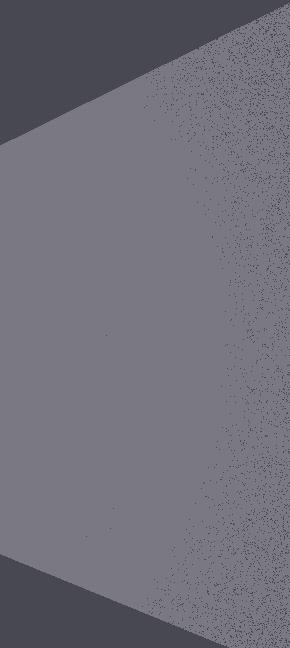





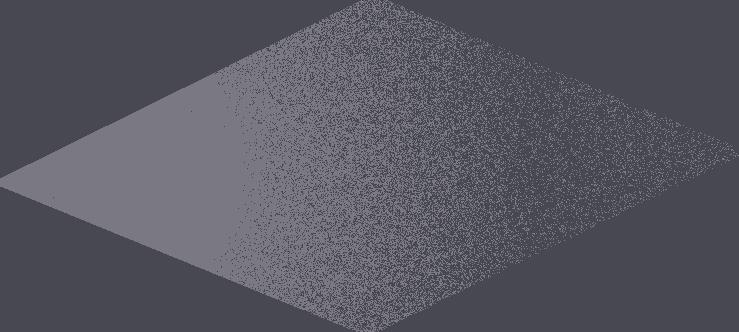
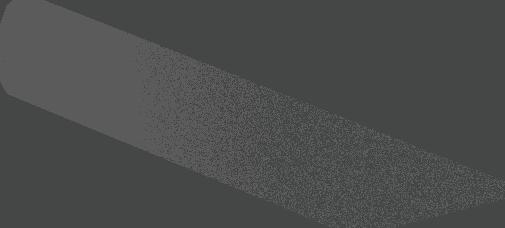




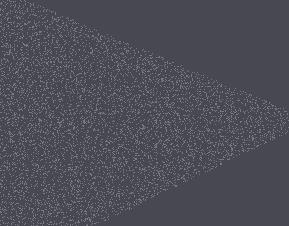

To supply power, this trash skimmer utilizes a 50 WP solar panel. The power system circuit consists of several components, namely the solar panel, solar charge controller, battery, and the trash skimmer itself.
Power supply circuit.
Propulsion System-Transmitter Circuit consisting of Arduino Uno, joystick module, and RF-transmitter module.
The communication system components of the trash skimmer’s signal sender consist of a joystick circuit and transmitter. The signal receiver part of the trash skimmer’s communication system is connected to the trash skimmer’s drive system and waste collection system. A 433 MHz RF module is used for data communication between the joystick connected to the receiver located on the prototype body.
The propulsion system of the trash skimmer functions to operate the body of the skimmer on the water surface (propeller assembly) and to drive the conveyor for trash collection on the skimmer (conveyor assembly).
The propeller and conveyor circuits are connected to the trash skimmer’s communication system (receiver). The drive-receiver system consists of 2 ESC 60A motors, 2 brushless SSS 56114 KV500 motors, and 2 propellers. The power source used for the drive system comes from the battery.
A series of drive-receiver systems consisting of Arduino Uno, RF-receiver module, conveyor motor, propeller motor, ESC, and L298N module.
The RF-receiver module will receive messages from the RF-transmitter module that have been transmitted. The forward command from the transmitter will activate the propeller motor simultaneously, causing the trash skimmer to move forward. The rightward command will activate the left propeller motor, while the right propeller motor will deactivate, causing the trash skimmer to turn right. The command to turn left will activate the right propeller motor, while the left propeller motor will deactivate, causing the trash skimmer to turn left. The command to activate the conveyor will operate the conveyor motor, allowing it to transport waste from the water surface to the trash collection area on the trash skimmer.
The system is also equipped with real-time monitoring. The monitoring system consists of a power monitoring system to track the remaining power to operate the trash skimmer, a capacity warning system for trash collection, a position monitoring system, and a range system for the trash skimmer transmitter-receiver. The trash skimmer monitoring system is designed to measure the robot’s condition parameters during operation. The components used for this system include the NodeMCU ESP8266 microcontroller, MCP3008 ADC module, DC voltage sensor 0-25 V, water level sensor, HC-SR04 ultrasonic sensor module, buzzer, and GPS sensor module GPS NEO-6M. The monitoring system is assembled as follows.
Sensors are attached to the NodeMCU ESP8266. In this circuit, an ADC MCP3008 is added to provide additional analog pins because this study utilizes four analog sensors, whereas the default analog pin on the NodeMCU is only one. Subsequently, the circuit will be powered by connecting the NodeMCU to a 5V voltage source. Then, the process of transmitting sensor data to the database and visualizing it using the Grafana program takes place.
Flowchart of the waste skimmer monitoring data transmission system.
The sensors will send data through NodeMCU, which will then transmit the data to the server using the MQTT protocol with the Mosquitto broker. Next, the Raspberry Pi will act as a subscriber or data receiver using the Node-RED program.
In the Node-RED program, the data is sent to the InfluxDB database. Then, the monitoring system uses the Grafana program with the database created from InfluxDB.
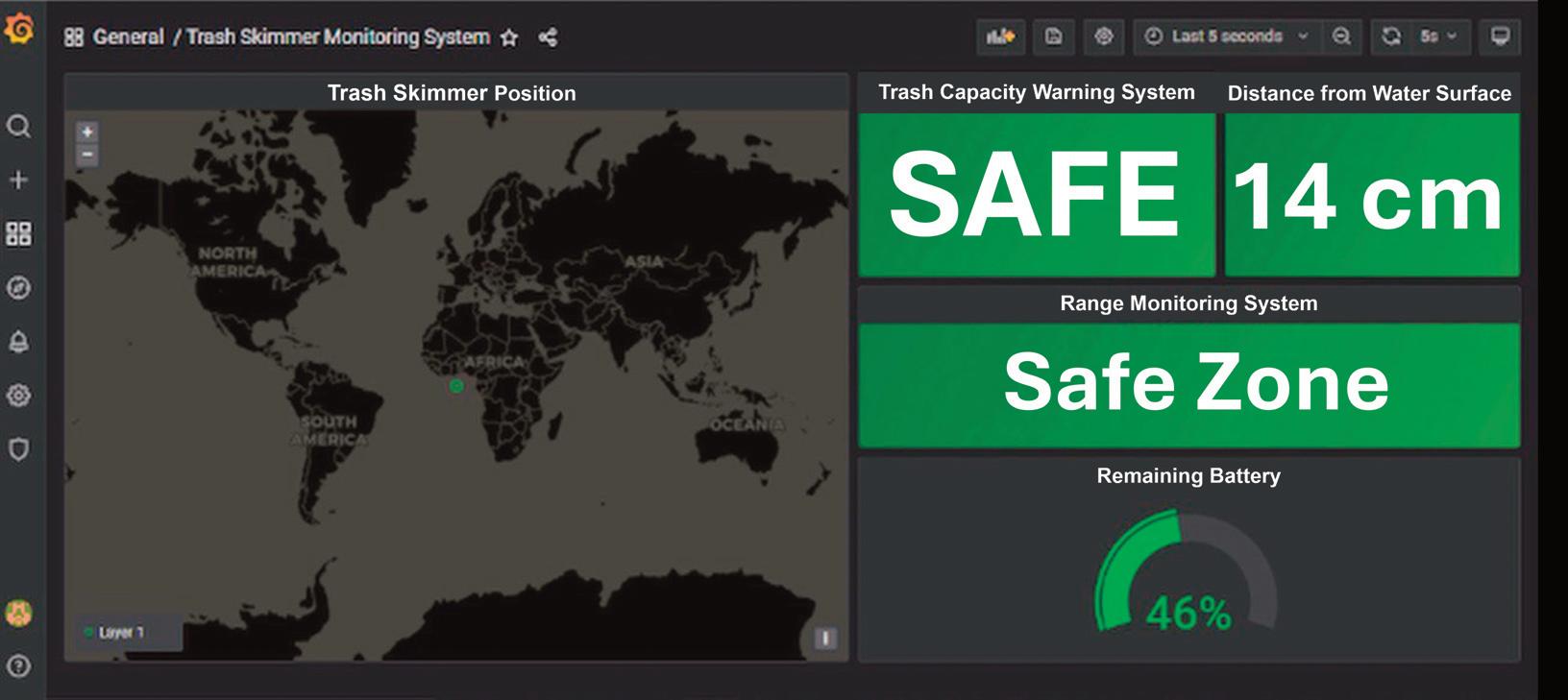
Through this system, users can monitor the range, waste capacity, remaining power, and position of the trash skimmer by accessing the Grafana API dashboard. The left section displays real-time location tracking using the NEO-6M GPS module, while the top right section contains the waste carrying capacity warning system.
The trash capacity warning system has several conditions based on the water level sensor values received in the database. Below are the results displayed by the trash skimmer’s capacity warning system on the Grafana program.
Waste capacity warning system: safe condition, warning condition, and full condition.

Meanwhile, the data for monitoring the power system of the trash skimmer is obtained through voltage sensors sent to the database. The 20% remaining power limit is chosen because it is considered capable of returning the trash skimmer from the middle of the river to its starting point. Below are the results displayed by the power monitoring system of the trash skimmer on the Grafana program.

Monitoring power system of the waste skimmer on Grafana: (a) at 46%, (b) at 30%, & (c) at 15%.
The range warning system for monitoring the trash skimmer is based on changes in the time of flight values that are converted into distances. If the distance is too far, it will give a warning to return. This system prevents communication from being disrupted when the trash skimmer is in use.

Range monitoring system on Grafana program: (Top) Safe zone condition and (Bottom) Far zone condition.
During the testing process, the entire trash skimmer propulsion system has been functioning well. The trash skimmer is capable of moving in calm waters at a speed of 0.2 m/s. The maximum waste mass that can be carried is 6.5 kg for each operation, or a maximum waste volume of 0.016 m3
The output produced is a laboratory-scale prototype and has been presented at the 6th International Conference on Technology and Social Science 2022 (ICTSS 2022) on December 25-28, 2022, online in Kiryu, Japan. Currently, a prototype of the product scale is being developed and will be tested in the Ciherang River together with the West Java Provincial Water Resources Agency.***
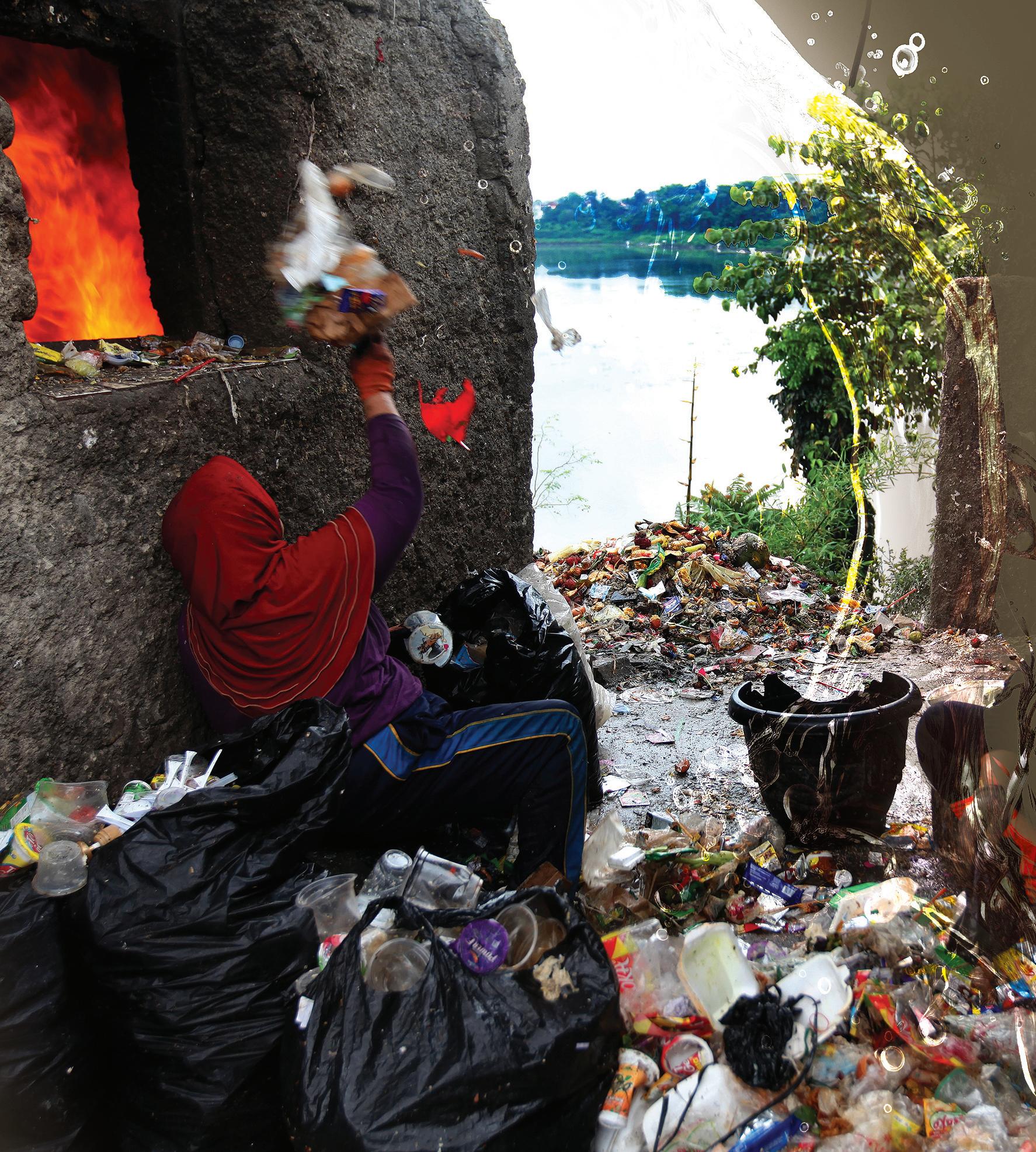
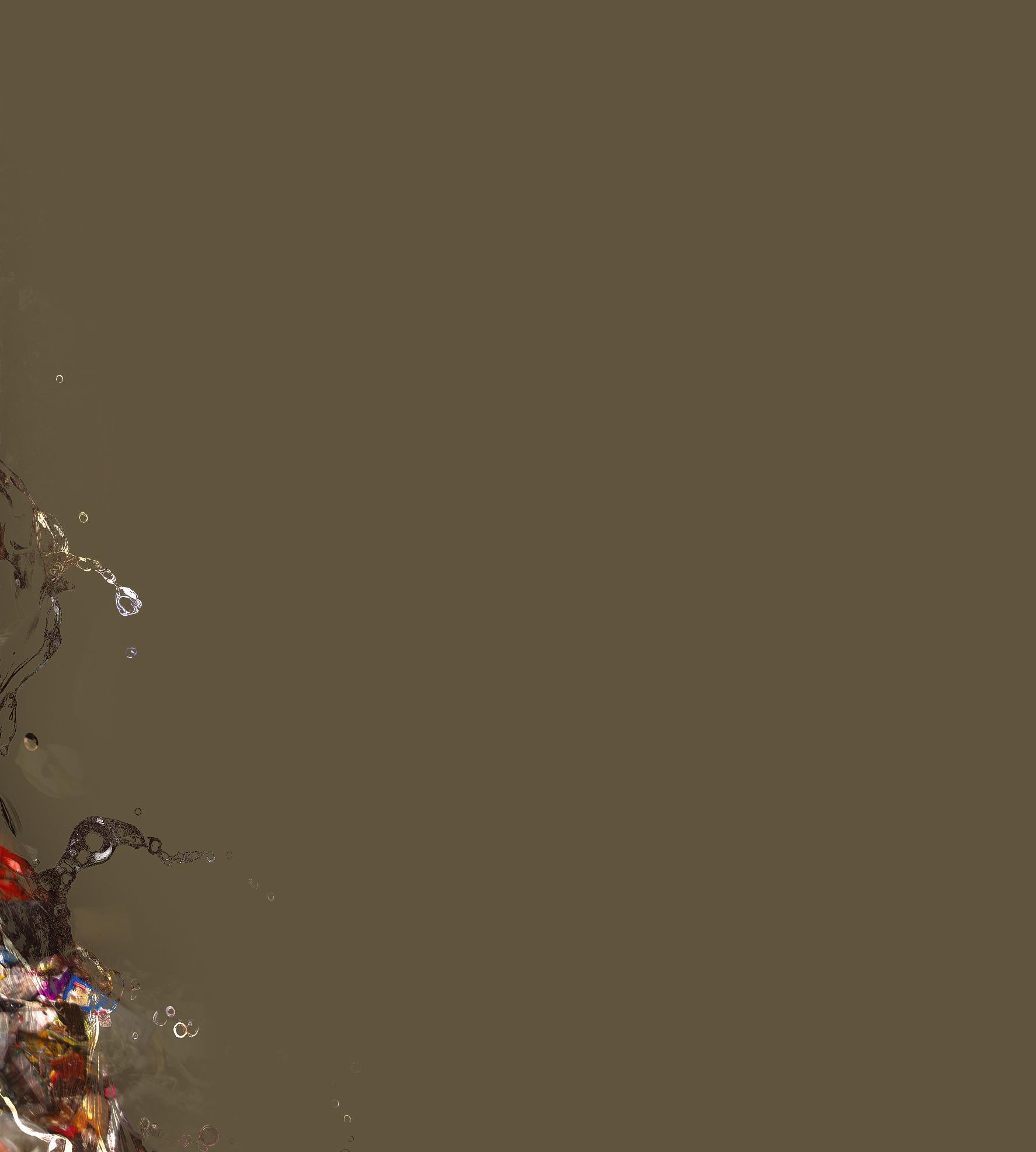
Dr. I Made Wahyu Widyarsana.
Air and Waste Management Research Group
Faculty of Civil and Environmental Engineering
As part of this series of activities, a concept for waste management planning is developed, including the design of self-contained waste treatment facilities in each village called Recycling Centers (Pusat Daur Ulang - PDU). In addition, providing socialization and education to district and village officials, communities, waste bank managers, informal sectors, and local sanitation workers. As a physical aid implementation, a number of example units of small-scale composters and biodigesters are built.
In addition to being utilized as a raw water source for drinking water, the Citarum River is also used as an irrigation water source and a power plant for Java and Bali Island. The Citarum River Basin flows through 13 regencies/cities and is currently experiencing pollution and environmental damage, resulting in losses in the economic, social, health, ecosystem, and environmental resource sectors.
The high level of domestic and industrial activities is the main cause of the pollution of the Citarum River. Pollution of the Citarum River is caused by industrial pollution, agricultural waste, livestock waste, fishery waste, domestic waste, and household garbage.
Based on regulation No. 18/2008 on Waste Management, waste is the residue of human daily activities and/or natural processes in solid form. The rapid growth of the population and the increasing level of consumption result in the increasing volume and diversity of waste generated.
Based on data from the Department of Housing and Settlements of West Java Province in 2018, the waste generation in the Citarum River Basin amounted to 3512 tons per day from eight regencies/cities. About 77.7% of the waste generation comes from the cities of Bandung, Cimahi, and the regencies of Bandung and Bandung Barat. The second largest waste generation comes from Karawang Regency, accounting for 12.7%, while the remainder 9.6% comes from Bekasi Regency, Purwakarta Regency, and Cianjur Regency.
According to the Action Plan for Pollution Control and Damage Control of the Citarum River Basin 2019-2025, the strategy to address the influx of waste into the Citarum River consists of two major components: addressing waste in the Citarum River itself and addressing household waste that is currently unmanaged promptly and comprehensively. There are 629 priority villages spread across the Citarum River Basin.
The priority villages are those situated along the banks of the Citarum River. Pameungpeuk District has four priority villages: Langonsari Village, Sukasari Village, Rancatungku Village, and Rancamulya Village. Therefore, there is a need for a proposed concept of self-managed residential waste management tailored to the current conditions to reduce the waste entering the Citarum River.
The waste generation in each research area is as follows: Sukasari Village 0.21 kg/person/day, Langonsari Village 0.18 kg/person/day, Rancatungku Village 0.17 kg/person/day, and Rancamulya Village 0.23 kg/person/day.
The waste composition for each area is uniform, with organic waste dominating at 54.19-58.12%, plastic waste at 19.6-23.09%, and the remainder below 9%.
Organic waste characteristics include a moisture content of 77.99% and a C/N ratio approaching 30. On the other hand, “inorganic” waste characteristics comprise a moisture content of 21.15% and a volatile content of 56.21%.
Waste management practices in the research area generally involve burning. About 51% of respondents use waste collection services, while the remaining 49% burn their waste independently. The waste collected by waste collectors is also burned at the collection points.
Based on the questionnaire responses, only 15% of the community engages in waste sorting, separating economically valuable waste from non-valuable waste, while the remaining 85% of respondents do not participate in waste sorting.
Based on the sampling results, laboratory testing, and calculations, it is necessary to have independent waste management by the community. Planning for the construction of Recycling Centers (Pusat Daur Ulang - PDU) is one of the alternative systems for independent waste management that can be implemented. To maximize waste management, decentralized waste management is designed, with each village planned to build one PDU.
Organic waste is processed using the BSF method, followed by shredding, compaction, and plastic pellet production. Waste without value is incinerated using an incinerator. Based on data analysis, the implementation of waste management technologies includes biodigesters and Takakura composters. In addition to technology, there is also a socialization effort targeting waste bank managers, village officials, RT, RW, and the community. Socialization includes training sessions, modules, and the distribution of leaflets, brochures, and visual aids.
The composition of waste for each area is uniform, dominated by organic waste at 54.19-58.12%, plastic waste at 19.6-23.09%, and the rest is below 9%.
The waste composition for each area is uniform, with organic waste dominating at 54.19-58.12%, plastic waste at 19.6-23.09%, and the remainder below 9%.
The installation of waste management technologies such as household-scale composters and biodigesters is carried out by local community to contribute to the local economy. Additionally, these composters and biodigesters made from recycled materials are adorned with paintings to attract the attention of community and avoid giving the impression of dirtiness associated with the technology.
The implementation of waste management technology is aimed at the community, especially those living near water bodies, to prevent waste from entering the water bodies. The technology handover process is conducted with the local government first, then it is handed over to waste management authorities.
Waste management awareness is disseminated to the community, particularly to waste management facility staff and waste bank operators who will utilize composters and biodigesters. The provided awareness includes the fundamentals of waste management, introduction to the technology, and instructions on how to use the technology. The awareness sessions are conducted gradually and directly to the staff to ensure effective information delivery.
Composter is a household organic waste processing tool through composting by utilizing containers buried in the ground. Composter can process kitchen waste such as food scraps (not kitchen waste in the form of food packaging). Kitchen waste will undergo decomposition with the assistance of microorganisms from the waste and those present in the soil.
The capacity of the composter ranges from 60 to 100 liters (200 kg of waste) and can operate for waste storage for 7-12 months per household (5-6 people). The composting process takes 4-6 months after being fully filled.
A biodigester is a device used to convert wet waste into biogas, which can then be utilized for electricity generation.
Benefits of processing using a biodigester:
● Can save electricity costs by using biogas fuel from the processing results using a biodigester.
● Free from the dangers of improper waste management.
● The sludge residue from the processing can be utilized as plant fertilizer.
What kind of waste can be processed using this method?
Wet waste (organic), examples:
● Food scraps
● Animal waste
● Agricultural waste
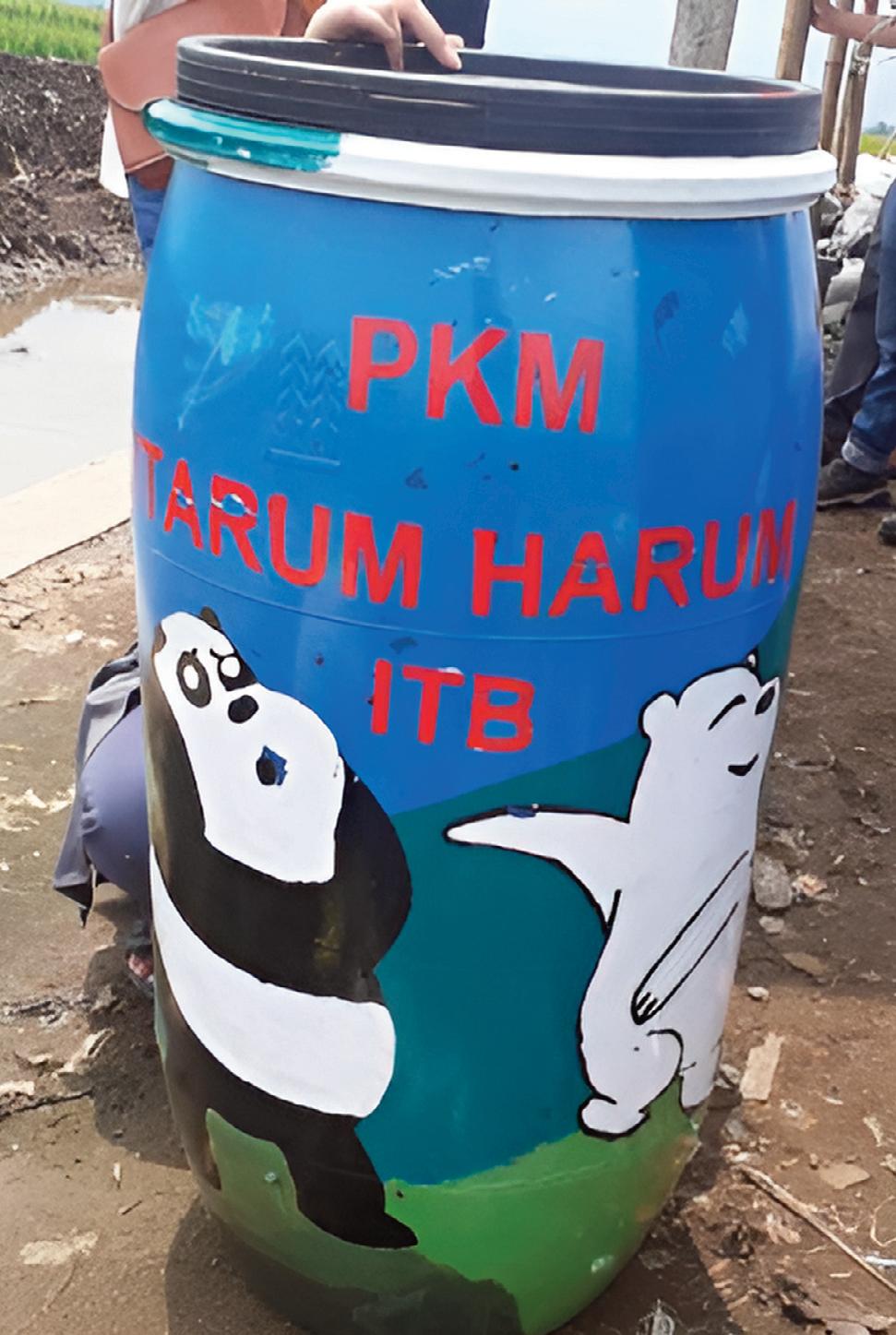
Uses of biogas:
● Source of gas for cooking
● Source of gas for water heating
● Generating electricity
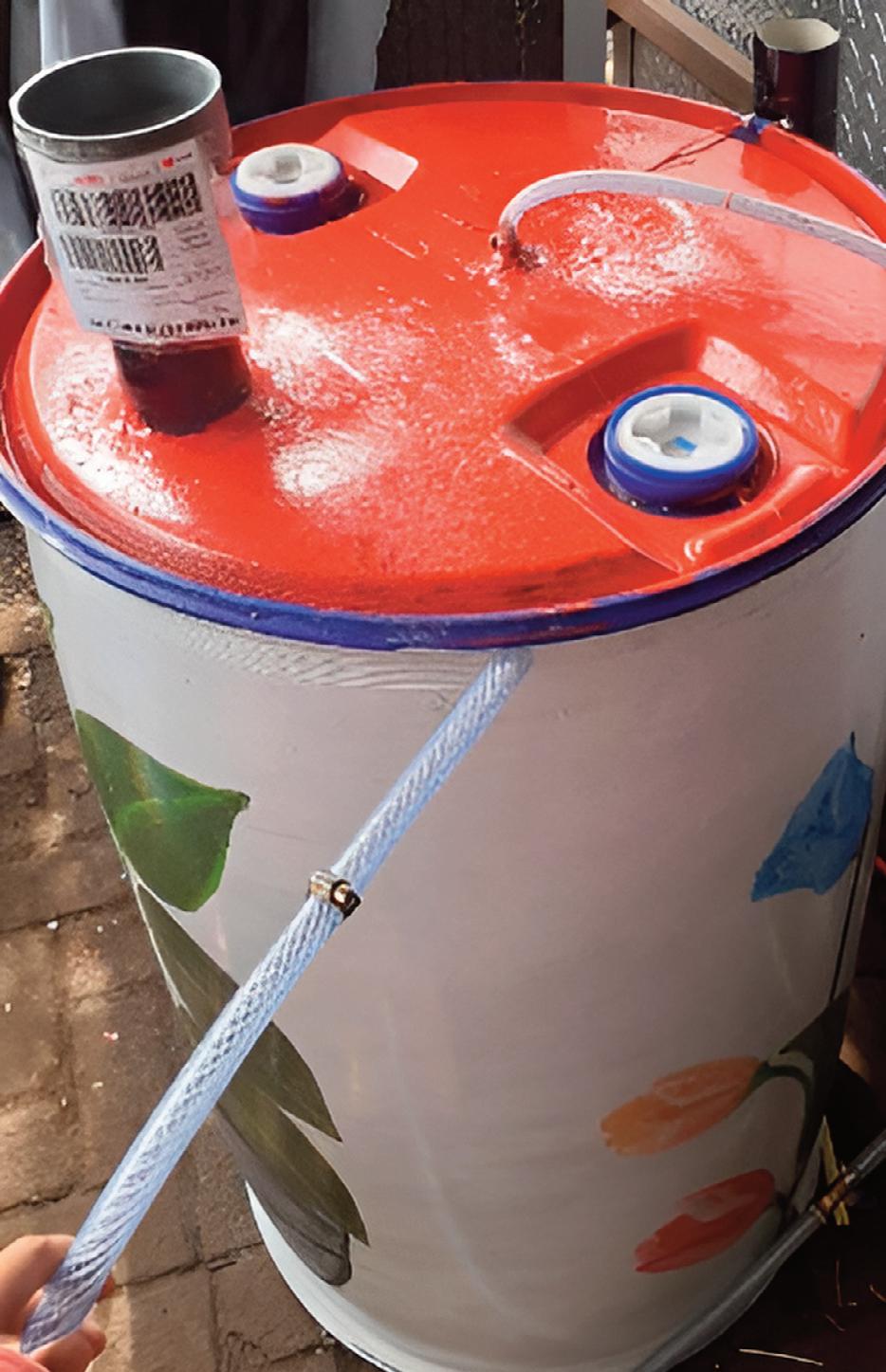
Self-contained waste management technology: composters and biodigesters.
Organic waste is chopped Organic waste is put into the biodigester tank

Anaerobic fermentation process of organic waste Anaerobic fermentation process --> the process of breaking down wet waste into biogas without the assistance of air (the biodigester tank is made airtight and sealed)
The gas storage tank for the produced biogas is stored at the top of the fermentor, right above the fermented biomass
Fermentor
In this container, biomass is broken down by microorganisms in conditions without light and oxygen. This fermentation process produces methane and carbon dioxide - biogas. The fermented biomass is stored in a fermentation residue warehouse for further use as high-quality fertilizer.i


Composition of waste in the Citarum River Basin



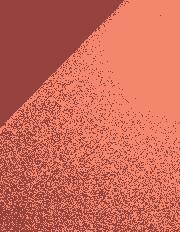
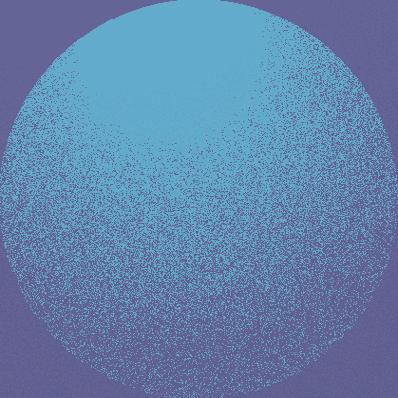
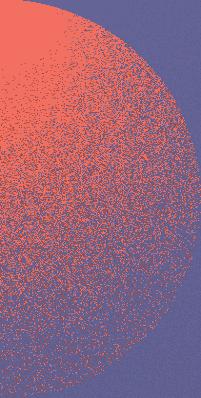
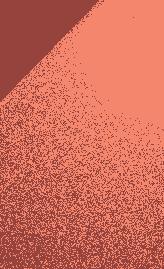



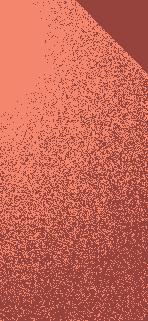













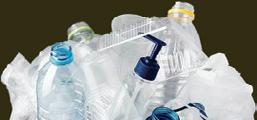
ORGANIC NON-ORGANIC
Separate organic and non-organic waste
Composter Scheme

Composter lid
Place the finely chopped organic waste into the composter i
Composter seal
Spray the organic waste with bioactivator

Cut organic waste into small pieces, about 1-2 cm
Compost retrieval door
Composting area
Seal the composter tightly

Liquid storage tank

Let it sit for +14 days for the composting process to occur



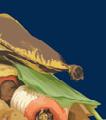













 Faucet for draining liquid
Faucet for draining liquid


Dr. I Made Wahyu Widyarsana
Air and Waste Management Research Group
Faculty of Civil and Environmental Engineering
The high level of domestic and industrial activities is the main cause of pollution in the Citarum River. Therefore, ITB (Institut Teknologi Bandung) is preparing activities for two targets: sustainability targets in villages that have been previously developed in the Citarum River area, namely Kampung Tarikolot, and other villages around the Citarum River basin, namely Cinangsi and Lake Cirata. Kampung Tarikolot requires a proposed concept for independent waste management and an example of its implementation that is suitable for current conditions to control/reduce waste dumped into the Citarum River.
The application of various technologies ranging from household waste processing, aquaculture management, bioremediation processing to water quality sensor monitoring is necessary for sustainability in its handling. According to the Action Plan for Pollution Control and Damage Control of the Citarum River Basin 2019-2025, the strategy to address the influx of waste into the Citarum River consists of two major parts, namely addressing waste in the Citarum River and promptly and thoroughly addressing household waste that is currently unmanaged.
There are 629 priority villages scattered across the Citarum River Basin. Cinangsi Village, Cikalongkulon District, Cianjur Regency, is included in the management of the Citarum Harum Task Force Sector 12 Subsector 3. The problem formulation of this activity includes determining waste generation, density, composition, and characteristics of waste, as well as analyzing its potential; determining the characteristics of the community in managing their waste through questionnaires, interviews, and observations; planning for residential waste management; determining the design of residential waste management; implementation of the concept of independent waste management technology.
In order to enforce Presidential Regulation Number 15 of 2018 dated March 14, 2018 concerning the Acceleration of Pollution Control and Damage Control of the Citarum River Basin, the Citarum Harum Task Force Sector 12 Sub-sector 3 in Cikalong Kulon covers the coordination of management of the Cikundul River tributary located in Cinangsi Village, Cikalongkulon District, Cianjur Regency, West Java Province.
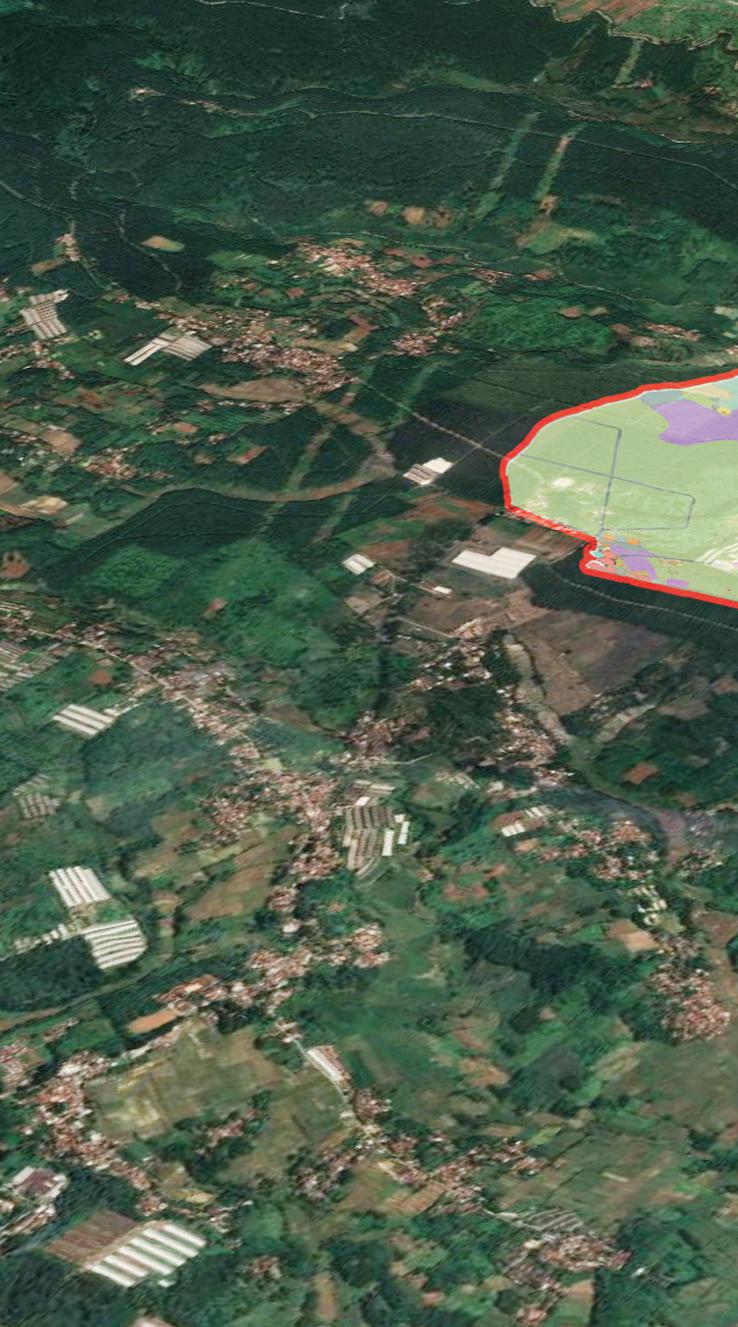
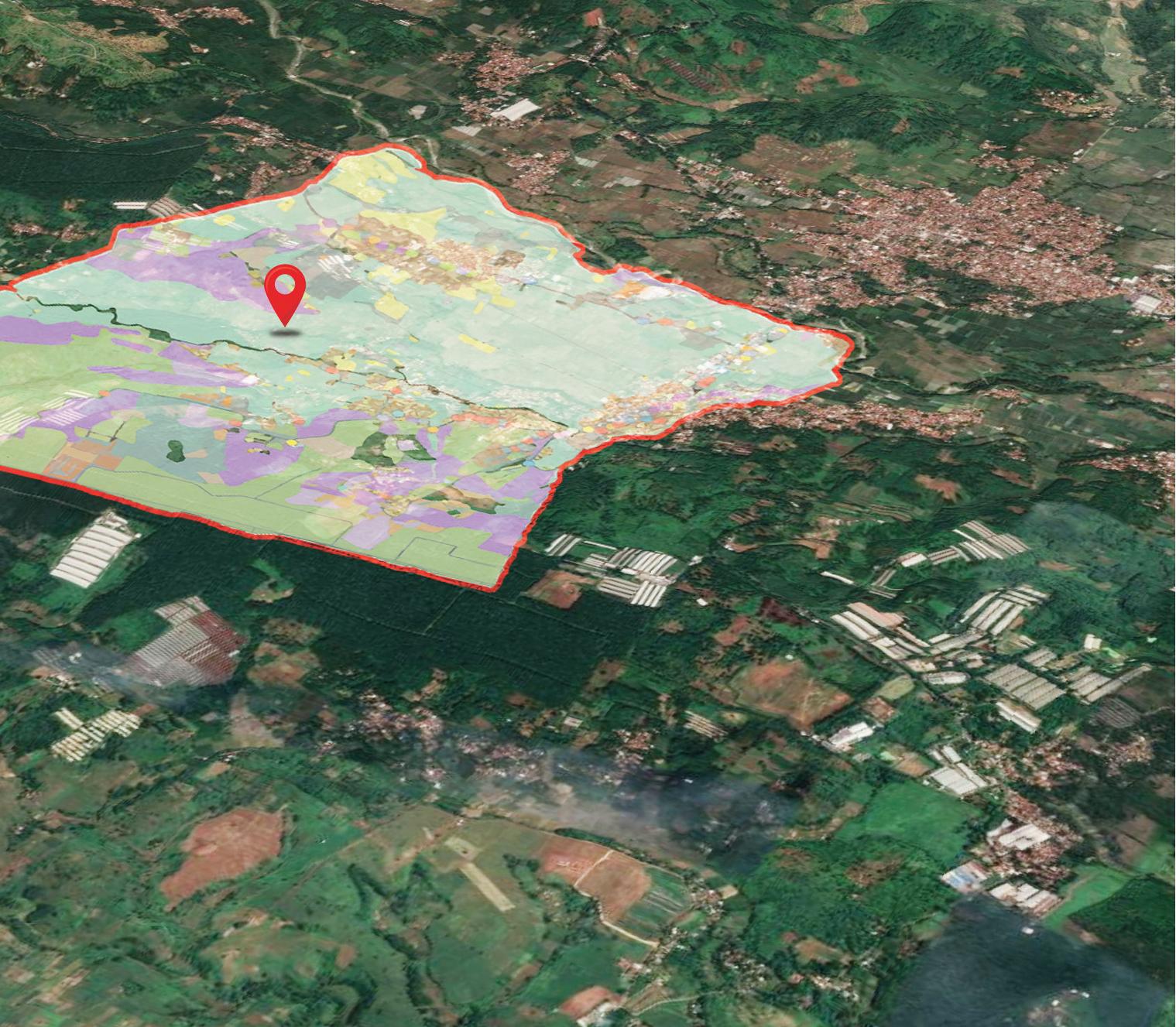
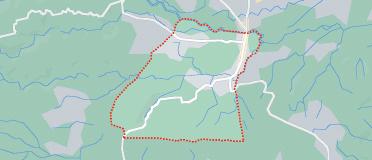
Cinangsi is a village in the Cikalongkulon District, Cianjur Regency, West Java.
Population: 7,123
Area: 586.26 Hectares
Pond
Gardens
Non-cultivated vegetation
Trade and Services
Forest
Borderline
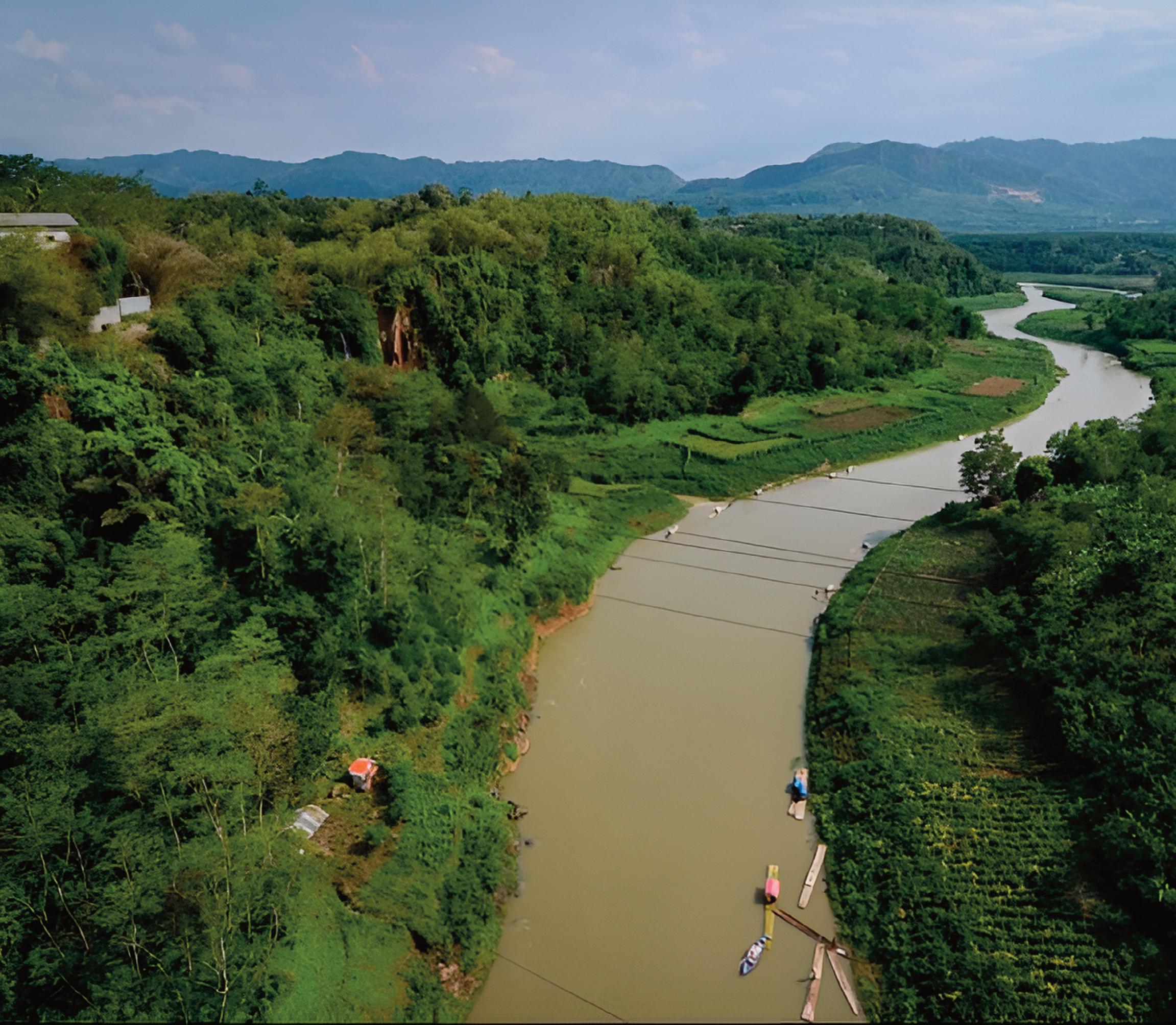
The landscape of the Citarum River at the border of West Bandung Regency and Cianjur Regency.
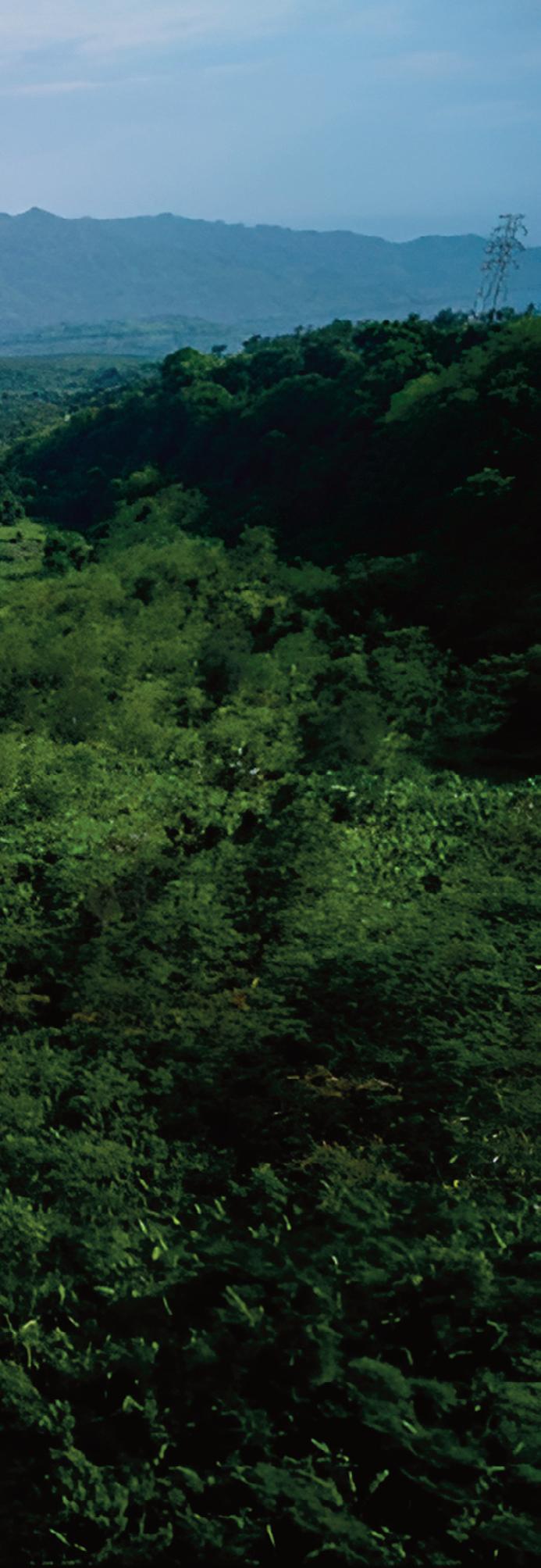
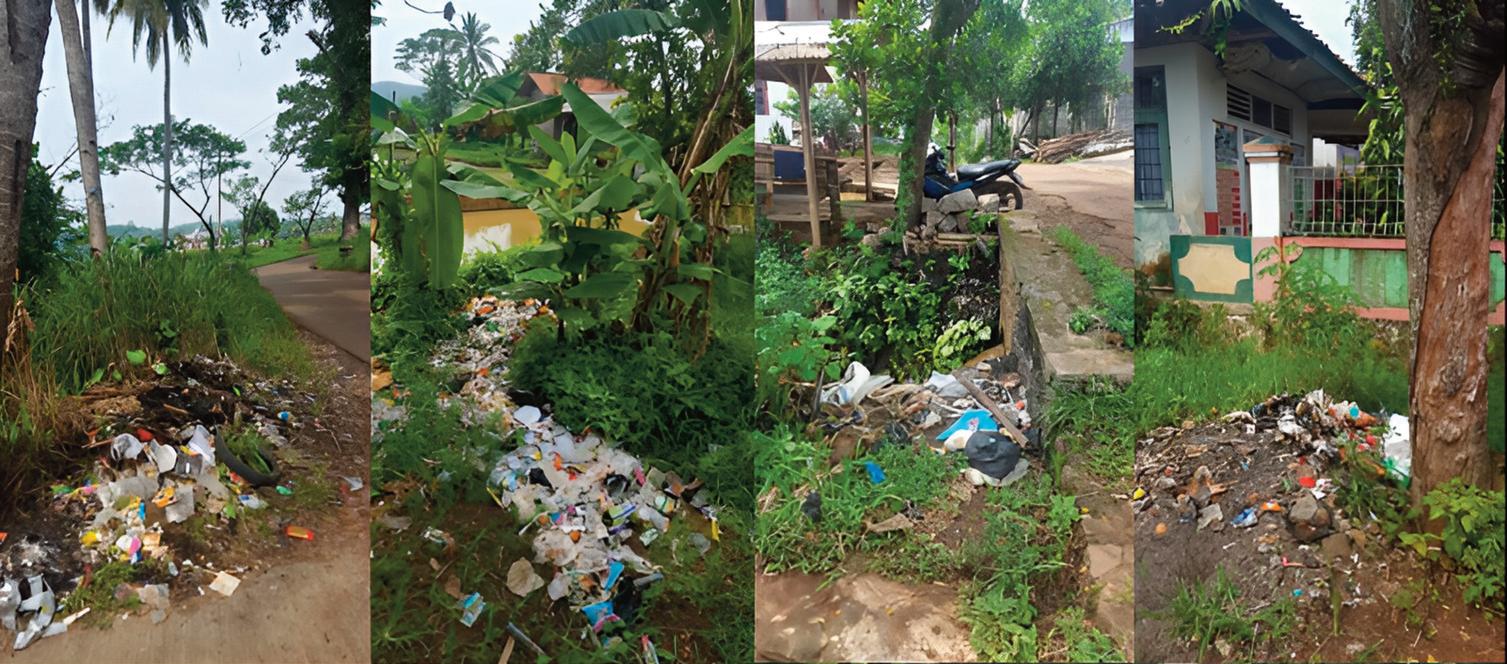
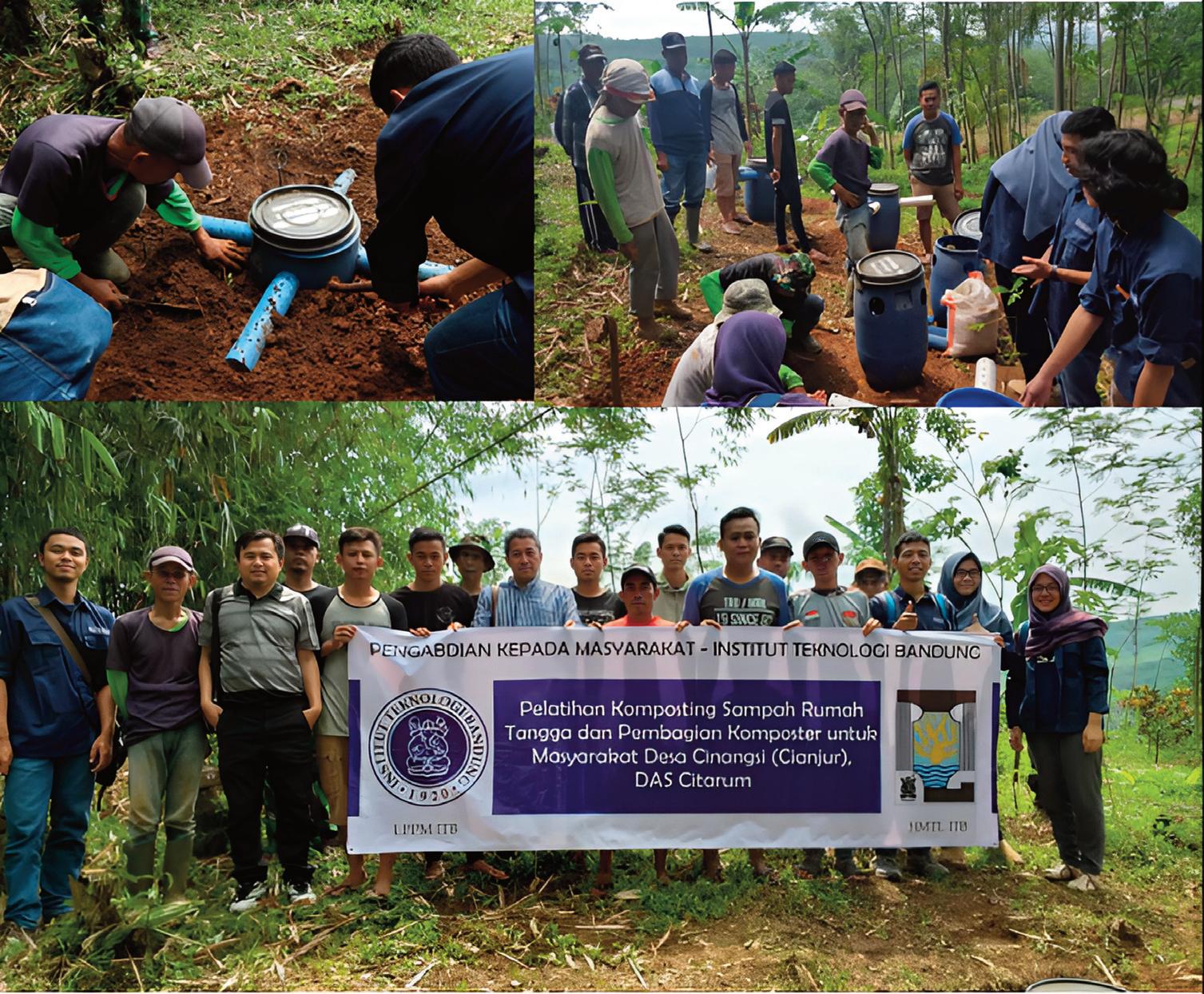
One of the issues in Cinangsi Village is the lack of service from the City Sanitation Agency, resulting in waste management, especially household waste, still being a challenge. Educational efforts related to the 3R (reduce, reuse, recycle), waste reduction at the source, waste sorting, etc., are expected to be continuous activities with the presence of proper waste management infrastructure. Communal waste management such as waste banks, 3R and waste reduction at the source, composting of waste, waste processing with Black Soldier Fly (BSF), and production of maggots from kitchen waste for fish feed can be implemented.
Efforts to improve waste management capacity in Tarikolot Village with the 3R approach and waste reduction at the source by optimizing waste sorting efforts. The scope of activities conducted is as follows:
1. Located in Tarikolot Village, Cinangsi Village, Cikalongkulon District, Cianjur Regency.
2. Estimating waste generation, waste composition, specific weight, and waste characteristics through field sampling for planning purposes.
3. Analyzing the characteristics of the community in Tarikolot Village in managing their waste through questionnaires, interviews, and observations.
4. Determining options for self-contained residential waste management technology.
5. Technical planning of waste management facilities includes:
- Calculation of land requirements.
- Determination of the planned location for waste management facilities.
- Planning of waste management technology units.
- Design of facilities and infrastructure at waste management facilities.
- Preparation of operation and maintenance concepts at waste management facilities.
- Technical drawings in accordance with the design and technical calculations.
- Budget planning for independent waste management installations.
6. Example of waste management implementations include promoting good waste management practices, establishing waste banks, providing examples of self-contained waste management technology models (such as segregated communal waste collection points and individual or communal composters, etc.), with the target of reducing waste disposal into rivers or the environment by the community.
7. Establishing communication networks with companies, especially those related to corporate social responsibility (CSR), that have the potential to contribute more extensively and comprehensively in the area, both physically and non-physically, to ensure that waste management in the area can be sustainable.
The approach and problem-solving method involve conducting direct observations and waste estimation in the residential areas of the study area to determine waste generation, density, composition, and characteristics of waste in the Kampung Tarikolot area, and then further analyzing its potential. Subsequently, questionnaire surveys, interviews, and observations are conducted to analyze the characteristics of the community in Kampung Tarikolot in managing their waste.
Based on the data obtained from the survey above, the next step is to determine the planning for residential waste management and design the residential waste management system in Kampung Tarikolot. Building upon the data analysis and previous waste management planning, the implementation will proceed by introducing example concepts of self-contained waste management technology in Kampung Tarikolot.
Examples of waste management implementation include socialization of proper waste management practices, establishment of waste banks, demonstration of model technology for independent waste management (such as communal waste collection points, individual/communal composters, etc.), with the goal of reducing waste disposal into rivers by the community.
Efforts to establish communication with companies, especially those related to corporate social responsibility (CSR) that have the potential to contribute further and more extensively in the area, aim to ensure that waste management in the area can be sustainable. This includes seeking both physical and non-physical assistance to support sustainable waste management practices.
The expected outcome is the realization of the recovery, control, and utilization of space to ensure that the functions of the Citarum River Basin area are free from waste accumulation and pollution, as well as the establishment of well-managed conservation and utilization of water resources.
The beneficiaries of this activity are the community of Cianjur Regency, especially in Cinangsi Village. The benefits of this activity include providing facilities for environmental cleanliness, creating a healthier environment which results in reduced spread of diseases caused by poor sanitation, and improving the economy of the community due to reduced costs associated with unhealthy conditions.***
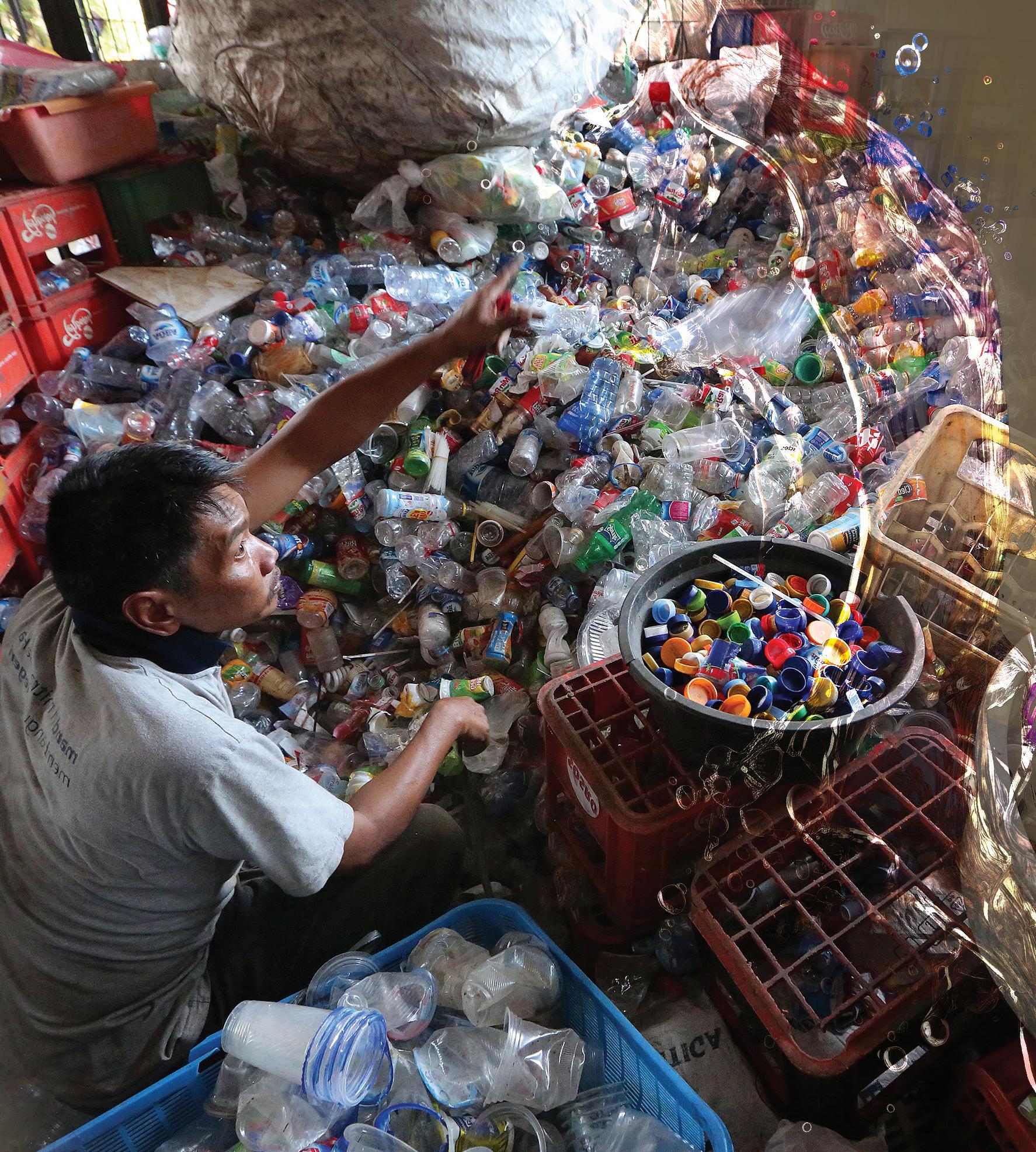
 V. Sri Harjati Suhardi, Ph.D.
V. Sri Harjati Suhardi, Ph.D.
Microbial Biotechnology Research Group
School of Life Sciences and Technology
Through an approach based on domestic waste generation and community participation, a prototype application of composting technology based on local resources is developed to process domestic solid waste into compost. This activity aims to produce technical data, process parameters, and SOPs to operate this system. The problem-solving strategy is divided into two parts, namely strategies based on domestic waste generation and strategies based on community participation.
The water quality of the Citarum River, the largest river basin (DAS) in West Java Province, has drastically declined due to human activities. Domestic, agricultural, livestock, and industrial waste have seriously polluted this river. The impact is highly detrimental to the ecosystem and local communities. This challenge is addressed in the context of Waste Management Regulation 18/2008, which promotes waste reduction through the concept of 3R (reduce, reuse, recycle) and more appropriate waste management.
The main objective of this activity is to make a positive contribution to the environment through the utilization of science and technology resources for community empowerment in Cinangsi Village, Cikalongkulon District, Cianjur Regency. Through an integrated approach based on domestic waste generation and community participation, this activity aims to develop a prototype composting technology based on local resources to process domestic solid waste into compost. Additionally, the focus of this activity is on generating better technical data, tested process parameters, and effective standard operating procedures (SOPs) for operating this system.
The problem-solving approach is divided into two complementary parts. Firstly, a strategy based on domestic waste generation involving stages of sorting, processing, and utilizing domestic solid waste. Secondly, a strategy based on community participation involving active roles from the community, community leaders, and educational
institutions.
This activity is planned to take place over several months, starting from February to November. The stages include proposal approval, work planning, site preparation and permits, reactor and equipment preparation, testing, monitoring, sampling, analysis, as well as report and SOP development.
The expected outcomes of this activity are highly significant. Firstly, there will be the installation of domestic solid waste treatment facilities using the modified Takakura method. This will greatly benefit in addressing environmental pollution issues caused by solid waste. Secondly, the activity will produce training modules and outreach materials. This will support the increase in public awareness about the importance of proper waste management. Consequently, the community can actively participate in efforts to restore the Citarum River.
Through this approach, it is hoped that the water quality of the Citarum River will experience sustained improvement. Additionally, community empowerment in waste management will build better environmental awareness and provide economic benefits through the utilization of the compost produced. This proposal is committed to achieving long-term positive impacts on the environment, community, and the ecosystem of the Citarum River.
The Bandung City Environmental Agency (DLH) have launched the “Reduce, Separate, and Utilize” (Kang Pisman) movement to raise awareness about waste separation and utilization. To support this movement,
this community service program implements several integrated waste processing techniques introduced to the community.
The installation of domestic solid waste treatment, particularly organic waste composting, is widely utilized in several regions. This method has shown success in various areas, with the key to its success being training and mentoring. The advantage of utilizing organic waste for composting is that it provides a comprehensive solution, eliminating the need for further processing after the completion of the process.
The utilization of plastic waste with ecobricks has been widely practiced both domestically and internationally. The advantage of this approach is the acquisition of materials that can be used to construct simple and inexpensive structures.
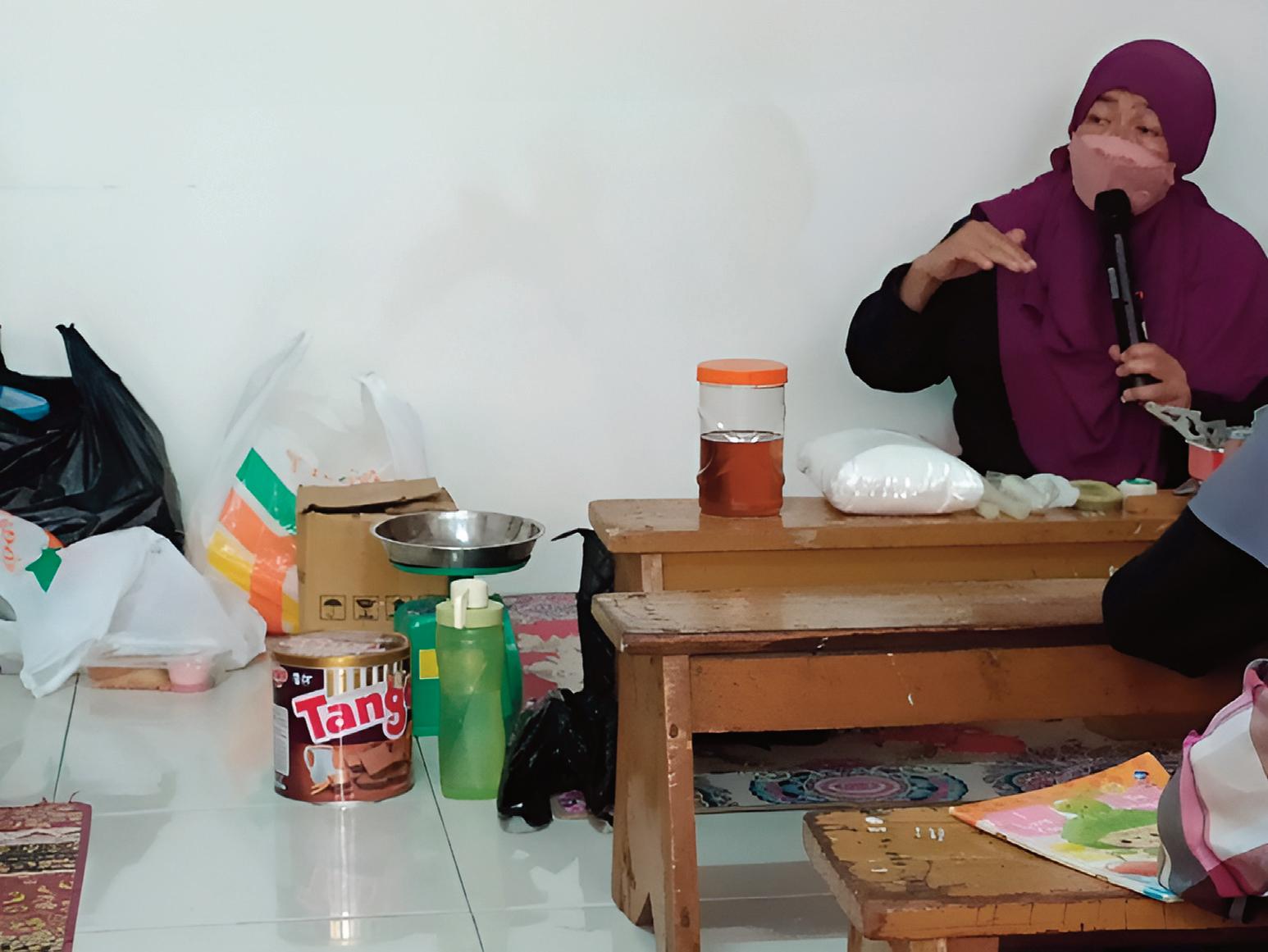
This strategy is divided into two parts:
Generation-Based Strategy
1.Sorting Stage
2.Processing Stage
3.Utilization Stage
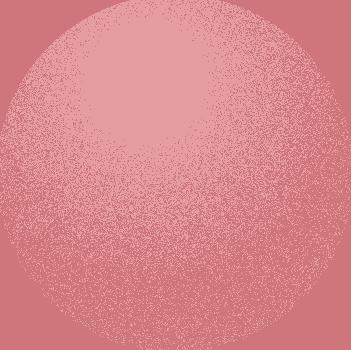

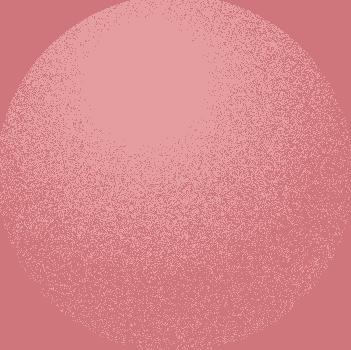
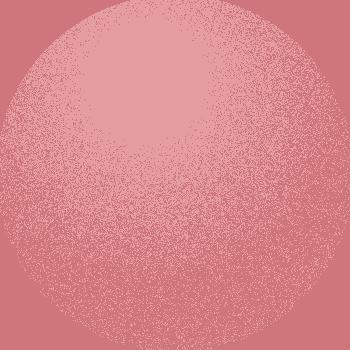

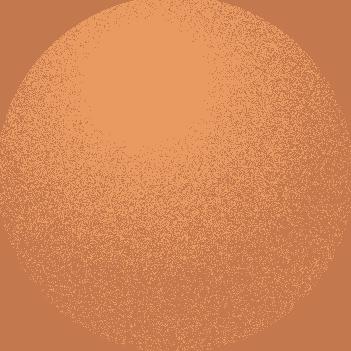

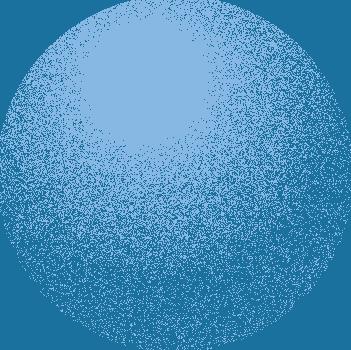
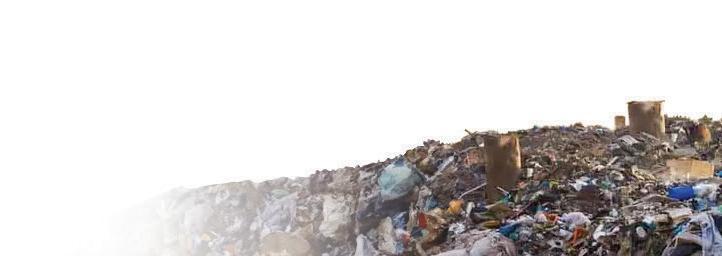


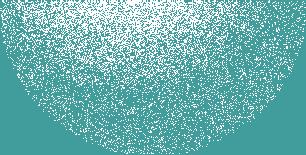
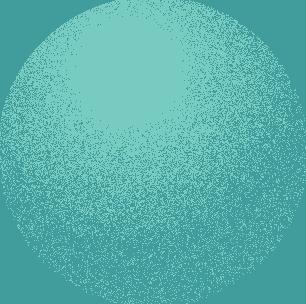
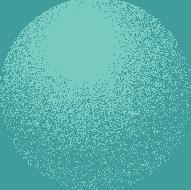



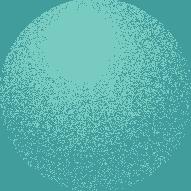



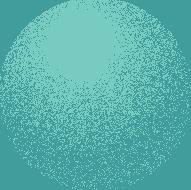
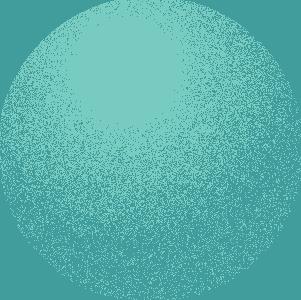
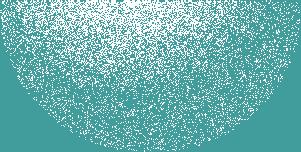
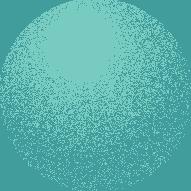
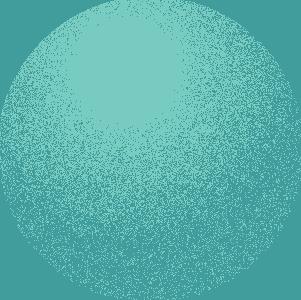
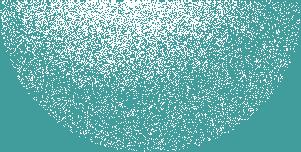

The aim of the activity is to contribute to the community in the environmental field through the synergy of good activities between science and technology resources and their specific utilization for the people in Cinangsi Village, Cikalongkulon District, Cianjur Regency. The community’s contribution to this community service program is to sort and process solid domestic waste originating from their own households.
The results of processing domestic solid waste into compost fertilizer can be utilized by the community itself for both agriculture and horticulture purposes. The head of RT/RW are involved as facilitators and supervisors of the program’s implementation. The objectives and targets of this community service activity are as follows:
1. To develop a prototype application of local resource-based composting technology for processing household solid waste.
2. To gather technical data and process parameters for operating the system and designing it on a prototype scale.
3. To create Standard Operating Procedures (SOP) for operating the system.
In the context of development and social progress, this proposal has significant impacts. The Citarum River Basin (DAS Citarum) serves as a symbol of serious attention to environmental issues. The deterioration of water quality in the Citarum River caused by human activities, including domestic waste, agriculture, livestock farming, and industry, affects not only the environment but also human life directly.
Active participation of the community in Cinangsi Village in managing domestic solid waste through this program has broad implications. The direct involvement of the community in sorting and processing solid waste from their households is a tangible step towards more responsible and sustainable waste management. This program also
has the potential to enhance public awareness of the urgency of proper waste management. Education and outreach integrated into this activity can foster social transformation in the community’s attitudes and behaviors towards waste.
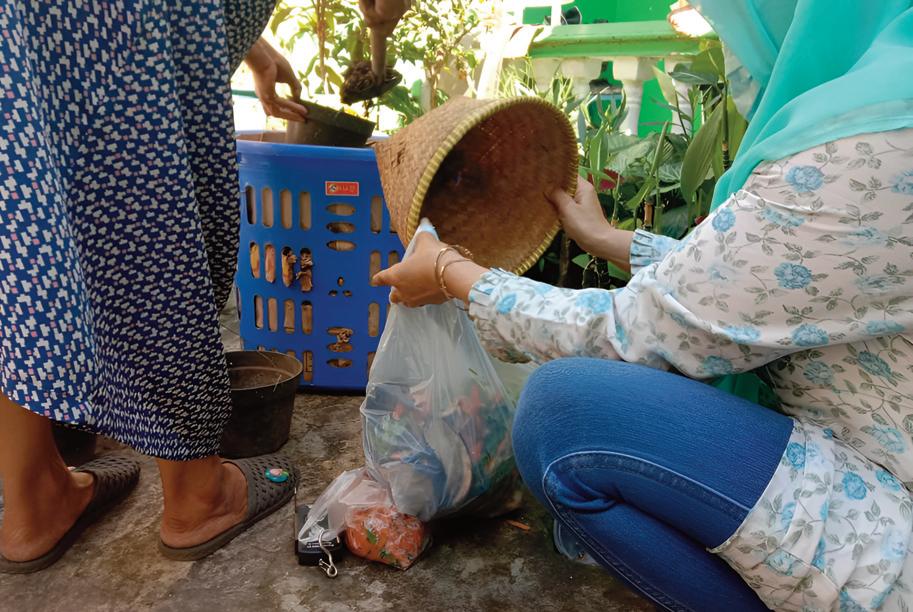
Domestic waste separation.
Awareness of the negative impacts of waste on the environment and human health will grow. Eventually, a culture of environmental care will emerge within the community. In the long run, this can have a positive impact on consumption and production patterns that are more sustainable.
Furthermore, the active and involved role of
community leaders, such as RT/RW or Family Welfare Empowerment Group (PKK) heads, in implementing the program demonstrates the government’s and local community’s commitment to addressing environmental issues. This can foster closer cooperation between the government, the community, and educational institutions in achieving sustainable development goals.
From an environmental standpoint, this program has significant positive impacts. The installation of domestic solid waste treatment using the modified Takakura method can help address solid waste pollution issues. Composting organic waste is an environmentally friendly solution as it reduces waste volume and produces compost that is beneficial for agriculture and horticulture. The success of this method in several areas with effective training and mentoring demonstrates its potential to contribute to environmental recovery solutions.
Utilization of “inorganic” plastic waste with the ecobrick approach is also a promising innovation in reducing the environmental impact of plastic waste. By converting plastic waste into simple construction materials, this program not only reduces the volume of plastic waste polluting the environment but also utilizes it for more productive purposes. This can reduce the need for new raw materials in construction, which in turn can alleviate pressure on natural resources.
Furthermore, the implementation of this program has the potential to reduce greenhouse gas emissions by decreasing waste volume and promoting more sustainable waste management practices. By reducing the need for waste disposal in landfills, energy savings in waste transportation and processing processes can also be achieved.
This program is in line with the community’s aspirations for sustainable development. The community is increasingly aware of the urgency of environmental conservation
and the need to create sustainable lifestyles. With a focus on waste management and technologybased solutions, this program provides concrete answers to pressing environmental issues.
In the framework of the reduce, reuse, recycle concept, this program encourages waste reduction through proper sorting and processing. This aligns with the expectation of adopting more sustainable consumption patterns, which is in line with the goals of sustainable development.
Furthermore, through active community participation, this program fosters harmonious relationships among individuals, communities, and the environment. The community in Cinangsi Village is encouraged to take an active role in waste management that aligns with the

participatory spirit in sustainable development. In the long term, this program has the potential to create an environmentally conscious culture that influences societal expectations for a better future.
Health, safety, and environmental aspects (HSE) are prioritized in the implementation of this program. Proper waste management not only impacts the environment but also the health and safety of the community. By reducing, sorting, and processing waste, risks to public health can be minimized. Poorly managed waste can serve as breeding grounds for diseases and pathogens that have the potential to harm human health.
Besides that, this program also contributes to the safety of the community by reducing the potential for accidents or disasters related to waste.

Ineffective waste management can result in air, soil, and water pollution that may pose hazards to the environment and the surrounding community. By involving the community in the waste management process, this program helps educate about the risks and safe management practices.
In the environmental context, this program has a positive impact on reducing the burden of solid waste entering landfills or the natural environment. Providing installations for domestic solid waste processing through composting methods and the ecobrick approach helps to mitigate the flow of waste that pollutes the environment. This means the potential environmental damage from waste will be reduced, which in turn has a positive impact on ecosystems and biodiversity.
The program makes a significant contribution to community development in various aspects. Through an approach that actively involves the community, this program provides an opportunity for community of Cinangsi Village to participate in solutions to environmental issues. This contribution is not only limited to waste management but also extends to the development of environmental awareness and practical skills. Through training and outreach activities, the community can understand the impact of their behavior on the environment and implement more sustainable solutions.
However, along the way, this program also faces several challenges. The main challenge is changing the behavior and mindset of the community towards waste. Encouraging people to sort and
process waste requires changing habits that are not always easy. Managing technology and training also require significant time and resources investment. These challenges can be overcome through a strong participatory approach, sustainable education, as well as the role of government and community leaders in supporting program implementation.
The concepts and approaches used in this program have the potential to be adopted by similar companies or organizations in various contexts. Sustainable waste management with the 3R method is a relevant strategy for all entities that generate waste. Composting and ecobrick utilization methods can also be applied on a larger scale, such as in companies or broader communities.
By harnessing organic waste as a resource for agriculture, this program transforms the conventional view of waste into a productive opportunity. This innovation contributes to resource efficiency, reduces dependency on chemical fertilizers, and enhances soil fertility, which has a positive impact on local agriculture.
Moreover, the ecobrick approach also reflects creativity in addressing the plastic waste issue. Transforming plastic waste into building materials usable in construction projects is an innovative step in reducing the negative impact of plastic on the environment. In addition to addressing pollution issues, this also provides an economic alternative for local communities to utilize plastic waste.
This program aims to address the challenges of declining water quality in the Citarum River caused by human activities in the Citarum River Basin (DAS Citarum). The main focus of this program is to reduce the water pollution impact from domestic waste and increase community participation in waste management.
The decrease in river water quality is primarily caused by anthropogenic waste such as domestic, agricultural, livestock, and industrial waste. Visual representations of river pollution, especially plastic pollution, provide a clear picture of this situation.
Anthropogenic activities mainly occur in the upstream and downstream areas of the river. Therefore, preventive efforts are necessary in both of these regions. This program focuses on prevention in the upstream areas of the river, which is a crucial step in the restoration of the Citarum River.
The basic approach of this program is to reduce pollutants from agricultural, livestock, and settlement activities in the upstream areas of the river. The initiative focuses on the separation and treatment of domestic waste, which is considered a significant contributor to river pollution. This program is a continuation of previous efforts, namely the bioremediation of fisheries effluents in the Citarum River Basin.
The village of Cinangsi, Cianjur Regency, was chosen as the program location due to the need for sustainable efforts and strong support from the local community and government. The main objectives of this program include separating domestic waste into organic and non-organic categories, utilizing non-organic waste for ecobricks, processing organic waste into compost, MOL (Microorganism Local), and eco-enzymes, as well as utilizing these products in local agriculture.
This program adopts the Kang Pisman strategy from the Bandung City Government with the principle of “Reduce, Separate, and Utilize.” To reduce plastic usage, the program encourages the community to use alternatives such as reusable shopping baskets, which can help reduce plastic waste.
The separation of organic and non-organic waste is also emphasized to facilitate waste management. Non-organic waste will be transformed into ecobricks to reduce waste volume. Organic waste will be processed into three products: compost, MOL (Microbial Organic Liquid), and eco-enzymes, which have benefits in local agriculture and horticulture.
This program has a planned set of activities including program introduction, introduction of Kang Pisman and eco-enzymes, monitoring of results, production of MOL and composting,
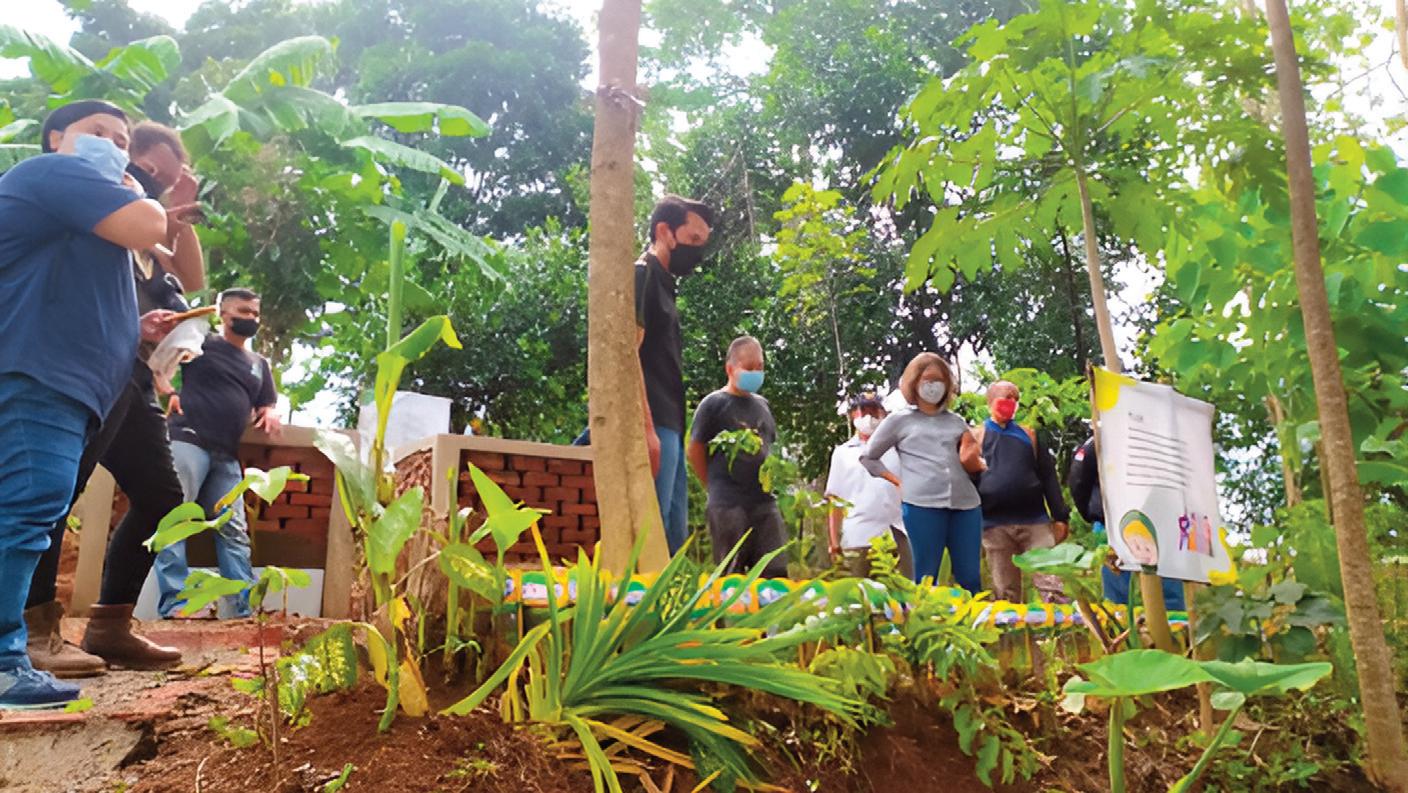
monitoring of community participation, compost yield harvesting, product utilization, and reporting.
Expected outcomes include community participation in waste separation, practical guidance, ecobrick production, and organic waste processing products. The program also aims to gain attention through electronic media coverage.
In order to preserve and restore the water quality of the Citarum River, this program represents a tangible effort to reduce the impact of domestic waste through active community participation and effective waste management strategies. With a focus on upstream areas and collaboration among various stakeholders, the program provides a sustainable contribution to the restoration of the
Program discussion and monitoring.
river ecosystem, which is crucial for environmental sustainability and the livelihoods of surrounding communities.
In the first year, training was conducted on the treatment of fishery effluents in Cinangsi Village to prevent effluent from polluting the river. In the second year, the focus was on treating other anthropogenic pollutant sources, namely household domestic waste.
Another consideration is the high enthusiasm of the community. Furthermore, collaboration can be established with the local government (village office). Collaboration can also be formed with local environmental communities that can assist in various aspects given the call for reduced mobility.
This program has a significant impact on the social development and progress in the Citarum River Basin area. By focusing on community participation in managing domestic waste and caring for the Citarum River, the program promotes greater environmental awareness and responsibility among local community.
By educating and involving the community in sustainable waste management practices, the program helps foster environmentally friendly mindsets and behaviors. Increased awareness and knowledge about the importance of waste separation, organic processing, and the benefits of waste-derived products can also inspire community beyond Cinangsi Village to adopt similar practices.
Furthermore, this program plays a role in strengthening cooperation among the community, local government, and environmental organizations. This collaboration opens up opportunities for integrating sustainable solutions on a broader scale. The participation of the government and community as partners in this program not only benefits waste management but also strengthens social bonds and promotes shared responsibility for environmental conservation. This creates a stronger foundation for community development and empowerment towards sustainability.
This program has a significantly positive impact on environmental and energy performance. By focusing on domestic waste management and reducing water pollution, the program contributes to the preservation of the Citarum River ecosystem and its surrounding environment. Measures such as waste separation and organic processing reduce the amount of waste polluting the river, decrease health risks to the community, and support a better ecological condition.
The implementation of the “Reduce, Separate, and Utilize” principle from the Kang Pisman program has a positive impact on reducing plastic waste and overall waste volume. The use of ecobricks as an alternative for non-organic waste helps reduce the amount of waste ending up in landfills. Additionally, converting organic waste into products such as compost, MOL, and eco-enzymes supports sustainable farming and gardening practices, reducing the need for potentially environmentally damaging chemical fertilizers.
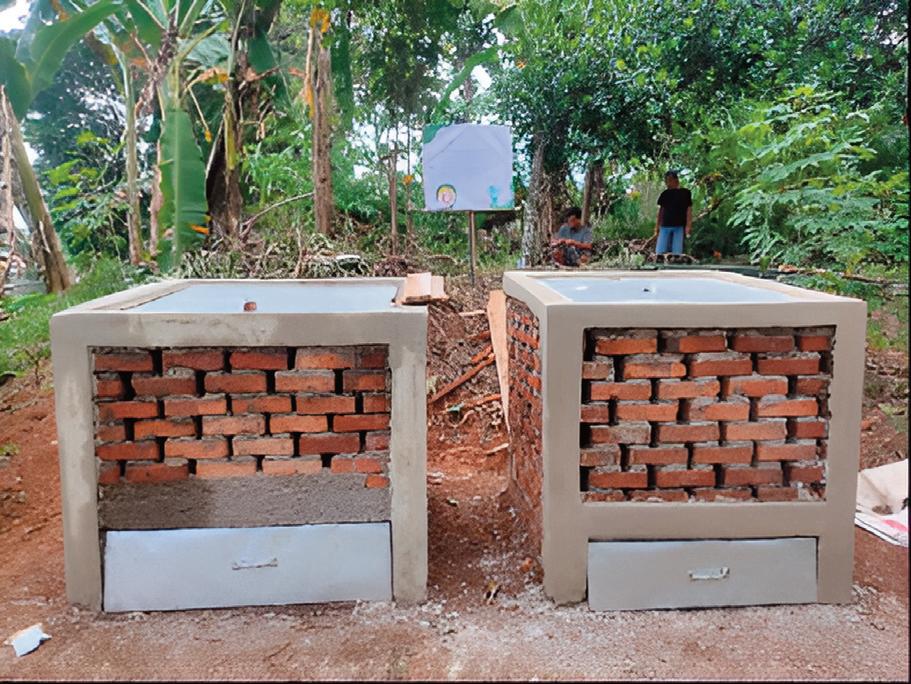
This program also inspires energy efficiency through a sustainable approach to waste management. By transforming waste into useful resources such as fertilizer and alternative building materials like ecobricks, the program helps reduce the energy consumption that would otherwise be needed for the production of similar materials. Thus, the program has a positive impact on both environmental and energy aspects, contributing to broader environmental conservation efforts.
The program aligns with societal expectations regarding sustainable development. By addressing serious issues like pollution in the Citarum River through domestic waste management and active community participation, the program fulfills the community’s aspirations for a healthier and more sustainable environment. Through education, training, and the implementation of sustainable practices, the program bridges the gap between the community’s understanding of the importance
of waste management and environmental protection.
By directly involving the community in this effort, the program ensures that the proposed solutions align with local needs and values, allowing people to feel engaged and contribute to positive change.
By encouraging community participation in safe and effective waste management practices, the program reduces the risk of accidents related to hazardous waste. Additionally, proper handling of organic waste through processing reduces the production of methane gas, which is a potent greenhouse gas that can harm the environment.
This program demonstrates a commitment to the principles of public health and environmental protection. Through collaboration with local government and environmental communities, the program ensures that the steps taken adhere to appropriate safety standards and have positive longterm impacts on public health and ecosystems.

Training on the utilization of organic waste.
The program provides economic opportunities to local communities while reducing pollution and negative environmental impacts. However, challenges arise in changing community habits and mindsets regarding waste management, as well as in addressing limitations in resources and infrastructure for more effective processing.
This program supports community development initiatives by providing concrete solutions to local sustainability issues. The support provided by this program helps mobilize the community to actively engage in preserving and building local sustainability, resulting in long-term positive impacts on social, economic, and environmental aspects.***
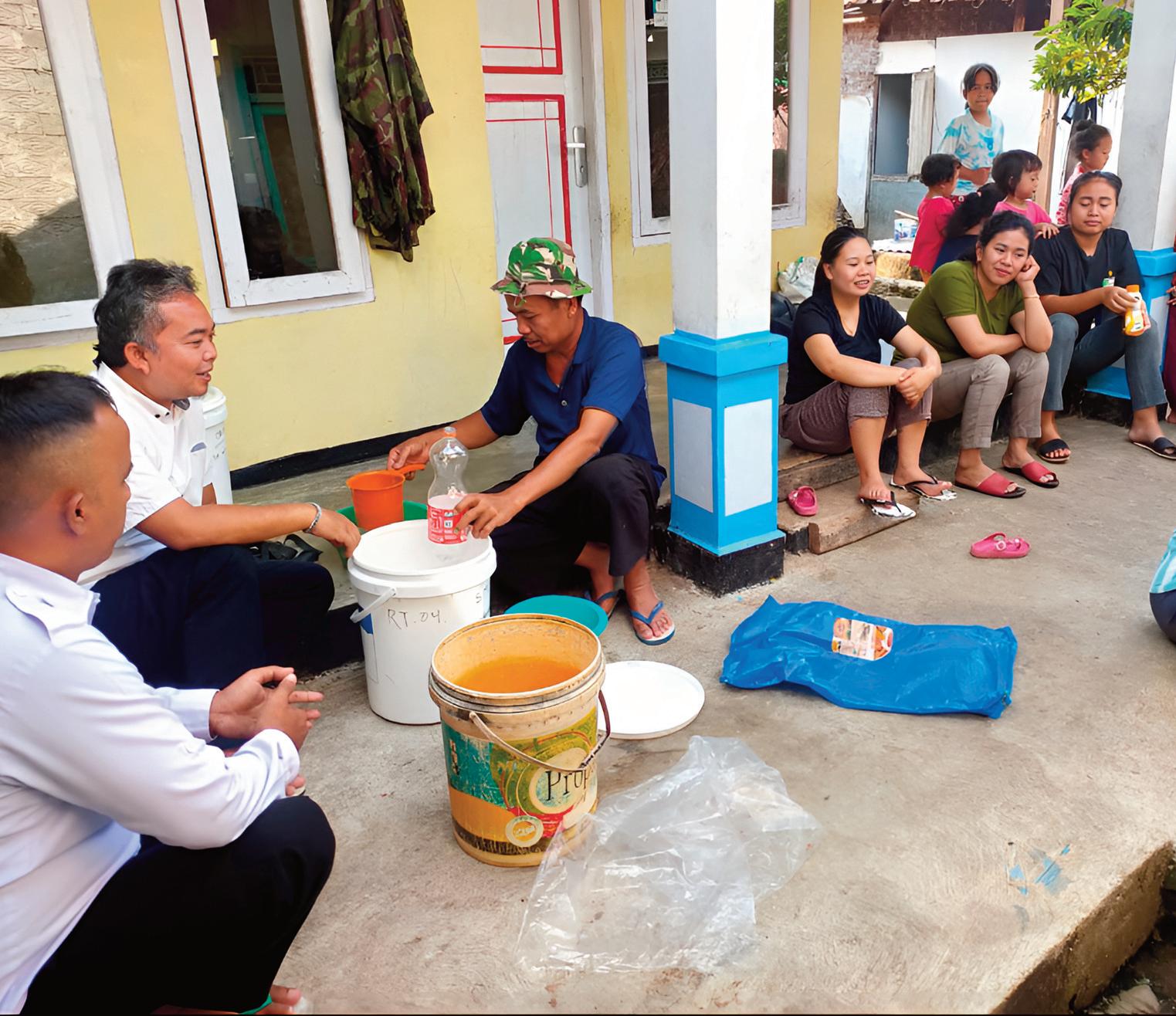
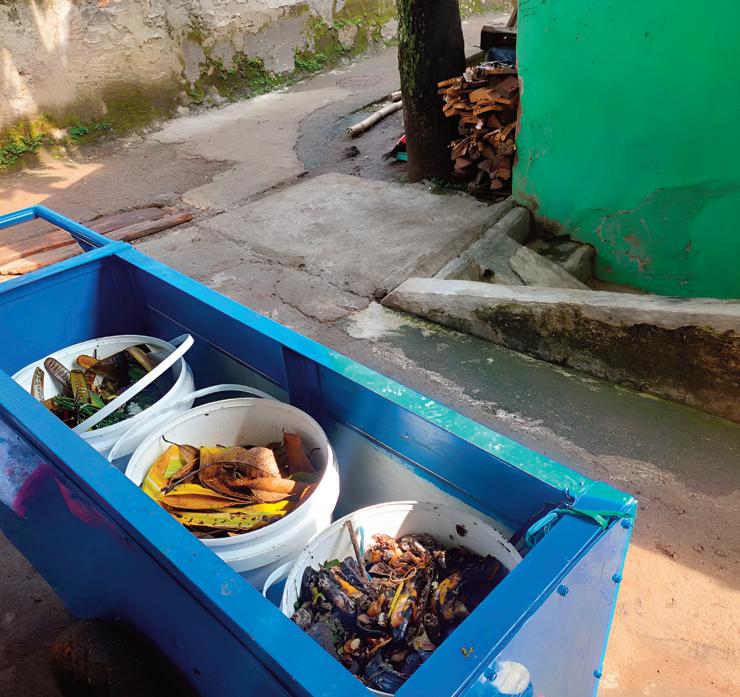
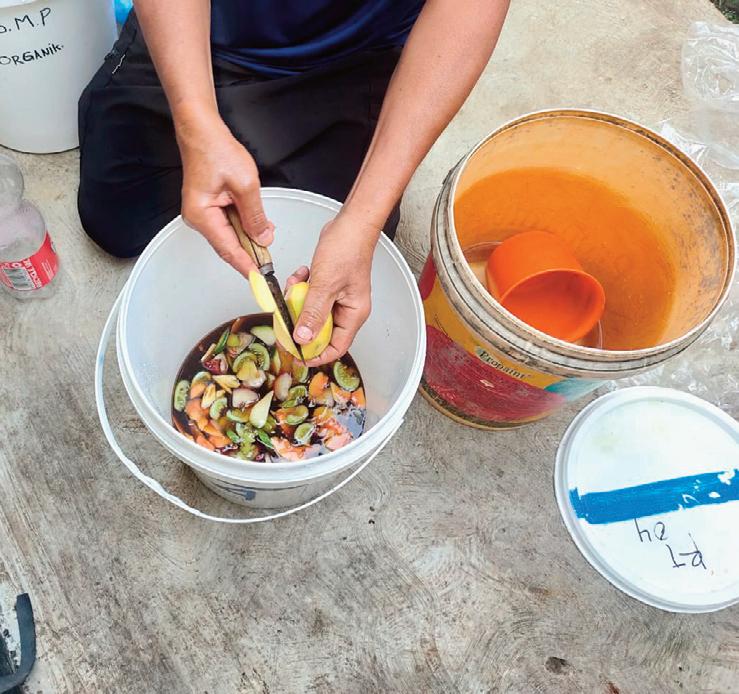
Separation of organic waste. Processing of organic waste.

Training on the separation of domestic waste into organic and “inorganic” waste.

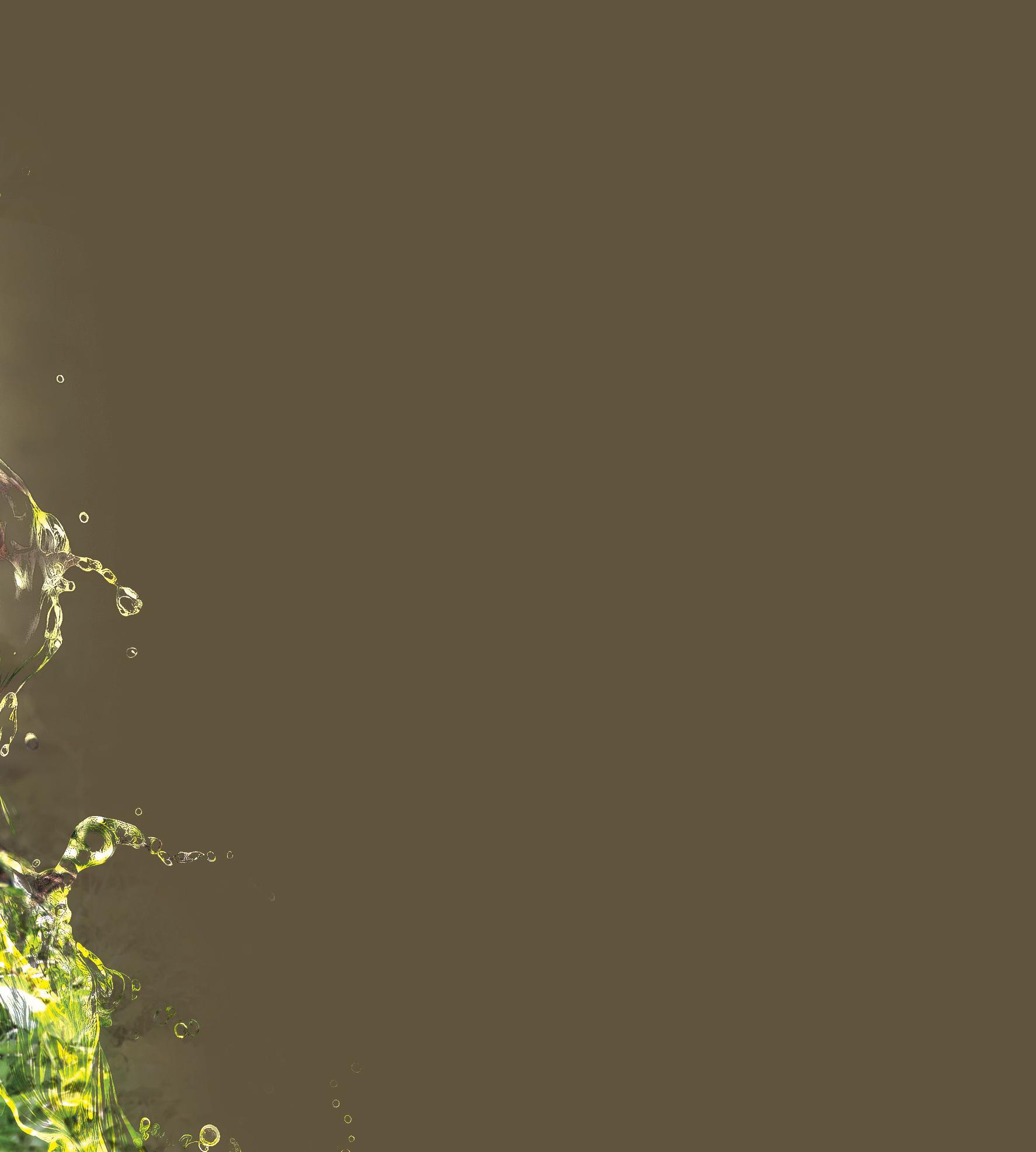
Prof. Dr. I Nyoman Pugeg Aryantha
Dr. Mustika Dewi, Azizah Nur Fitriani, S.Si., Sri Utami, M.Si., Rizki Arifani, S.Si.
Microbial Biotechnology Research Group School of Life Sciences and Technology
Organic waste is one of the pollutants that has a high percentage in polluting the environment. The common waste management method used is the 3P method (collection, transportation, and disposal). Waste collected from its source will then end up in the final disposal site (landfill).
IN efforts to reduce organic waste disposal, processing can be initiated at a small scale, starting from households. One potential solution is biological processing through fermentation processes. Organic waste can be utilized as raw material for the production of liquid biofertilizer. Biological processing has the advantage of being easy, inexpensive, profitable, and environmentally friendly.
In addition to environmental issues, in 2020 Indonesia and the world experienced a pandemic due to the Sars-Cov-2 virus, known as COVID-19. With the onset of COVID-19, many sectors of life were affected, including agriculture and the economy. COVID-19 prompted the government to implement Large-Scale Social Restrictions (PSBB) in affected areas, resulting in decreased community activities, including trading activities and closed of market.
This policy also affects the purchasing capacity of the community, on all trading items including in vegetable commodities. This condition results in high vegetable supply but low buying volume of vegetables. This will certainly disrupt the income of farmers. In addition, the effects of the pandemic were also felt by online motorcycle taxi drivers who lost their passengers due to area restrictions.
Therefore, to address the above issues, this community service organized programs on educating and training the community how to utilize organic wastes as biofertilizer, as well as empowering vegetable farmers and online motorcycle taxi drivers affected by COVID-19 policy. Thus, both parties can still have jobs, and the problem of high vegetable production can also be addressed.
The condition of farmer groups in Lembang City and Kertasari District experiencing a surplus of unsold vegetable products, online motorcycle taxi drivers who mostly lose income due to lack of passengers, as well as the community and several parties such as zoos facing difficulties in meeting daily needs, are
the main focus of Community Service Activity I.
In Community Service Activity II, the condition of the partner, in this case, Pesantren Kampoeng Quran Cendekia (Islamic Boarding School), has excellent human resources and land potential to be developed in the field of agriculture and aquaculture. Around the pesantren, there are vegetable farmer groups that also have great potential to process and develop liquid fertilizer independently. However, both parties have
never attempted to utilize organic waste to produce liquid fertilizer and still rely on synthetic fertilizers.
Training and coaching include the following topics:
a. The importance of environmental conservation.
b. Basic knowledge about natural systems and microorganisms.
c. Basic knowledge about fertilizers and agricultural systems in Indonesia.
d. Training on making fertilizer inoculants.
e. Training on scaling up liquid fertilizers.
f. Application of liquid fertilizers on fields.
This community service activity consists of two series of activities. In the first activity, the program aims to address the economic issue due to the implementation of Large-Scale Social Restrictions (PSBB) and the high number of COVID19 cases in West Java Province. The title of the program was, to “Empowerment of Vegetable Farmers and Online Motorcycle Taxi Drivers During the COVID-19 Pandemic.” The target beneficiaries of this community service activity include vegetable farmers, online motorcycle taxi drivers (ojol), as well as other individuals and parties affected by the pandemic. In its activities, community service was carried out by:
1. Buying unsold vegetables from farmers due to market closed and purchasing incapability of the community.
2. Distributing vegetables. The purchased vegetables are then distributed using online motorcycle taxi services (ojol) which are also affected by the pandemic. Prior to this, addresses and lists of recipients of the vegetables to be sent were first documented.
3. The target recipients of vegetable deliveries include lecturers, ITB staff, ITB security personnel, orphanages, nursing homes in the Bandung and Cimahi City areas, Bandung Zoo, as well as surrounding communities in need.
Upcycling Empowerment
Empowering vegetable farmers during the pandemic.
In the second phase of the activity, training on the production of liquid fertilizer was conducted directly for the community. However, considering the high number of COVID-19 cases, adjustments were made to the location of the community service activities to be conducted around the city of Bandung. Phase II activities were carried out at Pesantren Kampoeng Quran Cendekia, located in Cihanjuang Village, Parongpong District, West Bandung Regency.

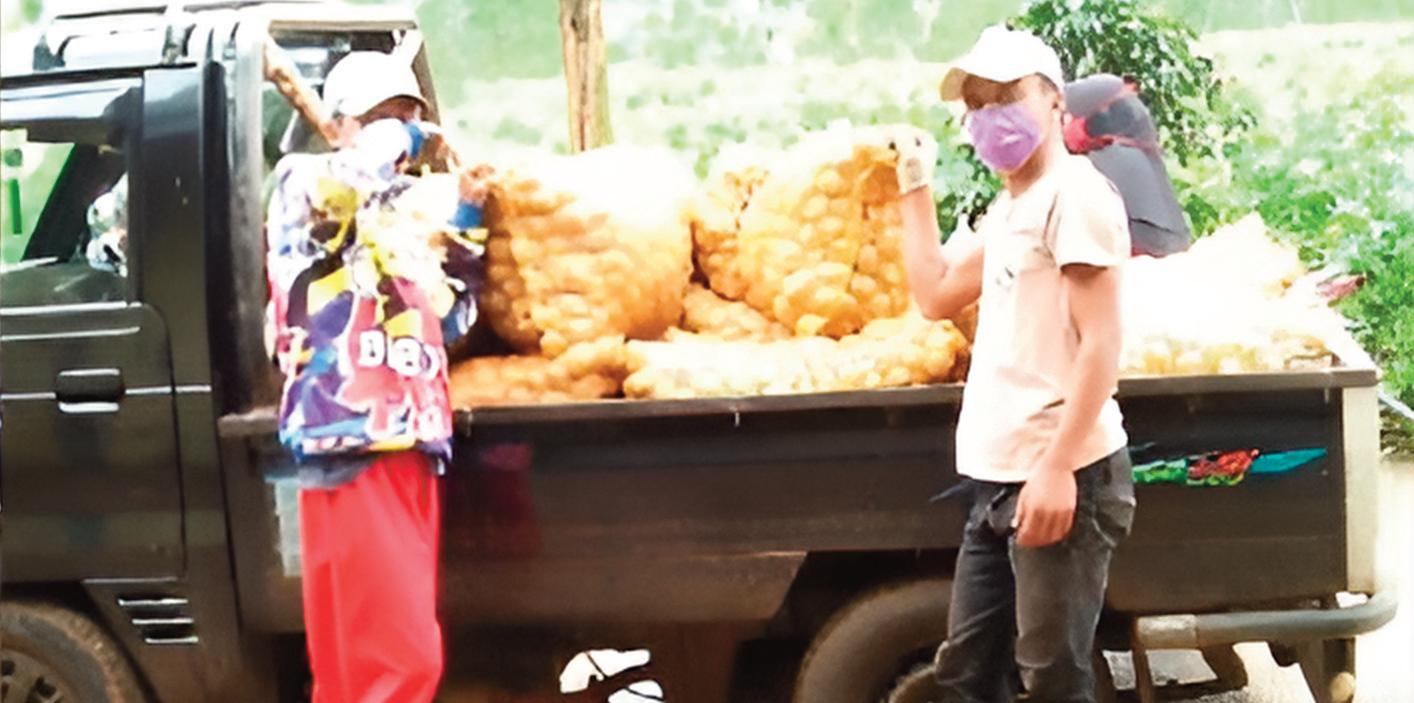
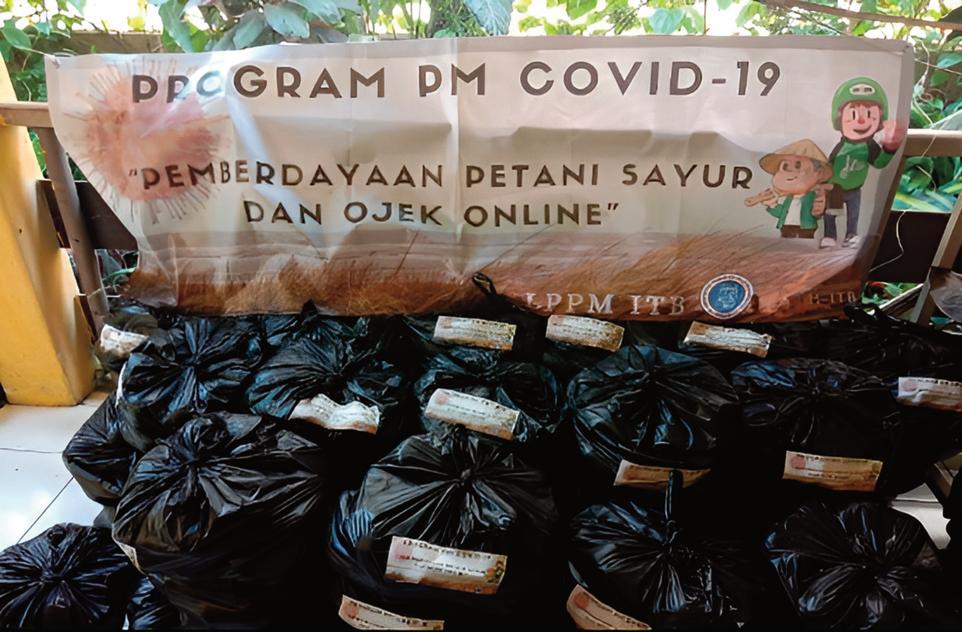
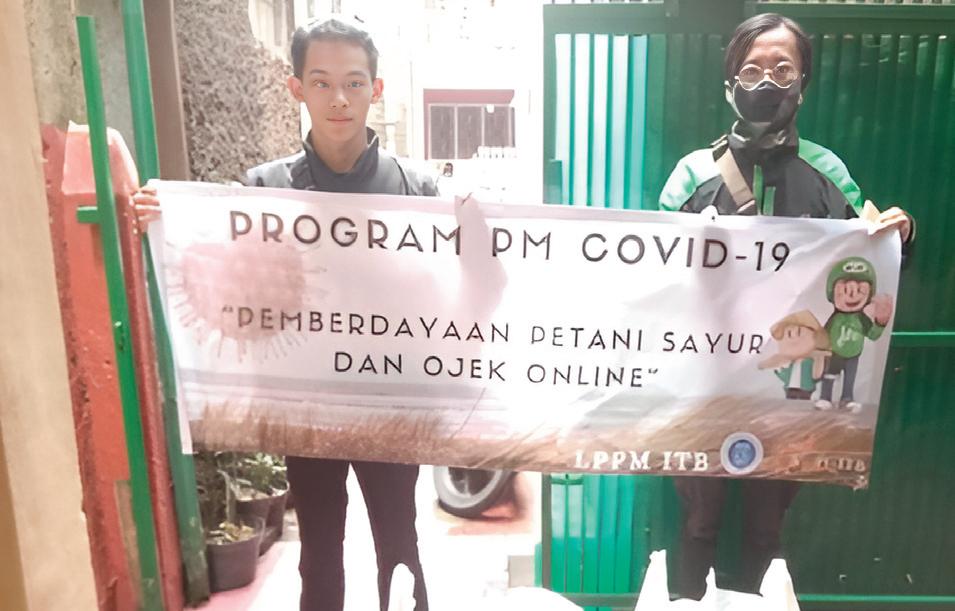
Distribution of vegetables to the community by online motorcycle taxi drivers.
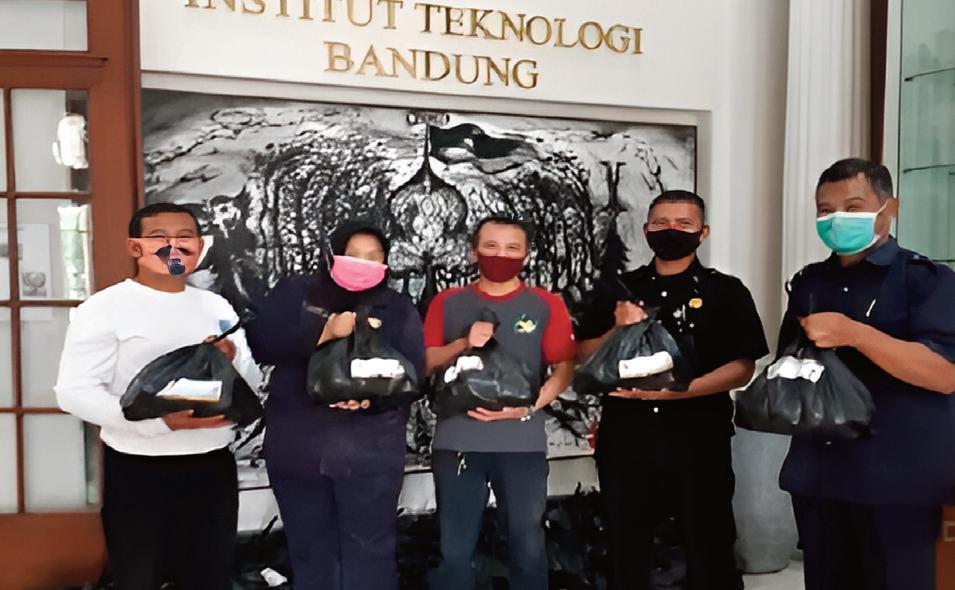
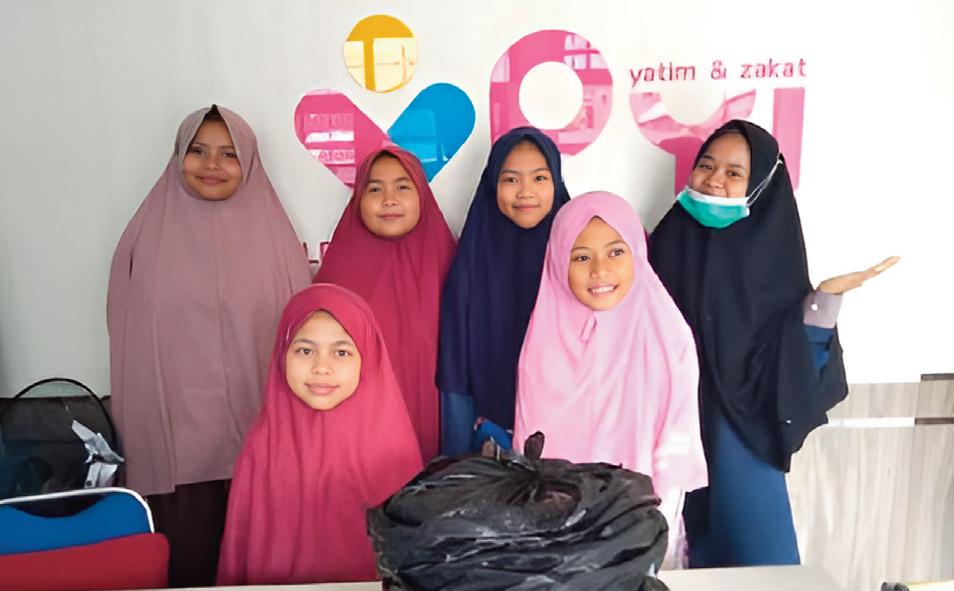
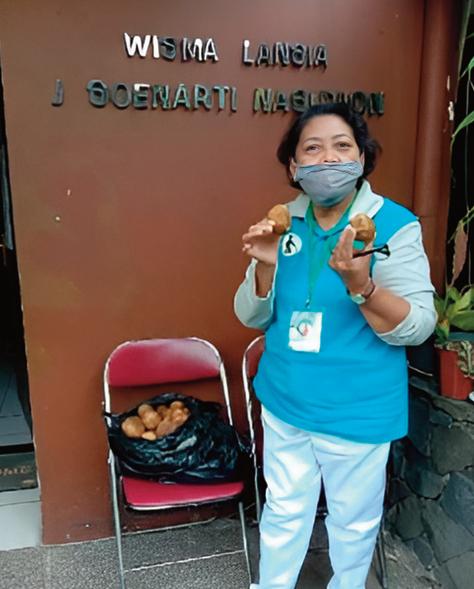
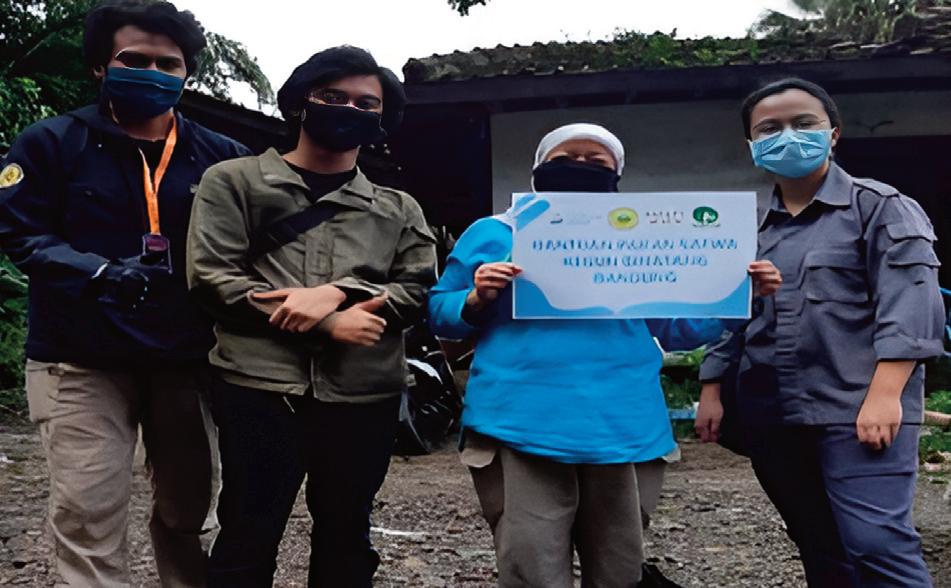
Distribution of vegetables to employees and staff of ITB for orphanages, nursing homes, and Bandung Zoo.
This pesantren has sufficient human resources and land for development, making it suitable for conducting community service activities there. The activities were designed as follows:
1. Lectures (20%): These include introductions and explanations related to the training topics. During the lectures, several aspects were covered, including the importance of environmental conservation, basic knowledge about natural systems and microorganisms, and fundamental knowledge about fertilizers and agricultural systems in Indonesia.
2. Practice (60%): Training participants, assisted by assistants, were taught how to make organic liquid fertilizer from organic waste. The training includes:
a. Preparation
- Sorting of organic waste.
- Selection of microorganism sources. Roots of leguminous plants, Mimosa pudica, Mimosa nuttallii, and Arachis pintoi. These roots serve as a source of bacteria capable of producing plant growth hormones, enhancing plant immunity, and fixing nitrogen for fertilizing plants.
- Selection of nutrient sources (growing media) and their composition.
b. Preparation of Biofertilizer Inoculum
During this process, the community was taught to create biofertilizer inoculum from prepared microbial sources and materials. They were instructed on the basic principles and the necessary tools for the process. The community was also trained to make simple bioreactors required for aeration during the biofertilizer inoculum preparation process.
c. Making organic liquid fertilizer
d. Scale-up process of organic liquid fertilizer
In this process, the community was taught how to increase the production of liquid fertilizer through scale-up processes. They were taught the basic principles and equipment needed to produce liquid fertilizer on a larger scale.
e. Application of organic liquid fertilizer
This process explains how to preserve the liquid fertilizer that has been made and the methods of applying it to fields and plants.
3. Discussion and Q&A (20%).
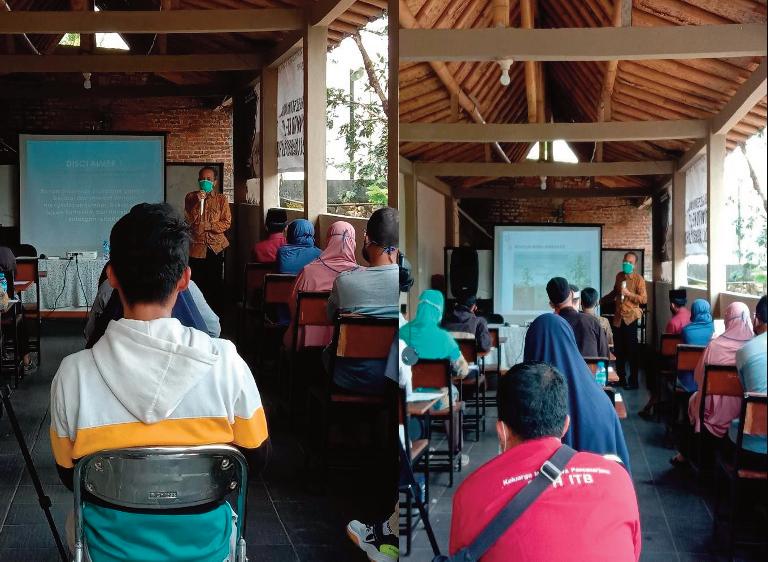
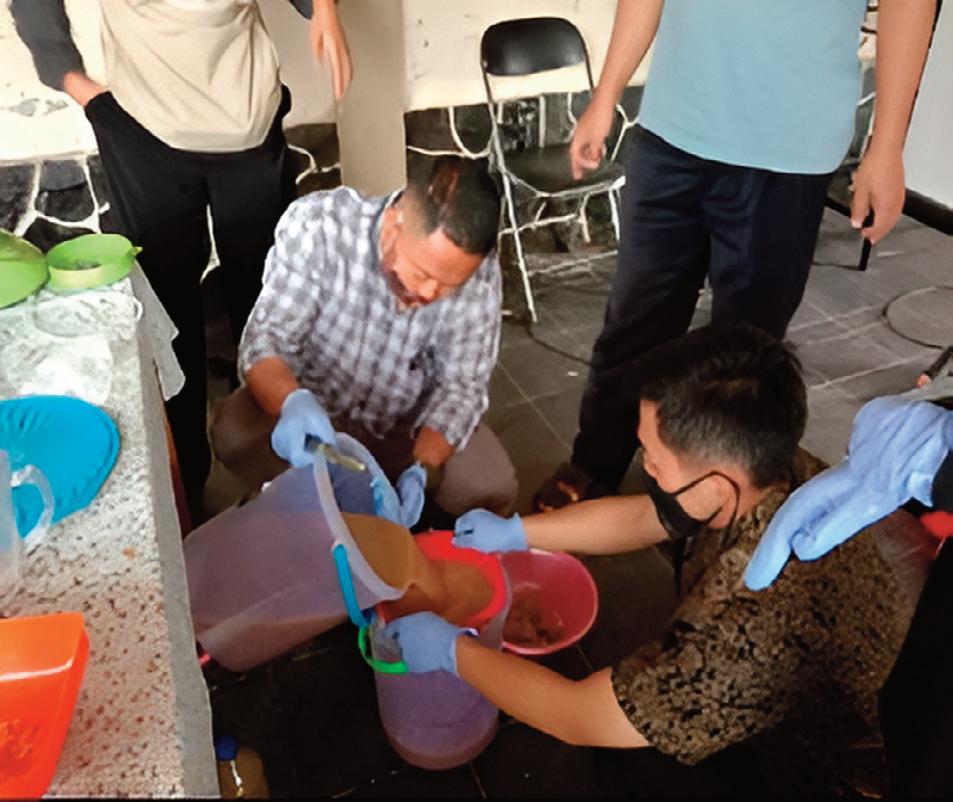
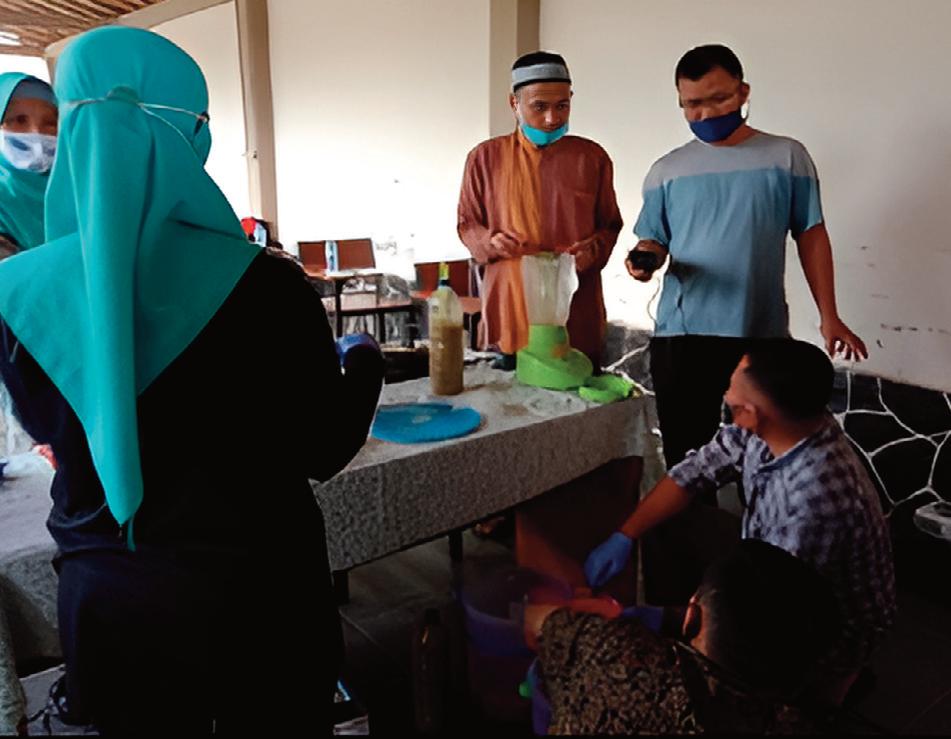
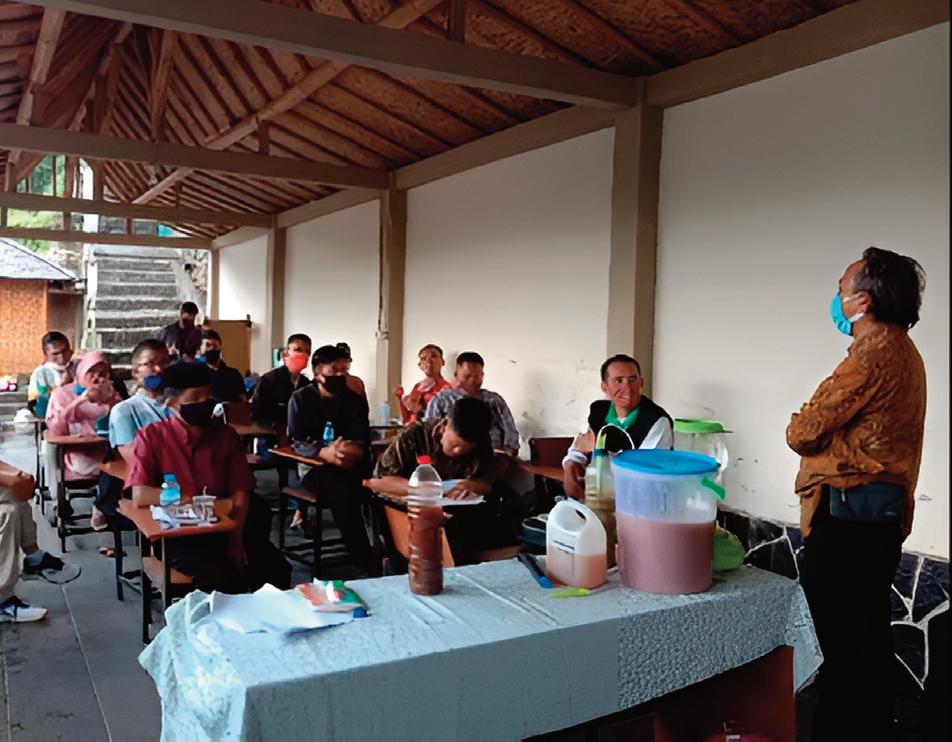
Delivery of material on liquid fertilizer production.
Equipment Needed
Blender
Scale
1.5-liter mineral water bottle
Balloon stick
Aerator hose
Aerator
Coconut milk strainer
1-liter measuring cup
Power source
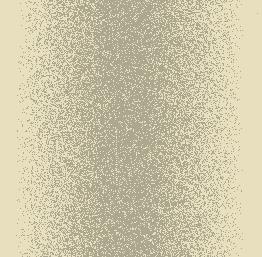
Circulation pump Strainer
Bucket
Stirrer

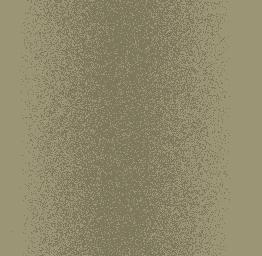






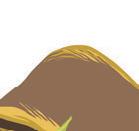








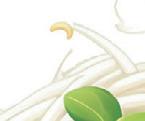

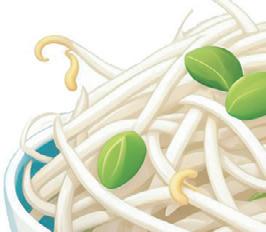





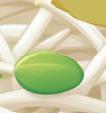
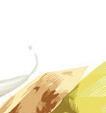

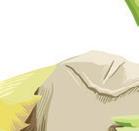
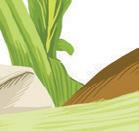

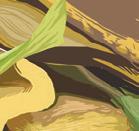

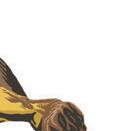


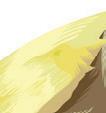


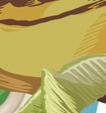

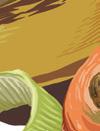



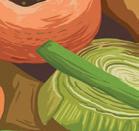
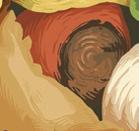
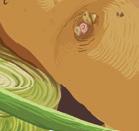
Components%Volume
Molasses/red sugar5% (w/v)50 gram
Sprout juice (mung bean sprouts)2.5% (v/v)25 mL
Vegetable and fruit juice/waste20% (v/v)200mL
Root juice as a bacterial source10 % (v/v)100 mL
Water
Add 100 ml root juice, 25 ml mung bean sprout juice, 200 ml vegetable or fruit waste, and 50 grams of red sugar to the blender, and blend until all components are mixed
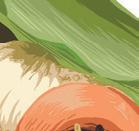
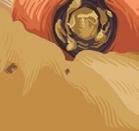

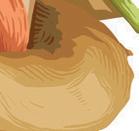 Dacron Water
Culture
Hose
Dacron Water
Culture
Hose
Equipment Needed
Blender
Scale
1.5-liter mineral water bottle
Balloon stick
Aerator hose
Aerator
Coconut milk strainer
1-liter measuring cup
Power source
Circulation pump
Strainer
Bucket
Stirrer
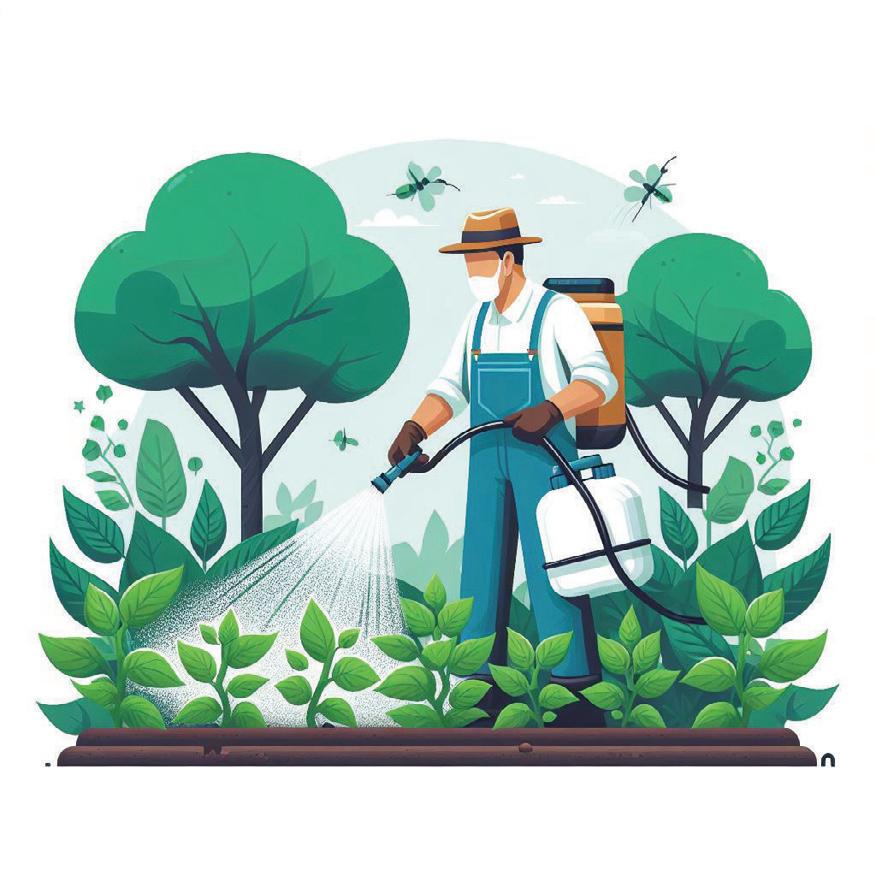
Composition%Volume
Vegetable-fruit juice waste 50%3.5 liters
Molasses/red sugar solution 5%350 gram
Fertilizer inoculum10%700 mililiters
Water
Animal urine
Add cow urine, mix with red sugar-vegetable juice waste, and water into a container, stir until evenly mixed
The bioorganic fertilizer is diluted with water at a dilution rate of 10-100 times.
For storage, it can be kept in a covered container without sealing it tightly as long as the fermentation process is still active to avoid the formation of gas that can cause the container to swell.
For the initial application, the dilution rate is done 10 times using 1 liter of bioorganic fertilizer and then adding 9 liters of water.
For the second fertilization, it can be diluted 25 times, while for the third application, it can be diluted 50 times. The diluted bioorganic fertilizer is then poured (or sprayed) onto the plantation land.
The usage composition is first experimented to determine the optimum percentage of dilution for the liquid bioorganic fertilizer. (Dilution in steps 4 and 5 is not based on experimentation).








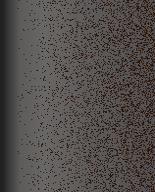









The use of inorganic fertilizers in agricultural activities does indeed enhance crop productivity, but it has negative impacts on the environment, such as damaging the physical and biological quality of the soil in addition to polluting aquatic ecosystems. Intensive use of inorganic fertilizers can reduce soil porosity, water retention capacity, and lead to soil compaction.
The intensive use of inorganic fertilizers can also decrease the diversity and abundance of soil microbiota, which play a vital role in plant existence. In general, it can be said that the intensive use of inorganic fertilizers does not support the sustainability of farming systems in the long term.
The use of organic fertilizers and bioorganic fertilizers can provide a solution to the problems caused by the intensive use of inorganic fertilizers. Bioorganic fertilizers contain microorganisms that produce various enzymes, allowing them to bind atmospheric nitrogen, decompose organic matter into nutrients and phytohormones, dissolve elements from mineral rocks. Additionally, they enhance root absorption capacity for soil nutrients overall, thereby maintaining soil fertility sustainably.
In the production of bioorganic fertilizers, household organic waste can be utilized as a source of organic material and nitrogen, which can be processed by microbes into sources of carbon, nitrogen, minerals, growth hormones, and other components essential for plant growth. The utilization of vegetable waste, brown sugar, and root systems as microbial sources makes bioorganic fertilizers more cost-effective to produce compared to inorganic fertilizers.
The use of bioorganic fertilizers in agriculture also improves soil characteristics, particularly soil electrical conductivity, soil phosphorus content, and soil pH. With the improvement of these soil characteristics, the uptake of plant nutrients can be more optimal, leading to increased productivity of oil palm plants. Additionally, the use of bioorganic fertilizers has been proven to reduce the reliance on synthetic chemical fertilizers and save production costs.
It is hoped that the production of liquid fertilizer from organic waste can enhance the quality of agricultural products and also make organic waste useful. By doing so, it will stimulate and boost the economy of farmer groups and contribute to environmental conservation.***
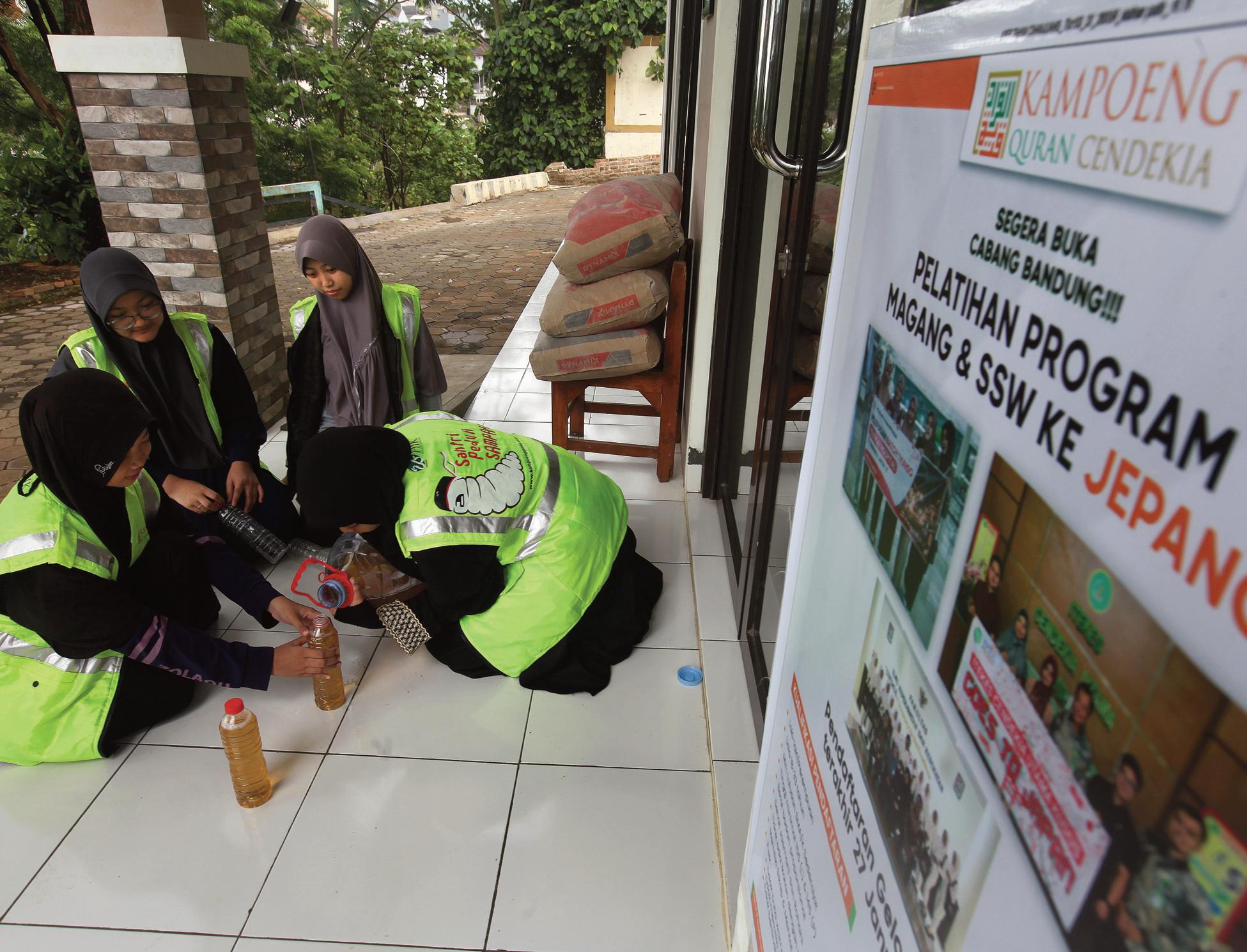
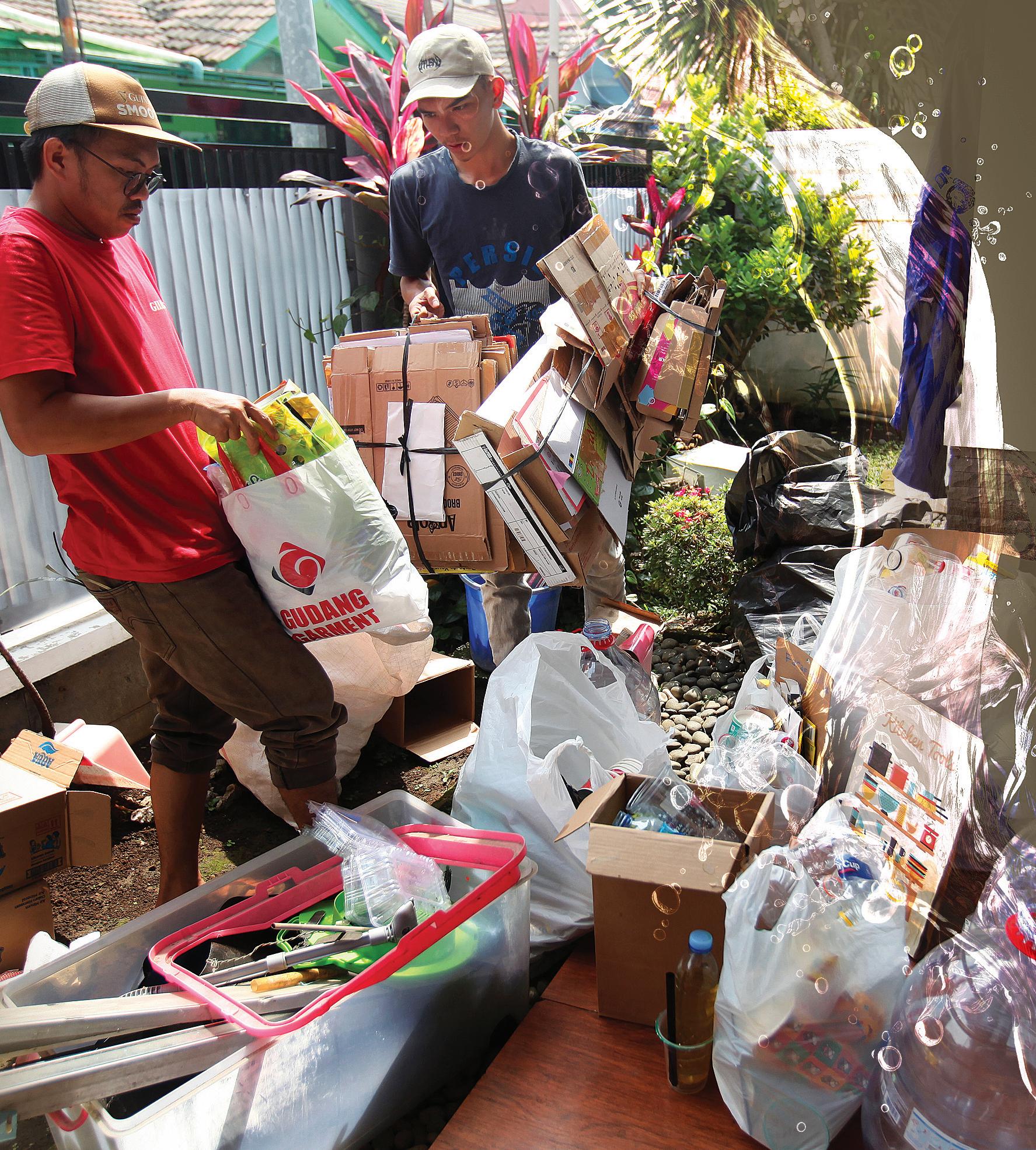
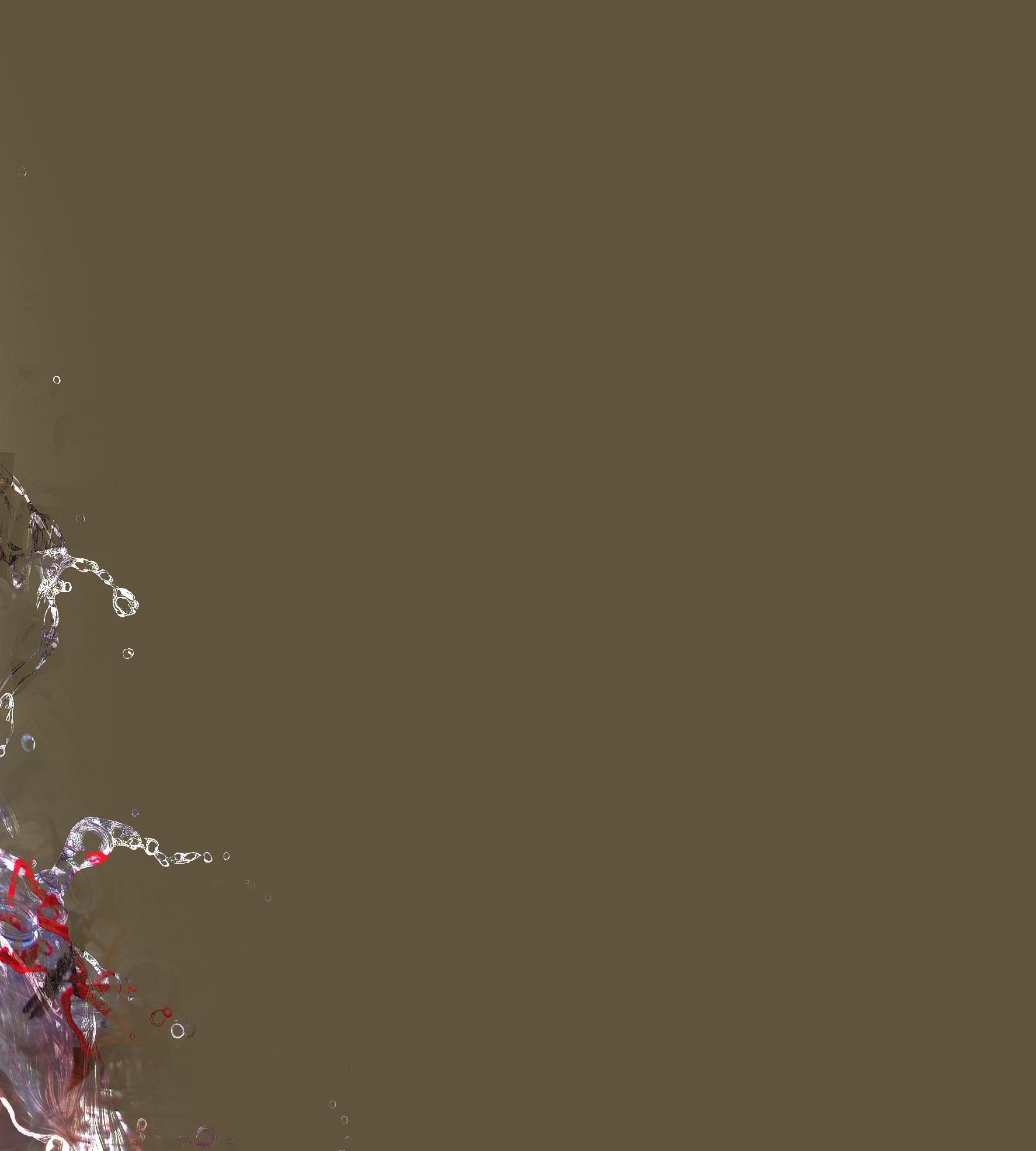
Dinda Annisa Nurdiani, M.T.
Dr. I Made Wahyu Widyarsana
Air and Waste Management Research Group
Faculty of Civil and Environmental Engineering
The establishment of a waste bank program in Cinangsi Village is integrated with the waste management program proposed under the Citarum Harum community service program. This program aims to increase community participation in waste sorting so that the waste can be more easily managed and does not pollute the environment.
Kampung Tarikolot, Cinangsi Village, Cikalongkulon District, Cianjur Regency is among the 629 priority villages scattered in the Citarum River Basin, currently managed by the Citarum Harum Task Force Sector 12 Subsector 3. Since the initiation of the Citarum Harum program, the community in this village has been making efforts to avoid polluting the Citarum River. However, due to various limitations, waste management in Cinangsi Village is still not well-implemented.
In the process of developing participation through waste banks, direct identification of the amount, density, composition, and market value is conducted, along with observations, interviews, and questionnaires to identify the current condition of the waste material flow and to understand the characteristics of stakeholders (such as the community, waste collectors, etc.) involved in waste management.
In the next stage, communication will be established with stakeholders regarding waste management in Kampung Tarikolot, Cinangsi Village. Subsequently, a waste bank business model will be planned, and discussions and training on waste bank management will be conducted. This will be followed by education and campaigning activities on waste segregation.
Waste management in Kampung Tarikolot is not well integrated. RW 02 has not been served by waste collection, so the community dispose of their waste in the environment. In addition, although RW 03 is already served by waste collection, only its “inorganic” waste is managed. The rest is burned.
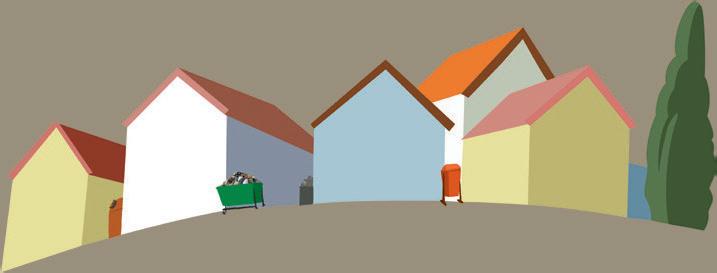

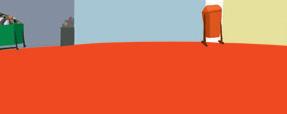

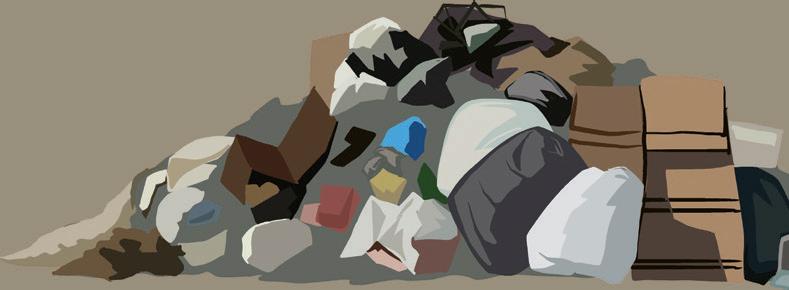

Waste collect point at the s

Improper waste disposal into rivers/drainages
 Waste at the source RW02
Waste at the source RW02

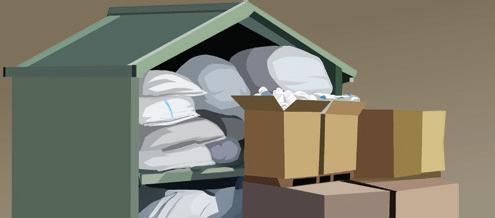





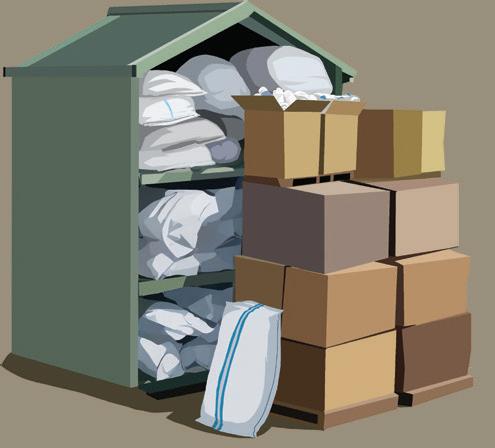

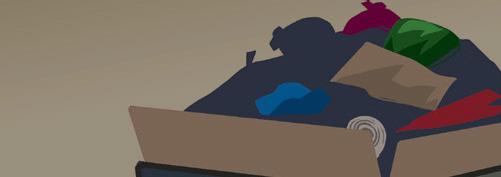


Transportation

Storage/bank of "inorganic" waste
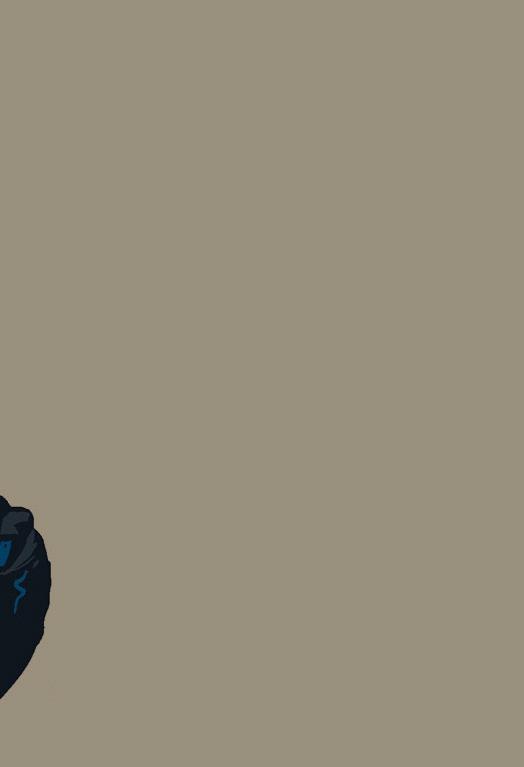

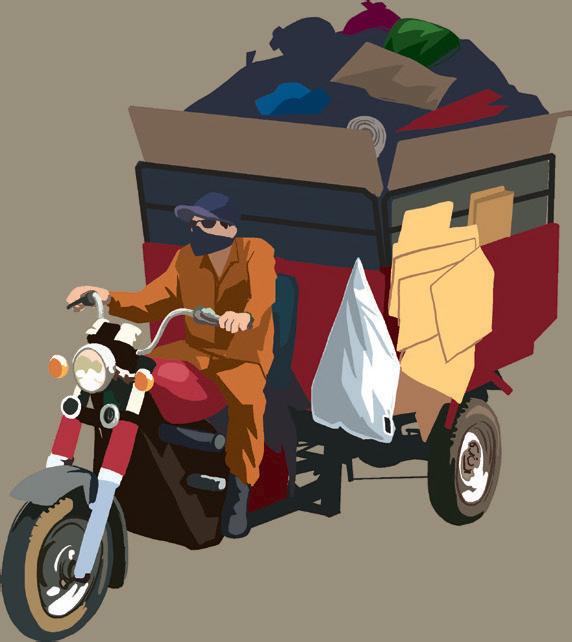

Transportation
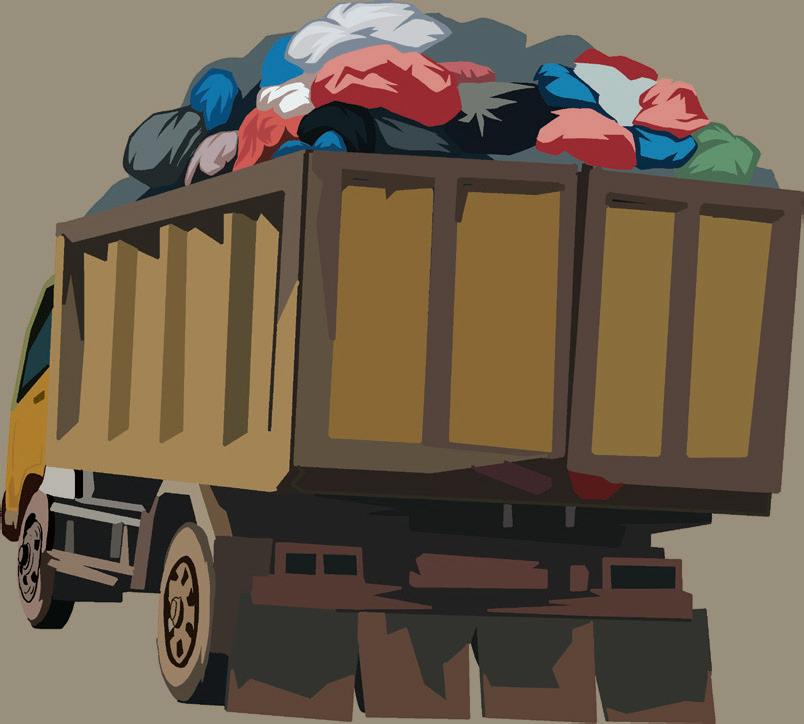



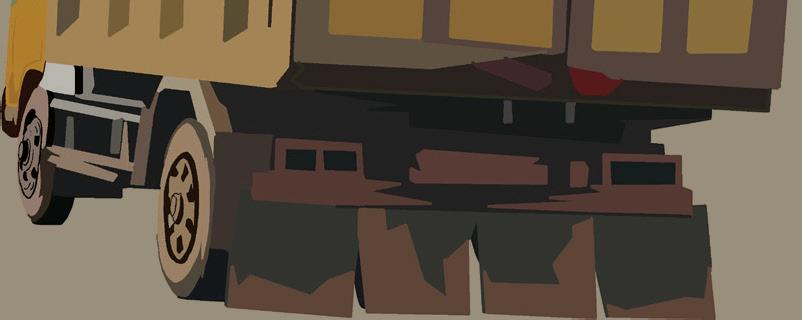

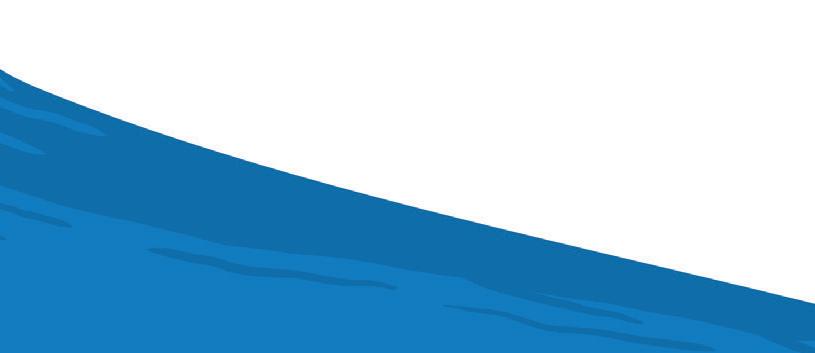



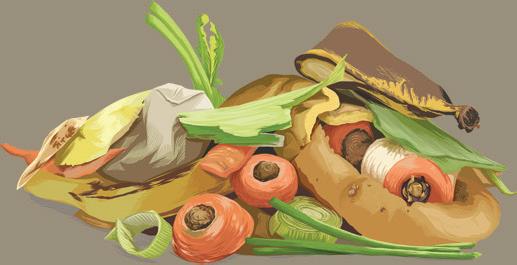
Community service activities:
1. Waste bank benchmarking
Benchmarking is conducted to learn lessons from existing waste banks.
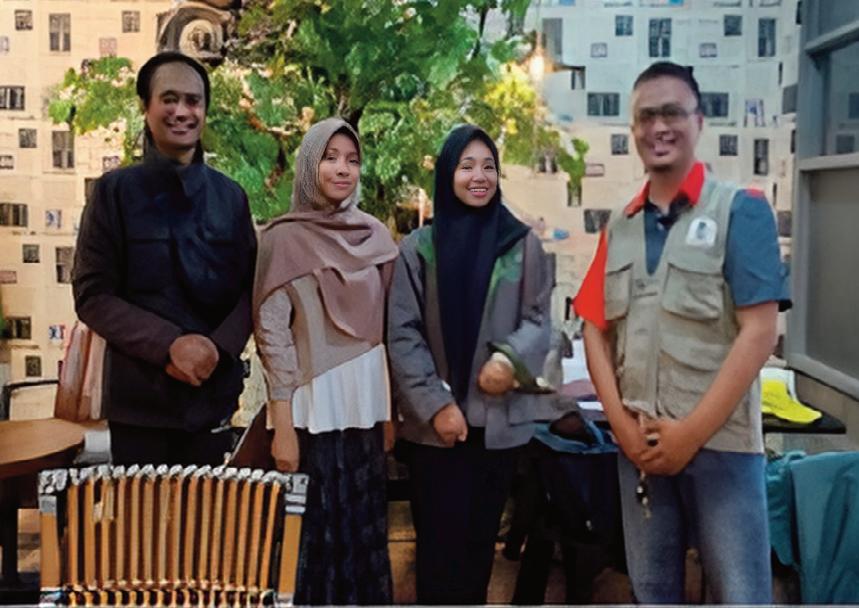
2. Preliminary survey
A preliminary survey is conducted to assess the current conditions related to the addressed issue.

3. Elementary school student education
This activity aims to raise awareness about waste management and a clean lifestyle. Additionally, students are introduced to various types of waste.
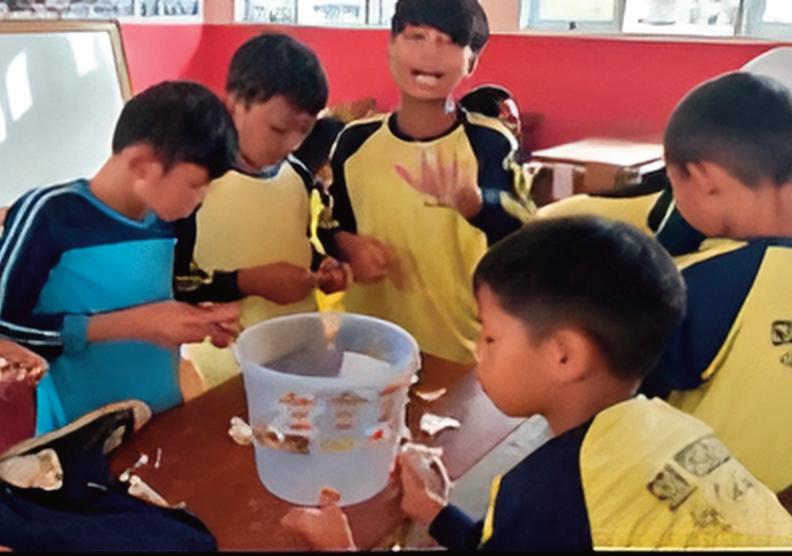
4. Education and Focus Group Discussion (FGD) with community
The same educational activities are conducted for the community. Additionally, FGDs are held to gather opinions on the proposed waste bank system.
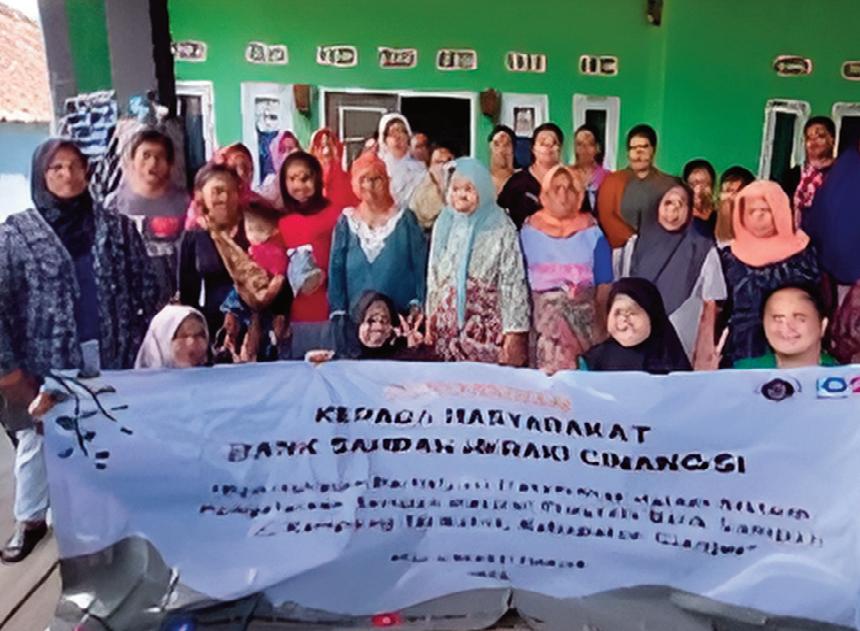
This simulation is conducted to test the planned waste bank system. Additionally, it serves as a training tool for waste bank administrators.
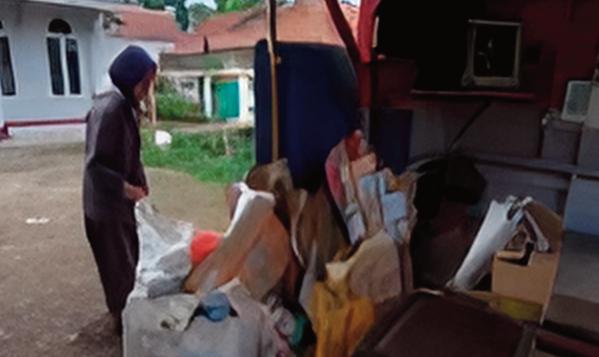
The chosen model for the waste bank is a barter system. Waste bank staff will visit households every 2 weeks to 1 month, and residents will exchange their waste for groceries based on the selling value of the waste.
From the simulation conducted, the average waste collected from one RW every 2 weeks is around 50 kg, with a profit of approximately Rp50,000.00 for the waste bank. This waste bank will be managed by the RW coordinated by the Head of RT 1 with the assistance of community, specifically Mr. Adi. ***
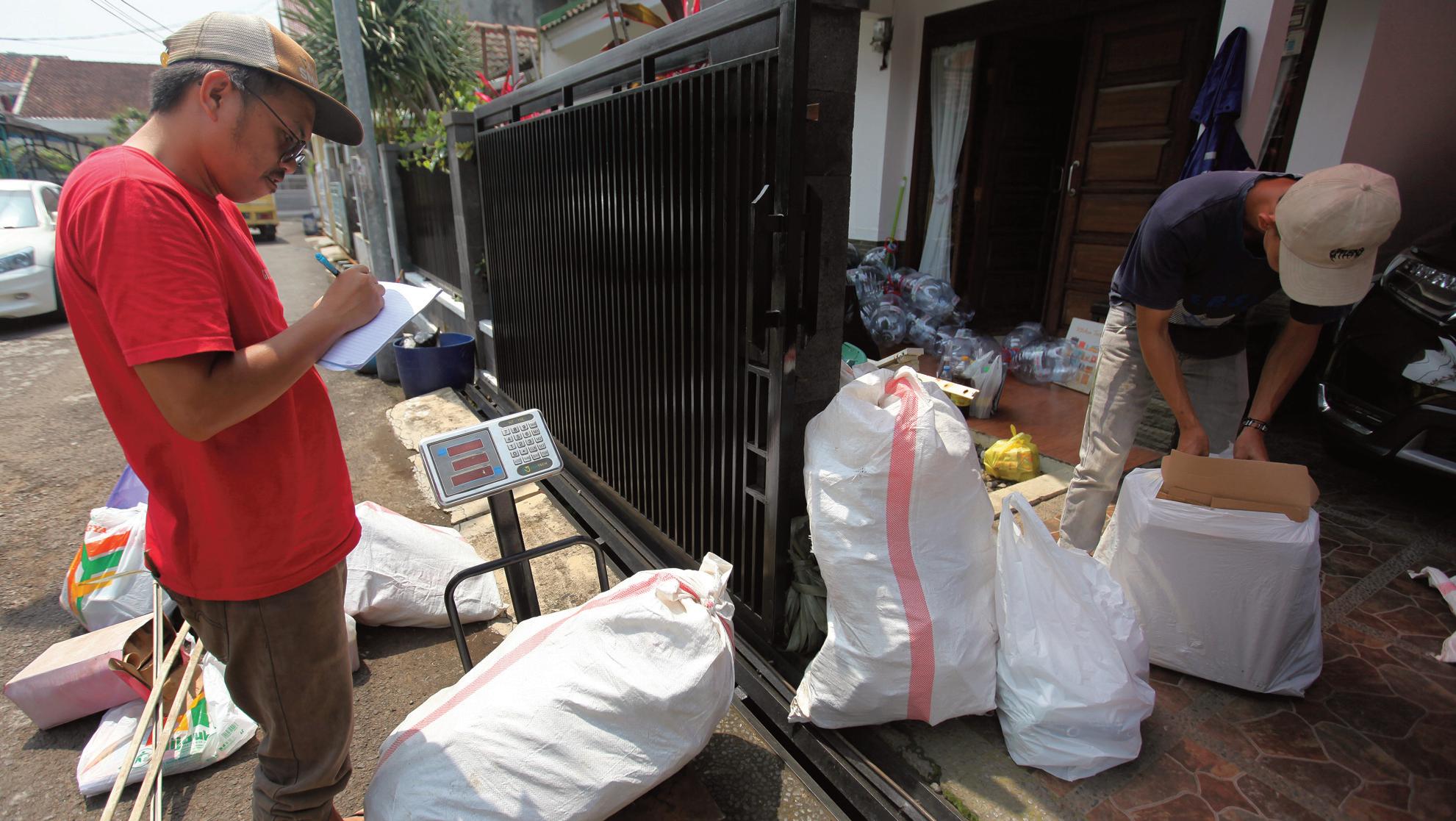 5. Waste Bank Simulation
5. Waste Bank Simulation
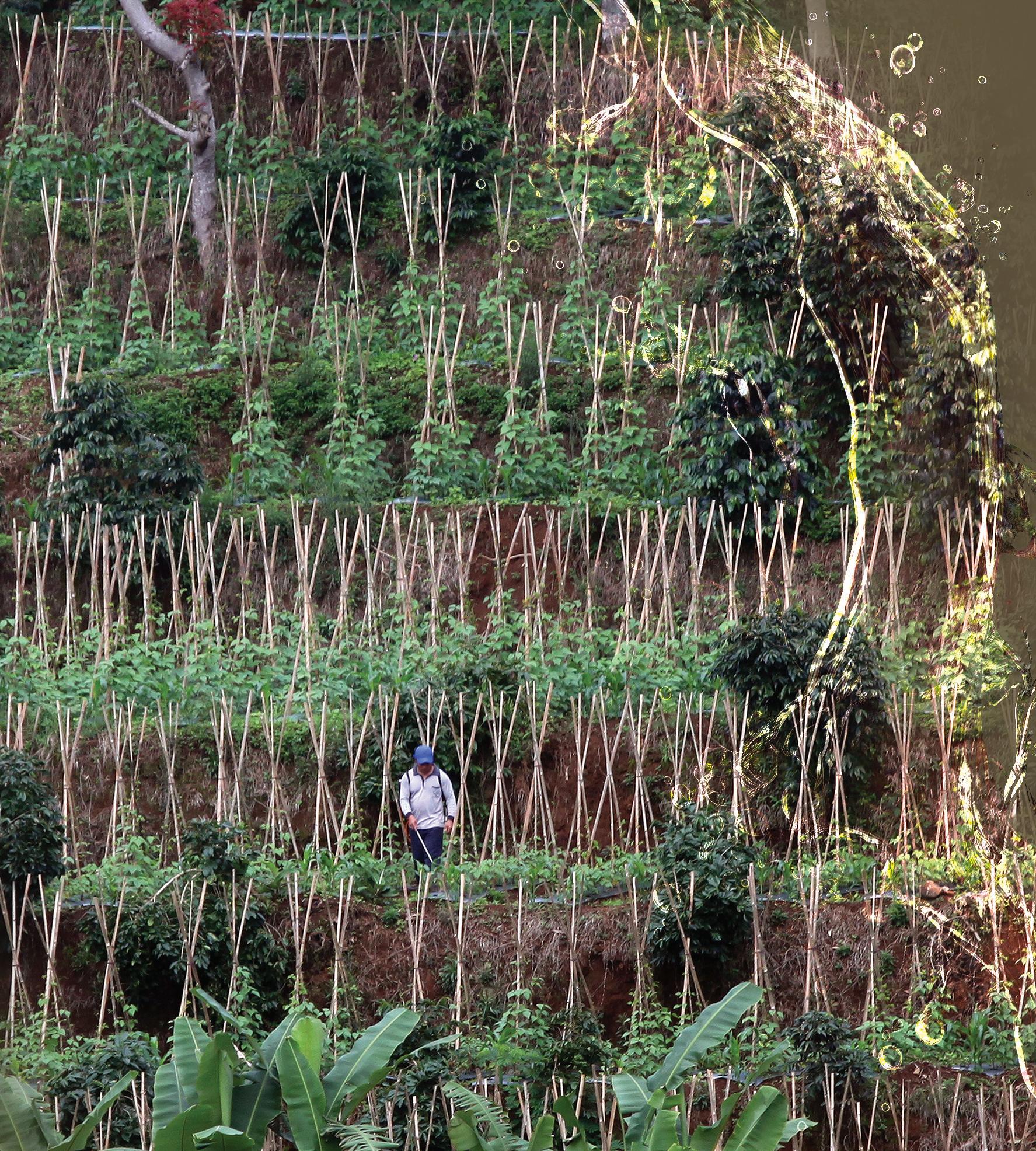
The strategy of forest maintenance against landslide disasters through agroforestry of edible flowers with coffee in the Community Forest Village Institution (LMDH) of Pasirjambu and Ibun Districts, Bandung Regency

Pathmi Noerhatini, M.Si. Prof. Dicky Rezady Munaf, Ph.D. Humanities Research Group, Faculty of Fine Arts and Design
Amanna Dzikrillah L.L. AL Hakim, MAB
Nusa Putra University
Yeyet Setiawati, M.P. Plant Science and Biotechnology Research Group, School of Life Sciences and Technology
Planting edible flowers such as butterfly pea (Clitoria ternatea) as an intercrop with coffee and forestry trees aims to increase the income of the community, thereby encouraging them to also maintain forestry plants. Butterfly pea flowers are blue/purple, resembling butterflies, and are commonly used as ornamental plants that also serve as natural colorants and ingredients for health drinks. The accompanying program includes planting butterfly pea flowers intercropped with coffee and post-harvest handling of butterfly pea flowers and coffee.
ONE strategy for forest conservation in West Java Province is the planting of coffee by members of the Forest Village Community Institution (LMDH) under the forest tree canopy. In 2019-2020, the planting of edible flowers, namely butterfly pea flowers, was introduced to be intercropped with coffee under the forest tree canopy. This is aimed at preventing coffee farmers from cutting down trees and providing them with additional income, as butterfly pea flowers can be harvested more quickly (five months after planting, compared to three years for coffee).
In general, butterfly pea flowers are used as animal feed and ornamental plants. This plant has been cultivated by communities for a long time and used in traditional medicine. Butterfly pea flowers are beneficial for soil fertility enhancement, natural coloring, and health drinks due to their antioxidant content. Furthermore, their marketing is already available, such as exporters in Yogyakarta City and some e-markets.
The innovation of intercropping butterfly pea flowers with coffee plants under the forest tree canopy is an original idea. The innovation applied in this program is green economy through the application of agroforestry systems, which combine forestry, agriculture (coffee cultivation), and intercropping of butterfly pea flowers to prevent landslides and floods. The implementation of the technology application includes technological aspects in the field, post-harvest processing technology, and capacity building for farmer groups.
The community-centered development approach emphasizes empowerment, focusing on harnessing the innovative, creative, and competitive experiences of communities. Therefore, communities are the most important development resource. The goal of community empowerment is to achieve material and spiritual well-being.
There are at least two concepts of community empowerment: individual and group. The concept for individuals emphasizes support and building self-help efforts among the poor so that they can address their basic needs. Meanwhile, the concept for groups involves strengthening community institutions to enhance their capacity to make their endeavors productive and improve their quality of life.
The objectives of both development concepts are poverty eradication, increasing community participation, utilizing local wisdom understood by the local community, and focusing on marginalized groups within the community.
The process and management of innovation utilize the theory of innovation diffusion. Diffusion can be defined as the process by which a new innovation is communicated over a period of time to coffee farmers through social interactions and social media. Diffusion also occurs among members of a social system such as the LMDH, explaining or spreading messages as new ideas. Subsequently,
communication is established among members as the actors create information and exchange information to achieve mutual understanding.
This program produces outputs such as standard operating procedures for Good Agriculture Practices (SOP-GAP) or intercropping practices of butterfly pea flowers with coffee, SOP-GAP for monoculture cultivation of butterfly pea flowers, as well as dried butterfly pea flower products produced through Good Handling Practices (SOP-GHP) or proper postharvest handling practices. Other outputs include articles published in poster exhibitions, international conferences, and research journals.
According to regulation No. 24 of 2007 concerning Disaster Management, a disaster is an event or series of events that threaten and disrupt the lives and livelihoods of communities caused by both natural and/or non-natural factors as well as human factors resulting in loss of human life, environmental damage, property loss, and psychological impacts. One type of disaster in Indonesia is natural disasters such as landslides.
The stages of disaster management include pre-disaster, during the disaster, and post-disaster (Kusumasari, 2014). The pre-disaster stage involves prevention and mitigation, which are actions taken before a disaster occurs with the aim of reducing or eliminating the impact of disasters on communities and the environment, as well as preparedness measures such as regular area checks and early warnings.
One of the efforts to mitigate landslide disasters in the pre-disaster stage, the Bandung District Government through the Regional Disaster Management Agency (BPBD) continues to conduct inspections of areas prone to landslides and floods as a precautionary measure ahead of the rainy season. The majority of villages in Bandung District are potentially prone to landslides, including villages located in the districts of Ibun, Kertasari, Rancabali, Pasirjambu, Ciwidey, Cimenyan, and Pangalengan.
The anticipatory steps include increasing community discipline to prevent deforestation in highland areas. One of the districts located in the highlands is the Ibun district, which is around the peak of Mount Guntur. The Bandung Regent has implemented a tree planting program (reforestation) in landslide-prone and flood-prone areas. The success of this program is also determined by the participation of village officials and village communities through LMDH and PKSM organizations at the regency and district levels.
The LMDH is allowed to plant hardwood plants such as coffee under the forest canopy or among forestry plants from reforestation programs. This reflects local wisdom and the community’s enthusiasm in supporting disaster mitigation programs. Cultivating coffee plants can increase the income of LMDH members, thereby reducing the need to cut down trees. However, there is a drawback to the agroforestry program with coffee, namely that LMDH members will have to wait relatively longer for coffee harvests as coffee plants typically start bearing fruit after 2-3 years.
The community service team of LPPM 2019 proposed to cultivate edible flowers such as butterfly pea flowers (Clitoria ternatea). These flowers contain triterpenoids, flavonol glycosides, anthocyanins, and steroids (http://www.krbogor.lipi.go.id/id/Kembang-Telang-Bunga-Cantikyang-Berkhasiat- Obat-.html). They are beneficial for treating conjunctivitis, natural coloring for wax candles, feed supplements for livestock (Sutedi, 2013), health drinks for eye care or cataract prevention (Kusrini et al., 2017).
The butterfly pea flowers will be dried and processed into powder. The powder is already marketed and supplied to exporters in the Yogyakarta region. Therefore, members of LMDH will earn income more quickly while waiting for the coffee plants to mature.
Planting of butterfly pea flowers (bunga telang) is done in an intercropping manner with coffee (coffee under the tree canopy or coffee planting in areas with forestry plants aged under two years). The butterfly pea flowers are harvested after four months of planting and then dried. The LPPM team provides training and assistance to LMDH members who have coffee plantations that have reached the harvesting age. However, for LMDH members who have coffee plants in the vegetative phase, they will receive training to plant coffee according to SOP-GAP (Good Agriculture Practices).
Involvement of LMDH members in this program has led to the participation of farmers around the activity site to try intercropping butterfly pea flowers with vegetable crops. This has resulted in a good synergy among the farmers.
of butterfly pea flowers
SOP-GHP for butterfly pea flowers Butterfly pea flower market
Landslide prevention strategy through intercropping of forestry trees, coffee, and butterfly pea flowers.
a. Establishment of experimental plots for intercropping butterfly pea flowers with coffee and seedling production of butterfly pea flowers and coffee.
b. Development of SOP-GAP for intercropping butterfly pea flowers and coffee involves creating experimental plots for intercropping butterfly pea flowers with coffee, engaging LMDH members so that they can replicate the process on their own land.
c, Coffee seedling production is initiated at the beginning of the program, as illustrated in the diagram below.
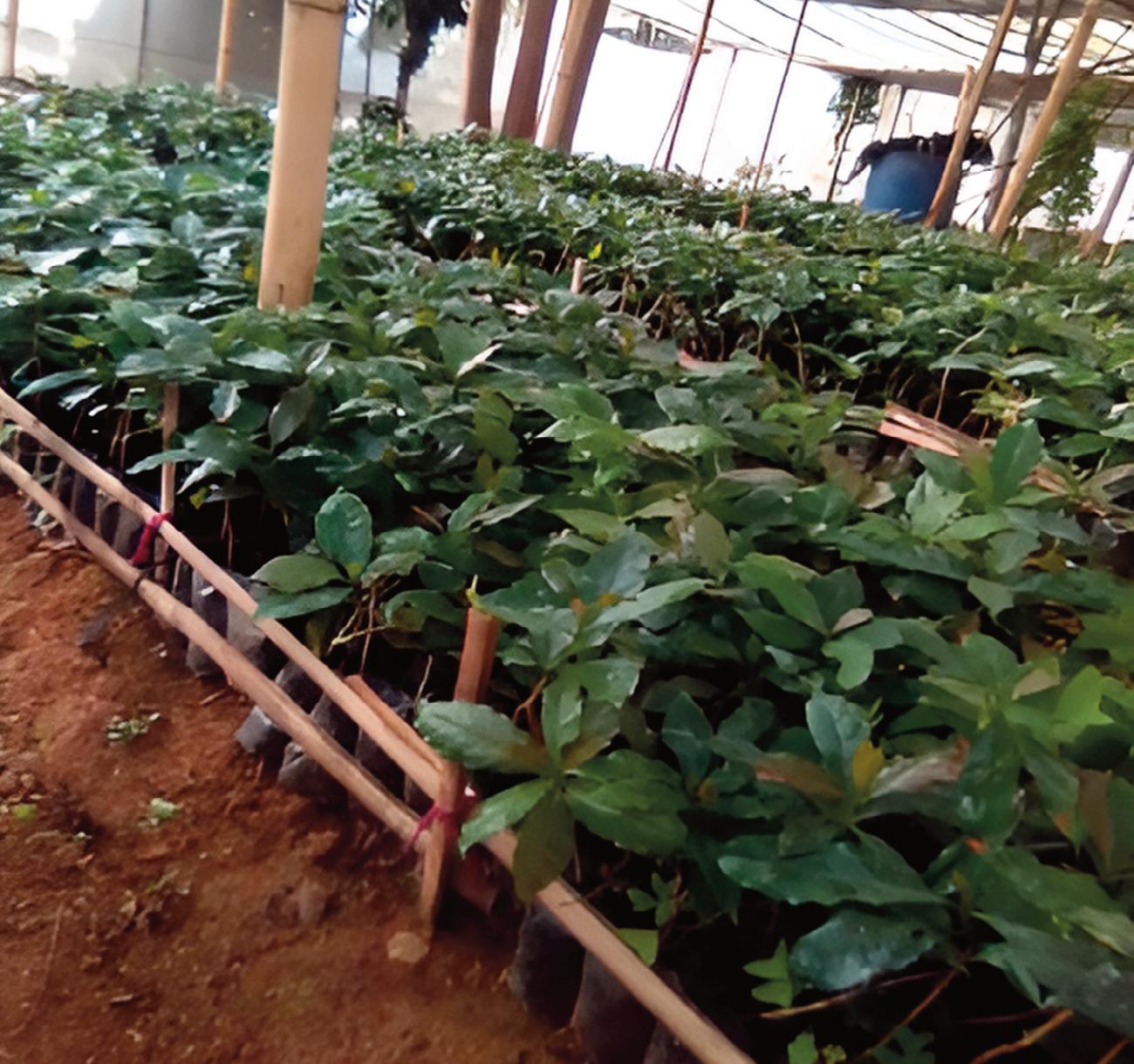
Coffee seedling maintenance.
After preparing the land for intercropping planting plots, the butterfly pea flower seedlings are cultivated.
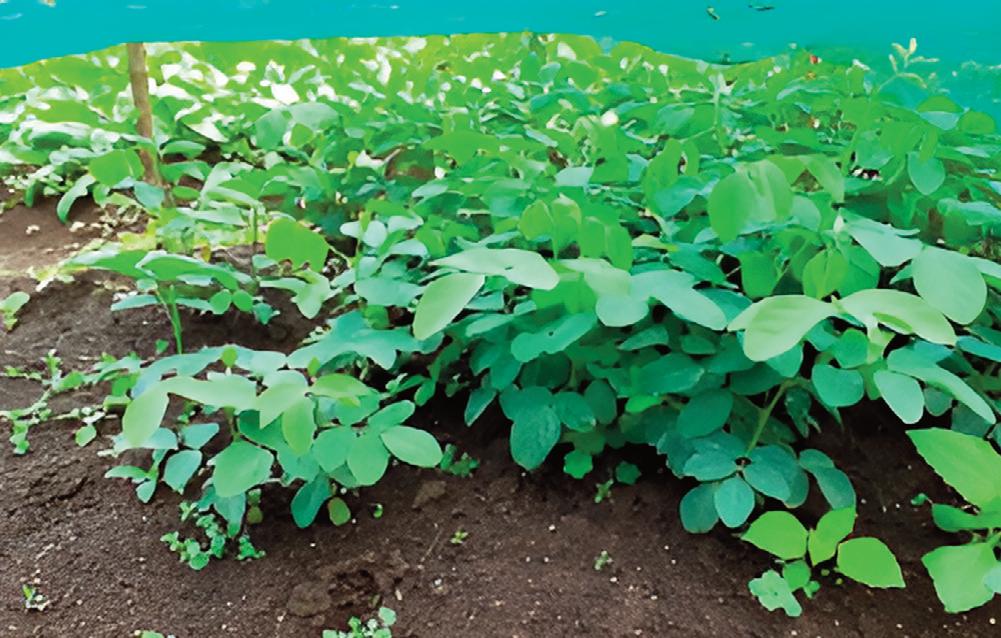
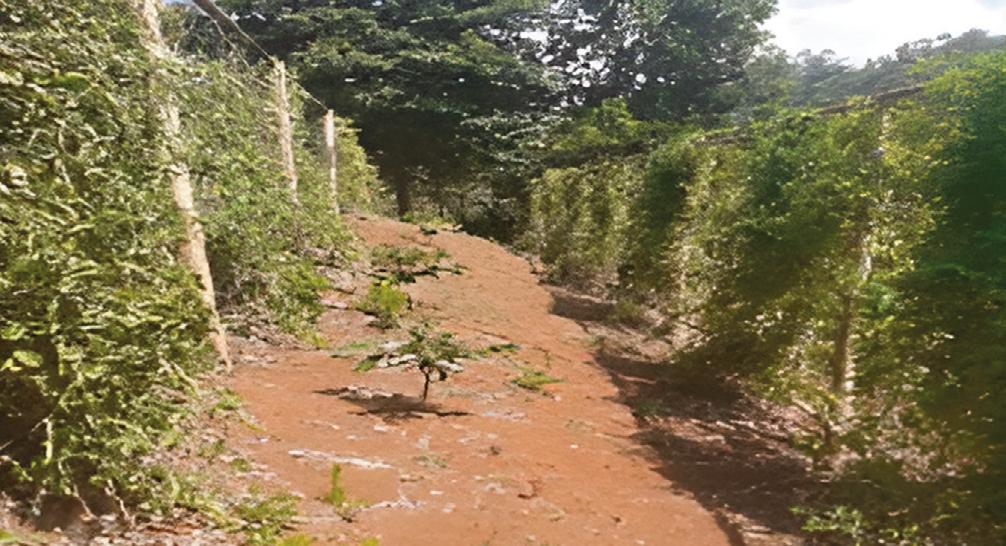

Maintenance of 21-day-old butterfly pea flower seedlings.
Intercropping of butterfly pea flower with coffee on a 30% slope.
Intercropping of butterfly pea flower with coffee on flat land.


Facilitation by the LPPM team


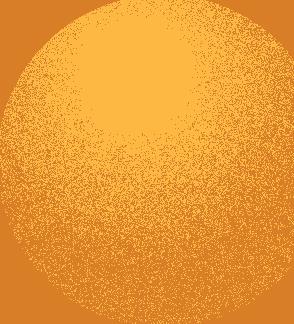





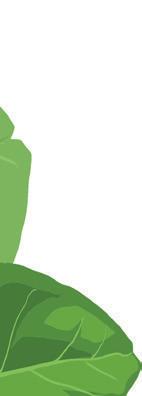


Members of the LMDH in Pasirjambu and Ibun Districts, Bandung Regency






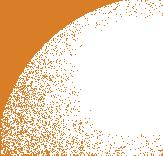


SOP-GHP for harvested
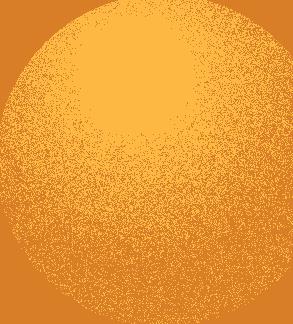
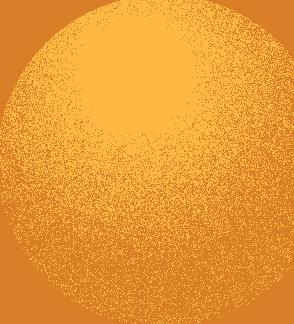
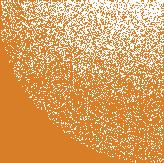
of butterfly pea flowers

Development of SOP-GAP for intercropping butterfly pea flowers and coffee
•Maintenance of 8-12 months old coffee seedlings.
• Land preparation by creating terraces for simulating coffee planting on slopes > 30%.
• Digging planting holes for coffee, adding 10 kg of manure, 0.1 kg of lime, and 0.05 kg of NPK fertilizer per planting hole Next, coffee seedlings are planted with a spacing of 3 meters along the terraces.
• Butterfly pea flower seedling production 30 days before planting in polybags with a diameter of 10 cm.
• Establishment of a butterfly pea flower stand along a 3-meter bamboo pole, then installing a net.
• Planting butterfly pea flowers (previously adding 3 kg of manure, 0.1 kg of lime, and 0.025 kg of NPK fertilizer to the planting hole).
•Plant maintenance.
• Flower harvesting.
• Harvesting butterfly pea flower seeds at 70-80 days after planting, drying and shelling the pods. Seeds are collected and placed in plastic bags.

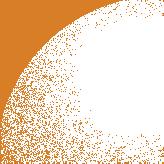

SOP-GHP for butterfly pea flowers


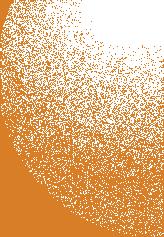




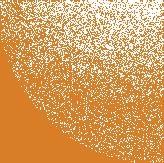


pea flower market
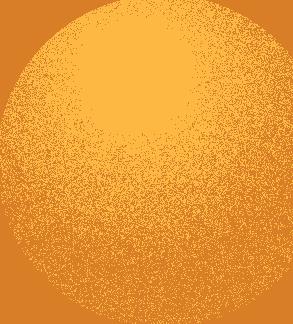

Development of SOP-GAP for Butterfly Pea Flowers (Monoculture)
• Prepare the land by creating terraces for simulating planting on slopes greater than 30%.
• Seed butterfly pea flowers 30 days before planting in polybags with a diameter of 10 cm.
• Establish butterfly pea flower stands along a 3-meter length using bamboo poles, then install nets.
• Dig planting holes for butterfly pea flowers, then add 3 kg of manure, 0.1 kg of lime, and 0.025 kg of NPK fertilizer. Proceed with planting butterfly pea flowers.
• Plant maintenance includes watering, weed control, pest and disease control, and tying butterfly pea flower branches to the nets.
• Harvest butterfly pea flowers followed by drying.
• To obtain butterfly pea flower seeds, allow the flowers to develop into pods. Harvest the pods 70-80 days after planting, then dry them. Next, remove the seeds from the pods. Collect the seeds and place them in plastic bags.
Steps for making dried butterfly pea flowers
Harvesting fully bloomed flowers
Sorting the flowers
Packaging
Ibun District, Bandung Regency
Arranging the flowers in plastic containers
Drying the flowers in a screenhouse (2x24 hours)

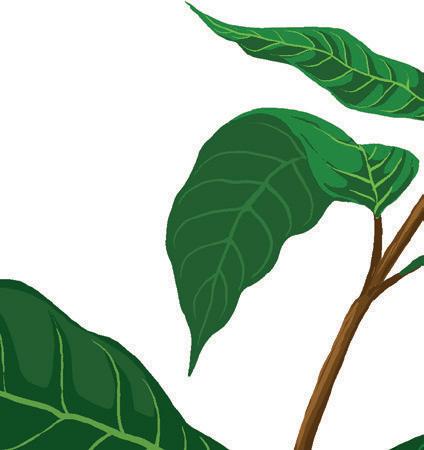
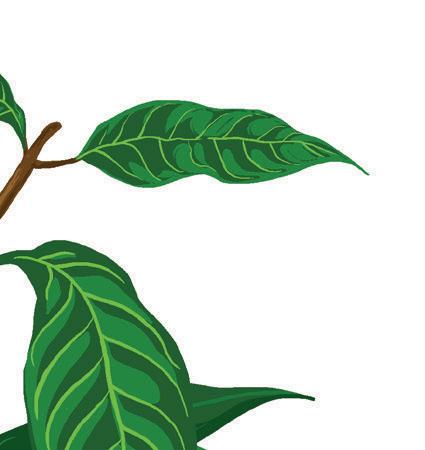
Tenjolaya, Pasirjambu District

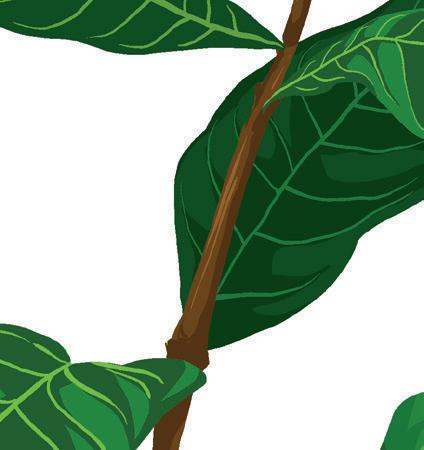


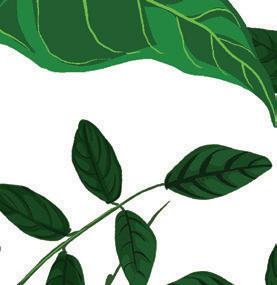
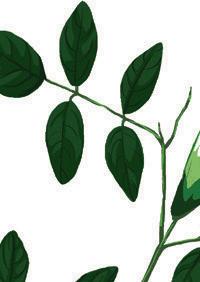
SOP Good Harvest Practices (SOP GHP) for Coffee Fruit Post-Harvest Handling
Harvesting Ripe Fruits
Sorting 1 (Separation of dirt, damage, and diseased fruits)
Sorting 2 (Sorting based on Fruit Ripeness)
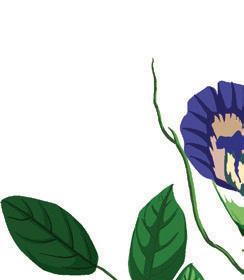
Pulp removal using a depulper
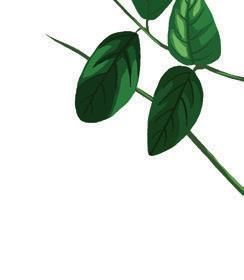



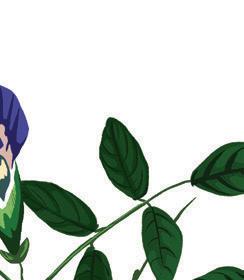
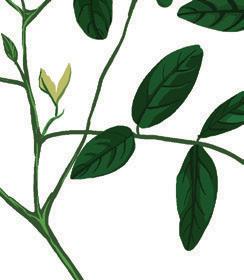


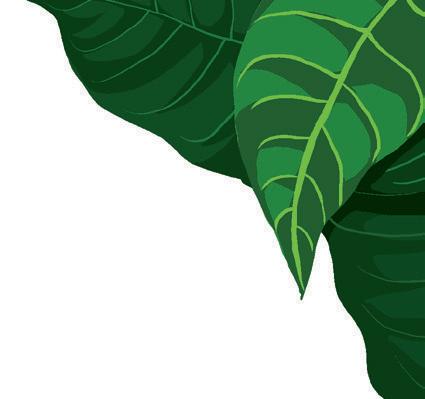
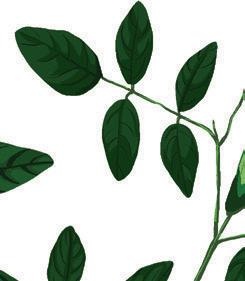
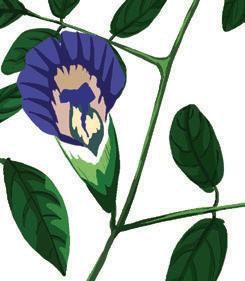
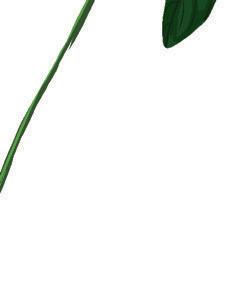
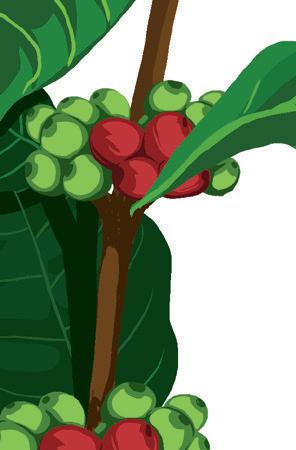
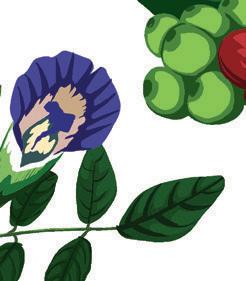
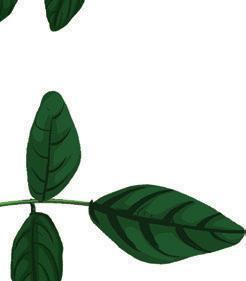

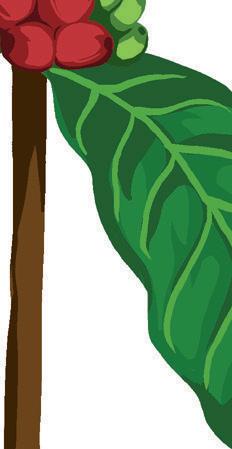

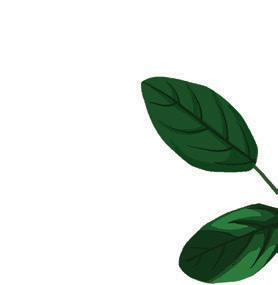
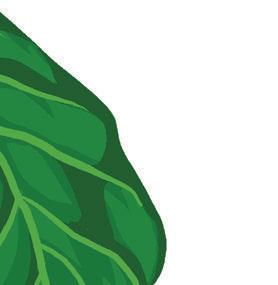




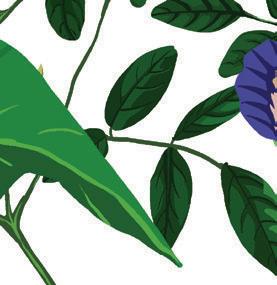


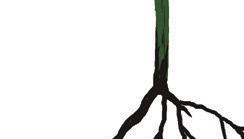


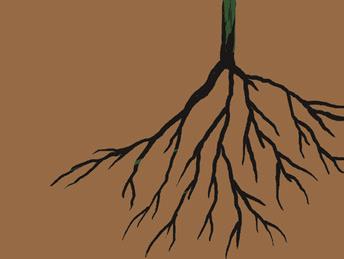







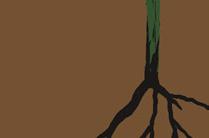
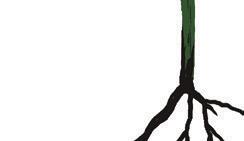


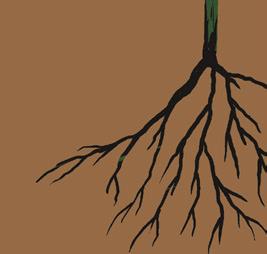





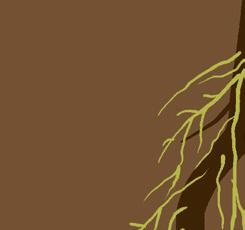
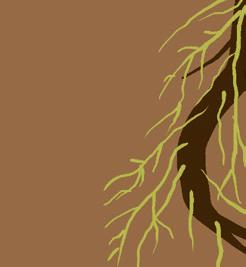
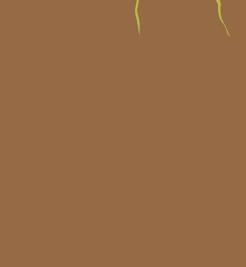
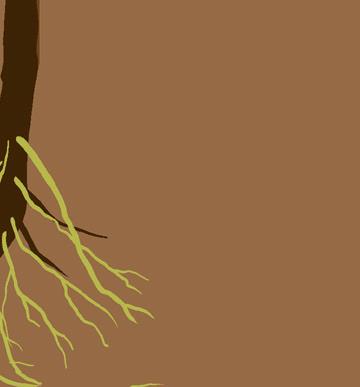
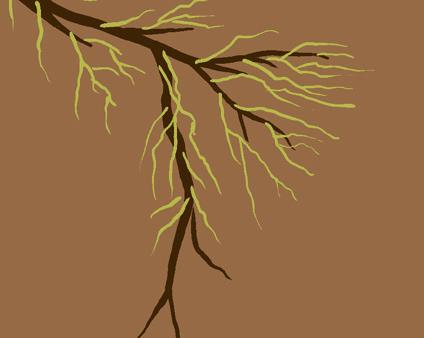
 Washing
Drying
Green Bean Storage
Hulling using a Huller machine
Washing
Drying
Green Bean Storage
Hulling using a Huller machine
Stages of producing dried butterfly pea flowers.

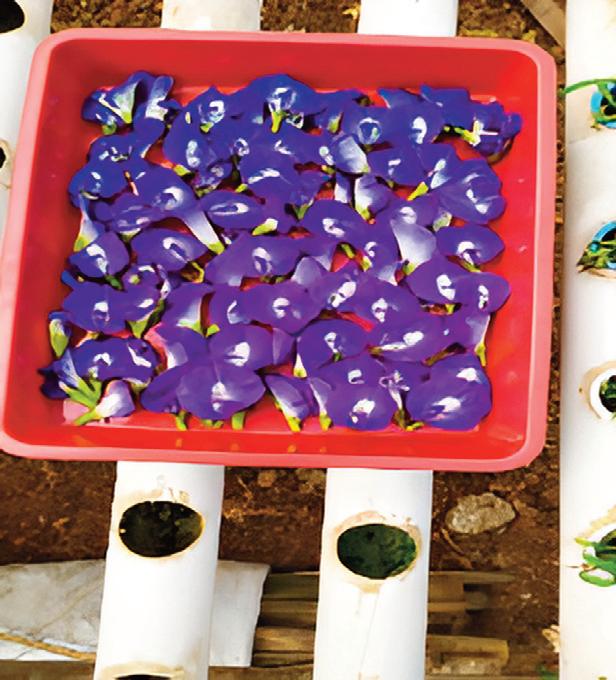
Packaging of butterfly pea flowers.
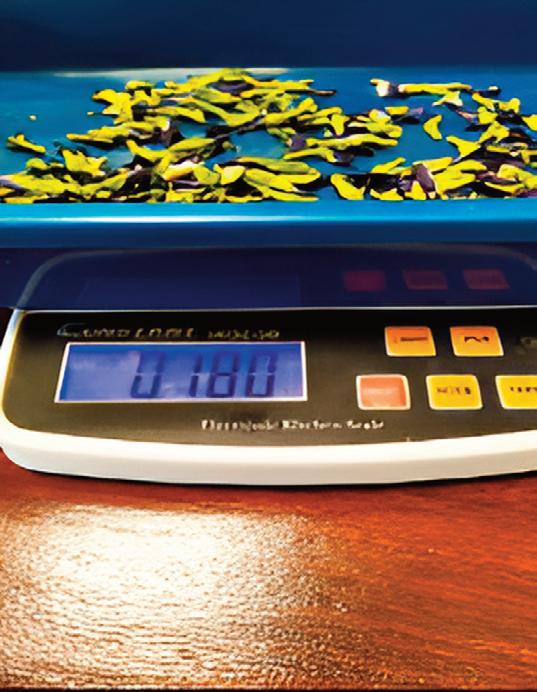

Construction of a greenhouse for drying flowers and coffee.
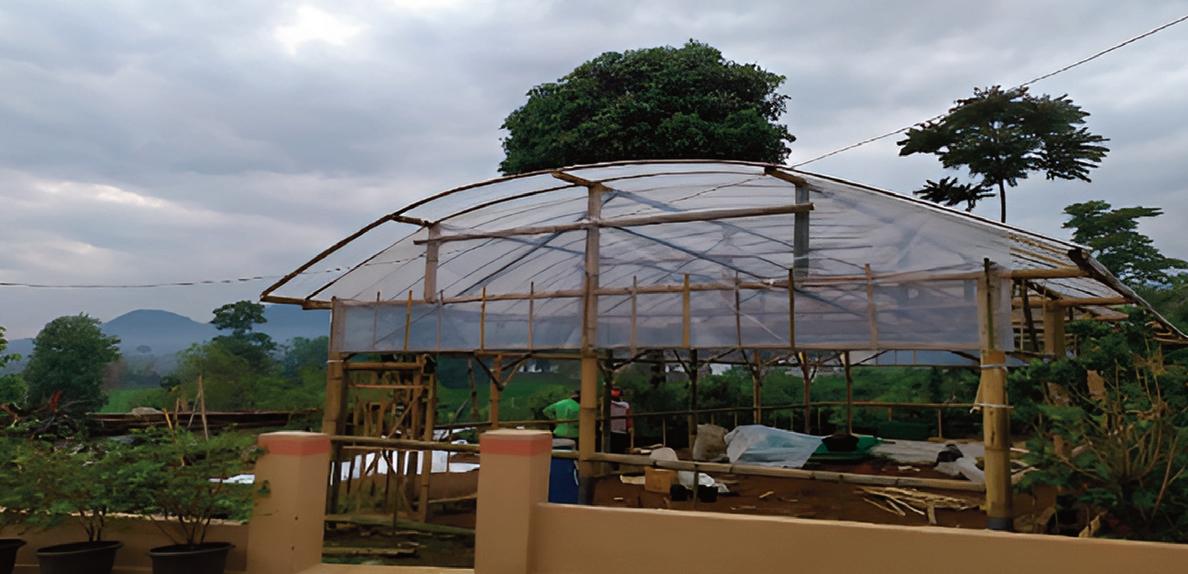
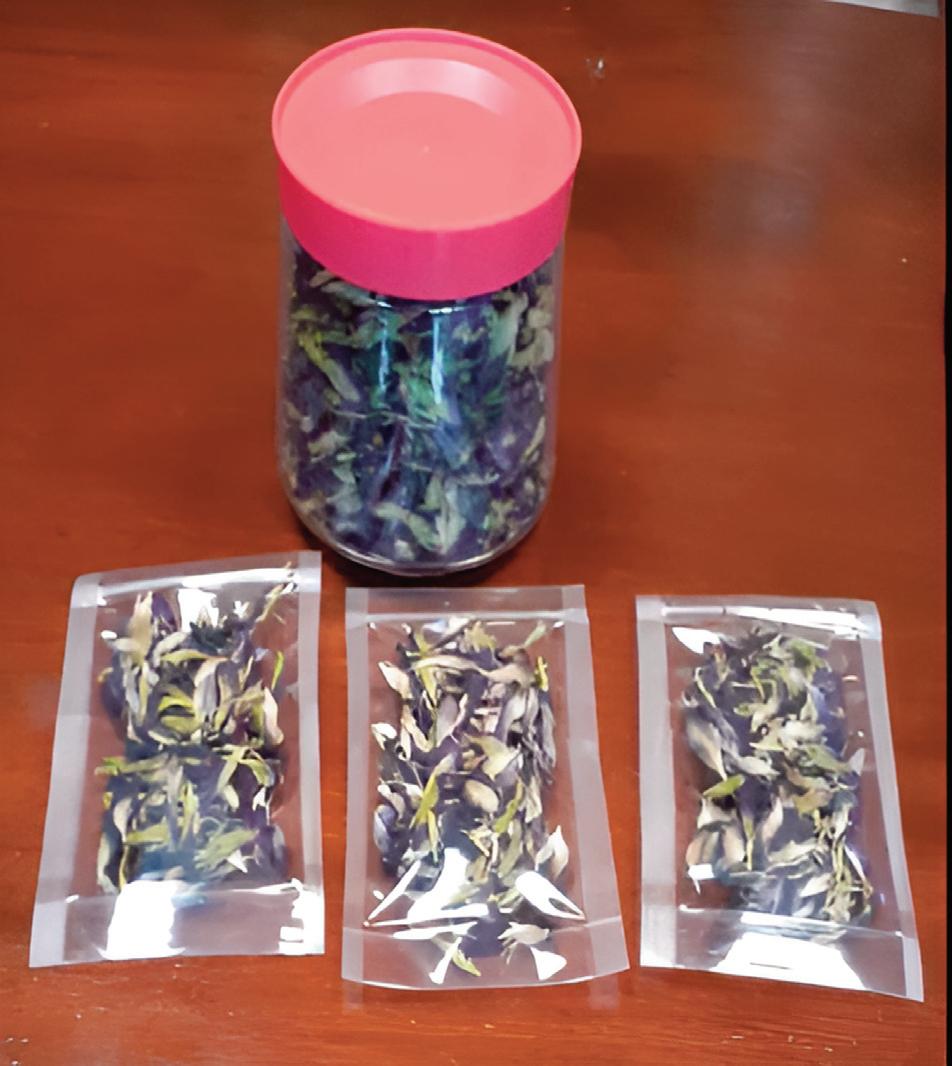
Based on weight calculations, the yield of dried butterfly pea flowers is 13 grams for 150 flower buds. The minimum selling price for dried butterfly pea flowers is set at Rp1 million (online stores sell for Rp1.2 million per kg), and butterfly pea flower seeds are priced at Rp13,000 per 100 seeds (online stores sell for Rp15,000).
Dried butterfly pea flowers ready for sale.
The team conducted socialization by visiting community leaders, voluntary forestry extension workers, chairpersons, and members of LMDH in the Pasirjambu and Ibun Districts.
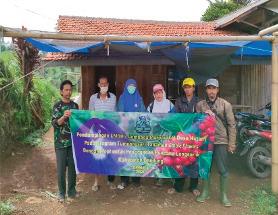


Community engagement program promotion on the intercropping of butterfly pea flowers with coffee plants.
Mapping Forest Village Community Institution (LMDH) of Tenjolaya, Pasirjambu District
The Tenjolaya Farmer Group has 313 members, with a coffee plantation area of 355.9 hectares.
The LMDH Tenjolaya has six foster groups:
Tarabas, Independent Farmers, Tarsan, Celak, Pasirluhur, and Arhasan Group.
Limitations:
1. Simple coffee processing technology resulting in poor quality of processed coffee.
2. Lack of information/access to the market.
3. SOP-GAP for coffee cultivation has not been implemented.
4. Capital for coffee and butterfly pea cultivation is not available.
5. Limited land for coffee processing.
6. Coffee processing equipment is not available.
7. Government extension services are not maximized.
8. Promotion access is still lacking.
Kawah Putih Kawah
Needs:
Guidelines in the form of SOP-GAP, guidelines in the form of SOP-GHP, post-harvest equipment, market access (for coffee and butterfly pea), capital, and mentoring.
Members
Men (94%)
Women (6%)
Age of Members
18-30 years old: 20%,
Over 30 years old: 80%
Stadion Si Jalak Harupat
Mapping of Coffee Farmers in Ibun District (2019)
LMDH Bukit Monteng 1 with land area: 300 ha
LMDH Dukuh Munggaran with land area: 250 ha
LMDH Bukit Monteng 2 with land area: 50 ha
LMDH Mekar Wangi with land area: 200 ha
LMDH Cibuliran with land area: 200 ha
LMDH Neglasari with land area: 300 ha
Ciparay Majalaya Solokan Jeruk Rancaekek CileunyiInterview Results:
To what extent do coffee farmers understand intercropping with butterfly pea flowers? We conducted interviews with several coffee farmers regarding their understanding of intercropping with butterfly pea flowers.
Table of Potential, Needs, and Limitations of LMDH, as well as Information on Butterfly Pea Flowers (Case: Coffee Farmers in Ibun District, 2019) No Name, Age (years)
1 Dahlan, 45 Coffee Lack of government education and limited access to information for farmers
2 Aja, 45 Horticulture and Coffee
3 Udan Sundana, 43 Hortikultura dan Coffee
Capital and information regarding good coffee post-harvest practices
SOP - Good Agricultural Practices (GAP) and Good Handling Practices (GHP) (post-harvest) for coffee
SOP GAP, GHP for coffee, tools supporting plant cultivation
Just found out and interested
Just found out and interested
Lack of government education and limited access to information for farmers Just found out and interested
4 Iin Supriatna, 45 Coffee Capital, post-harvest coffee equipment, guidelines for good coffee post-harvest practices. Inconsistent quality of results, lack of well-structured market access
5 Undang S, 51 Horticulture and Coffee Lack of government education, land for post-harvest coffee processing, limited access to information for farmers, unclear market
6 Aceng, 47 Coffee Variety of post-harvest coffee handling
7 Ayi Juhana, 51 Coffee
Variety of post-harvest coffee handling
8 Atang, 44 Coffee Variety of post-harvest coffee handling, absence of a stable market
9. Mamat, 46 Horticulture and Coffee Lack of government education and limited access to information for farmers
SOP-GHP for post-harvest coffee, tools supporting the post-harvest coffee process
SOP and GHP for postharvest coffee, guidance on market access
SOP and GHP for postharvest coffee
SOP and GHP for postharvest coffee
SOP and GHP for postharvest coffee, briefing on market access
SOP and GHP for postharvest coffee
Just found out and interested
Just found out and interested
Just found out and interested
Just found out and interested
Just found out and interested
Just found out and interested
No Name, Age (years)
10 Taryat, 47 Limited Horticulture and Coffee for Farmers
Lack of government extension services, limited information access for farmers, and limited land
11 Iri, 49 Coffee Variety of post-harvest coffee handling
12 Odin, 49 Coffee Capital, limited land, and information on good post-harvest coffee handling
13 Eye, 45 Coffee Capital, limited land, and information on good post-harvest coffee handling
14 Aman, 46 Coffee Variety of post-harvest coffee handling, absence of a stable market
15 Irin, 46 Coffee
Lack of government education, land for post-harvest coffee processing, limited access to information for farmers, unclear market
Based on the field visits and interviews, the team conducted training as follows:
- Production management training, which includes basic entrepreneurship/planning for production scale (June 2019 and September 2019).
- Mentoring was conducted, including training partially attended by the younger generation to teach the elders, and discussions with LMDH members in groups and individually.
- Training for seedling, field planting, and maintenance of butterfly pea flowers was not
SOP and GHP for postharvest coffee Just found out and interested
SOP and GHP for postharvest coffee Just found out and interested
SOP and GHP for postharvest coffee Just found out and interested
SOP and GHP for postharvest coffee Just found out and interested
SOP and GHP for postharvest coffee Just found out and interested
SOP and GHP for postharvest coffee Just found out and interested
conducted as the members were already able to do it themselves (since their farming practices are almost the same as those for beans). They understood it well, especially after seeing the demonstration plots, which resembled planting beans with straight bamboo poles.
- Capacity building for LMDH members to explore market access.
- Assistance for farmer groups in post-harvest processing of butterfly pea flowers (dried flowers), involving female members to strengthen the group’s position as actors in the butterfly pea and coffee supply chain.

Training sessions, discussions, and visits by LMDH members to demonstration plots of butterfly pea flowers and coffee intercropping.
The development approach centered on the people emphasizes empowerment, focusing on the reality of community experience in the history of colonization and its position in the international economic system (Hamid, 2018). This empowerment model emphasizes people-centered development, highlighting the innovative, creative, and competitive nature of communities.
Therefore, communities are the most important development resource. The goal of community empowerment is the achievement of material and spiritual well-being. There are at least two concepts of community empowerment: individual and group empowerment.
The concept at the individual level emphasizes support and building self-reliant efforts among the poor so that they can address their basic needs. Meanwhile, the concept at the group level focuses on strengthening community institutions to
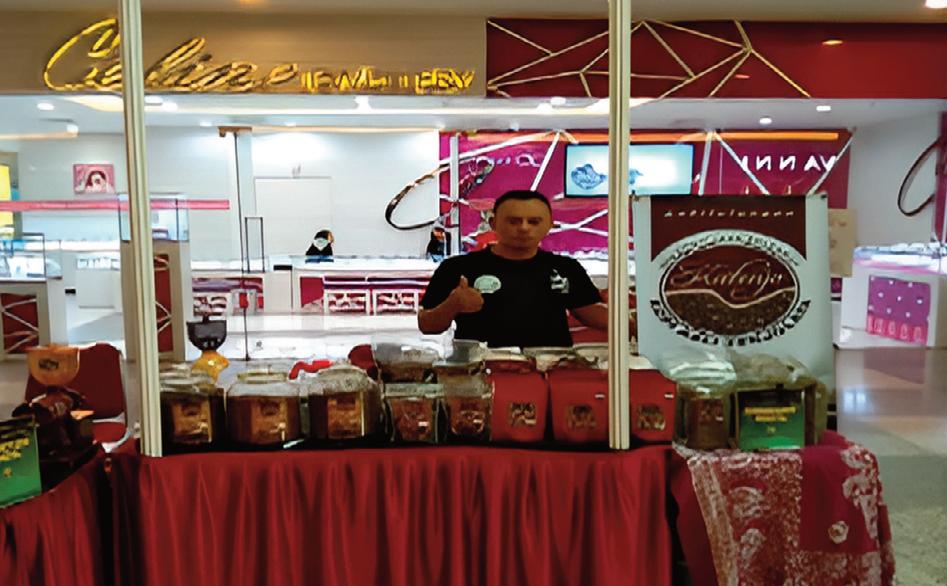
in
empower them to make their efforts productive and improve their quality of life.
The objectives of both development concepts are poverty eradication, increased community participation, utilizing local wisdom understood by local communities, and focusing on marginalized groups within society.
The people of West Java believe that the coffee produced in West Java is known as Arabica Java Preanger coffee, which has been renowned worldwide since the 18th century, marking the first coffee export from West Java. The coffee farmers in West Java are generally farmers who have endeavored to produce Arabica coffee that meets Indonesian national standards.
The quality criteria of coffee beans, which include physical aspects, taste, cleanliness, as well as uniformity and consistency, are greatly influenced by
the treatment at each stage of the processing process (Zakaria, Aditiwati, and Rosmiati, 2017). Based on this, the empowerment of coffee farmers through technology-based or innovative approaches such as intercropping of butterfly pea flowers and coffee will be more readily adopted if it benefits their livelihoods.
This intercropping program enhances the fertility of forest and coffee lands because butterfly pea flowers are capable of fixing nitrogen, thus improving forest maintenance. Therefore, soil fertility testing was conducted after four years on the intercropped land with butterfly pea flowers and coffee.
Table of Results of Soil Fertility Test for Intercropping of Butterfly Pea Flowers with Coffee. (Data collected in 2021)
The soil acidity, organic carbon (C-organic), total nitrogen (N total), available and available O levels indicate suf fi cient values for the growth of coffee and forestry plants (BPTK Gambung, 2021). This indicates ecological benefits.
The application of organic fertilizer from the feeding of Black Soldier Fly (Hermetia illucens) maggots in the intercropping of butter fl y pea flowers and coffee has been carried out in 2021 with community service funds from LPPM ITB.
Results of Soil Fertility Test on Intercropping of Butterfly Pea with Coffee
Note: Initial planting in June 2019 at LMDH Tenjolaya, Pasirjambu District, Bandung Regency. Source: Tea and Cinchona Research Institute (Gambung, Bandung Regency), 2021
The aim of applying coffee skin waste bioconversion by BSF (Black Soldier Fly) is to reduce organic fertilizer input from outside the area, decrease coffee skin waste, increase coffee farmers’ income by reducing production costs, and selling poultry
(Noerhatini et al., 2022). Therefore, in the intercropping technology of butterfly pea and coffee, other technologies such as BSF application can be implemented. Thus, bioconversion fertilizer
technology based on coffee fruit peel can enhance the economic and health benefits of butterfly pea and coffee intercropping innovation, especially in village chicken farming.
The technology of intercropping butterfly pea flower with coffee can be applied to LMDH (Community Forest Village Institution) in West Java, which numbered 1,260 in 2019 and continues to increase (https://opendata.jabarprov.go.id). Farmers who are accustomed to planting butterfly pea flower in their home gardens will find it easier to follow the planting procedures in coffee intercropping areas with forestry plants.
The success of this intercropping will be influenced by market demand and the dissemination of the economic, ecological, and social benefits of butterfly pea flower. Additionally, considering the characteristic of coffee farmers in West Java who always strive to produce high-quality coffee, they are likely to embrace the innovation of intercropping butterfly pea flower with coffee.
Forest resources are living resources that encompass genetic resources, organisms or their parts, populations, or biotic components of ecosystems and other ecosystems with real or potential benefits or value for human life (Renggi et al., 2015). Furthermore, based on the concept developed by Renggi et al. (2015), innovationbased forest resource management is categorized into three categories based on its utilization objects, namely areas and ecosystem services.
The innovation-based approach of intercropping butterfly pea flowers with coffee under forest tree canopies demonstrates that areas serve as growing spaces for cultivating butterfly pea flowers and coffee, managed to obtain optimal environmental, social, and economic benefits. Meanwhile, ecosystem services refer to one of the forms of services produced by forests, such as a source of water, flood and landslide prevention, climate regulation, and biodiversity.
The innovation of intercropping butterfly pea flower with coffee indirectly serves as a preventive measure against landslides and floods because coffee farmers receive
weekly income from cultivating butterfly pea flower plants, thereby reducing the need to cut down forestry trees.
There are two main drivers of success for agricultural technology in developing countries. First is the availability and affordability of technology. Second is farmers’ expectation that adoption will remain beneficial. Both determine the extent to which farmers avoid risks. Personal factors of farmers that drive the above expectations include education, experience, gender, and land area. Other factors include the profitability of agricultural enterprises, climate change, training modules or curricula, agricultural prices or contracts, the role of government, and learning agents such as academics and instructor.
The innovation of intercropping butterfly pea flowers with coffee can be applied to other LMDHs (Community Forest Village Institution) due to the characteristics of West Java coffee farmers, who are responsive to innovations if the innovation is easy to implement and offers significant economic, social, and environmental benefits. Another reason is the characteristic of forest land that provides growing space for cultivating butterfly pea flowers intercropped with coffee under forest tree canopies.
The process and management system in adopting innovations in other locations follow the theory of innovation diffusion. Diffusion can be defined as the process by which a new innovation is communicated over a period of time to coffee farmers through social interaction and social media. Diffusion also occurs among members of a social system like LMDH, which explains or disseminates messages as new ideas.
Next, communication among the community is established as a process for the actors to create information and exchange information to achieve mutual understanding. Information is crucial in the process of innovation diffusion. Therefore, detailed information should be tailored to the educational level of coffee farmers and the surrounding community.
This relates to how information about this innovation is disseminated through specific media to the community. The success or failure of the innovation diffusion process can be observed based on the quality of communication. Hence, the preparation of informational materials about this innovation should be based on the mapping of coffee planting areas, as well as the mapping of the potential and needs of coffee farmers.
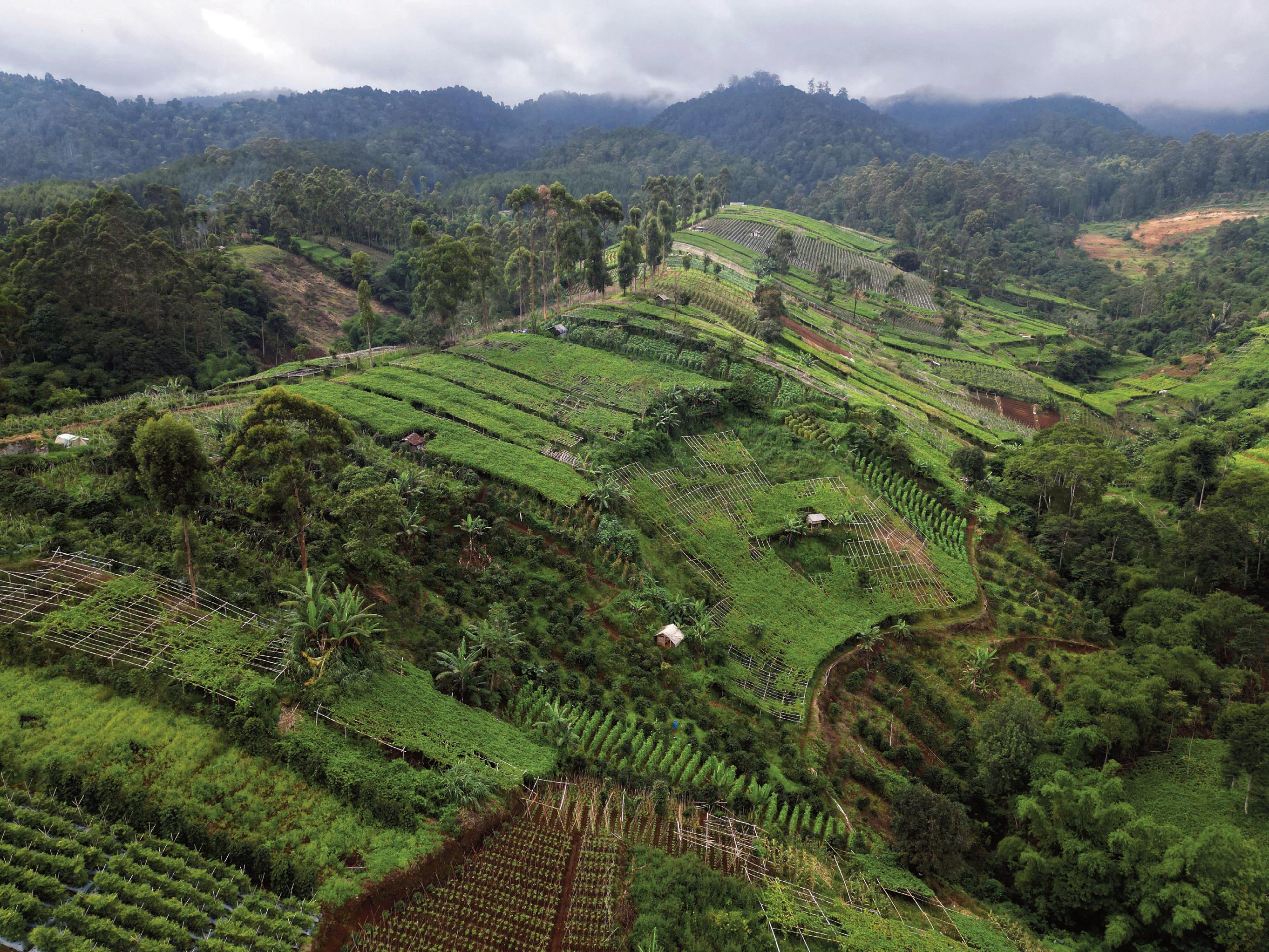
Forest management should have social, economic, and environmental impacts on the communities surrounding the forest. Therefore, several community empowerment programs continue to be developed to increase the participation of communities around the forest and also increase their income. The intercropping technology of butterfly pea flowers, coffee, and forestry plants is an original innovation for forest conservation from landslides.
Butterfly pea flowers are usually planted in home gardens, yards, or village lands. Its utilization has not been commercialized yet and has not been specifically directed towards increasing soil fertility. In the intercropping innovation of butterfly pea flowers, coffee, and forestry plants in highland areas, there are impacts such as increasing soil fertility around the intercropping area, increasing the income of coffee farmers, improving community health and forest conservation, indirectly leading to a reduction in the risk of landslides.
Supporting initiatives for community development to address local sustainability issues that provide social and economic opportunities to the local community is essential. Community development based on the intercropping of butterfly pea flowers with coffee can be one solution for improving the livelihoods of the community.
Community development from a perspective of local self-reliance is the embodiment of a community’s self-directed efforts to enhance its quality while preserving environmental sustainability, local cultural values, and forest resources. So far, community development has been aimed at harnessing local potential derived from nature, social culture, or the economy to contribute to local government and improve community welfare.
In connection with this, community empowerment is currently being carried out using a community-based development approach. In this approach, the local community builds, owns, and directly manages forest resources and services, aiming for the community to directly benefit economically and actively participate in the development process from planning, implementation, monitoring, to evaluation.***
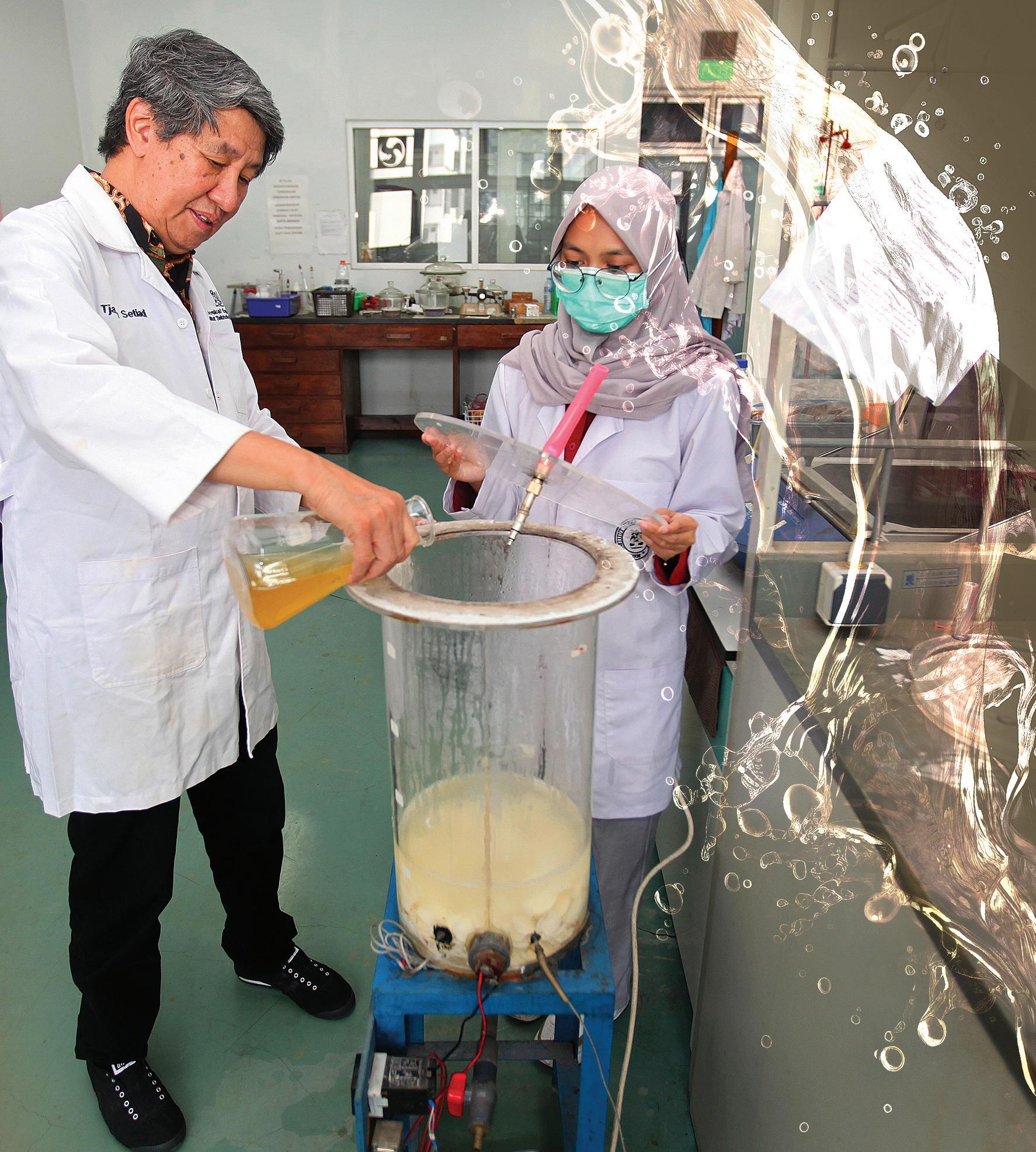
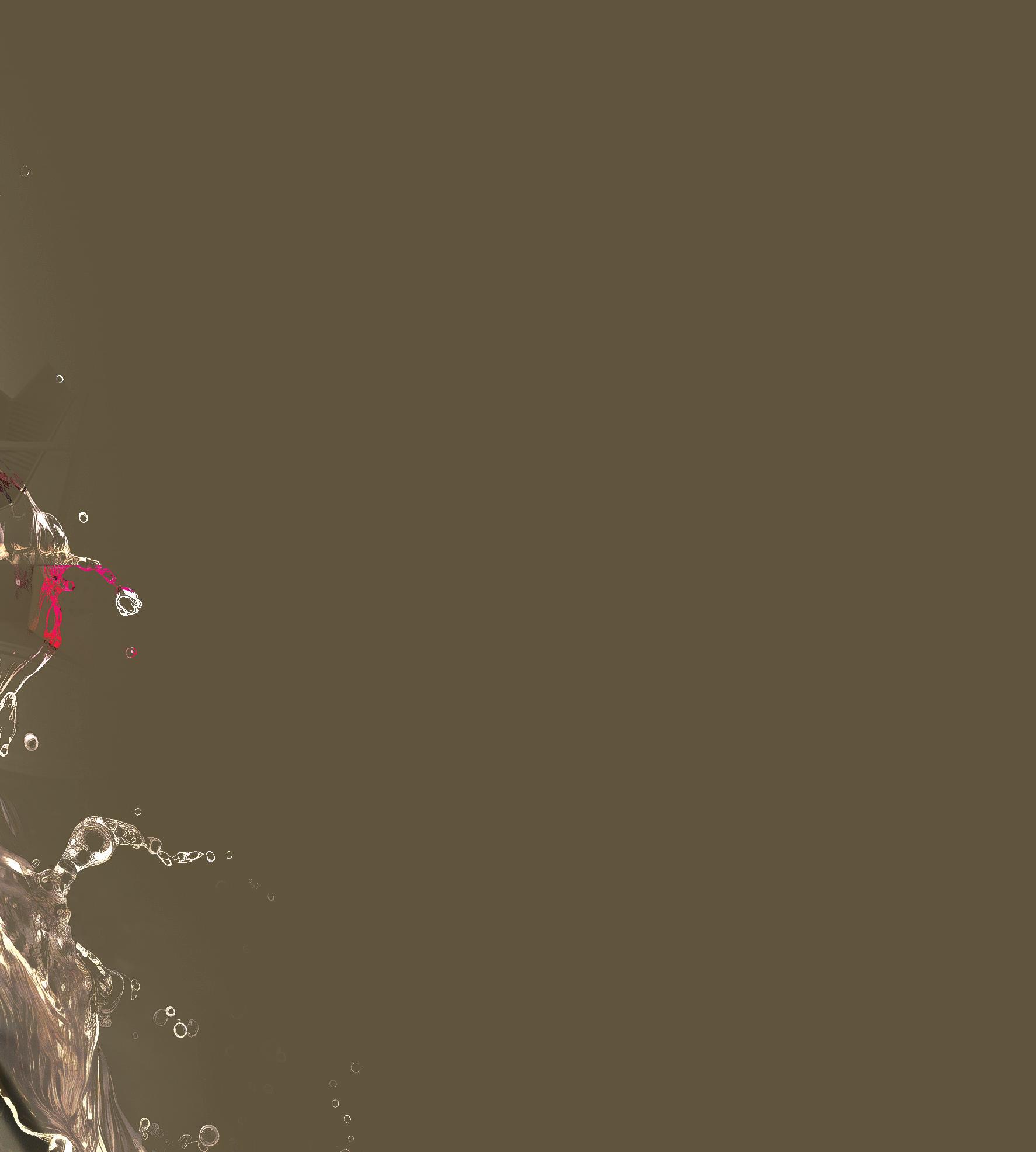
Prof. Tjandra Setiadi, Ph.D.
Chemical Engineering Product Design and Development Research Group, Faculty of Industrial Technology
Prof. Dr. Made Tri Ari Penia Kresnowati
Food Engineering and Chemurgy Research Group, Faculty of Industrial Technology
The community service activities are aimed at household-scale producers of modified cassava flour (MOCAF). This endeavor still relies on microbial starters purchased from other parties at a relatively high cost, thus constituting one of the high production cost components. The activities include developing methods for maintaining and preparing microbial starters independently so that the industry will no longer depend on commercial starters.
CV Karunia Maha Cipta/KMC is a small to medium enterprise located in Cihideung Village, Parongpong District, West Bandung Regency, West Java Province. It specializes in the production of modified cassava flour (mocaf). The trademarked “Mocaf Bandung” flour is produced from peeled and sliced cassava that undergoes fermentation with the addition of microbial starters.
This fermentation process enhances the nutritional content of the flour while also improving its aroma and color. The resulting flour is marketed as an alternative to wheat flour, being gluten-free and safe for individuals with celiac disease or those who choose to avoid gluten for health reasons.
Currently, CV KMC still relies on external sources for providing microbial starters. The demand for these starters is quite significant, requiring 1.5 kg for producing mocaf flour from 1,500 kg of raw cassava. Consequently, the purchase of these starters becomes one of the largest operational cost components in mocaf production at CV KMC.
To assist CV KMC, the community service team from LPPM ITB is involved to enable the company to produce microbial starters independently. Through the isolation process of the starters commonly used at CV KMC, 8 types of microorganisms were obtained, consisting of 6 types of bacteria and 2 types of fungi. These microorganisms are then used as starters that can be used and produced independently by CV KMC.
The production procedure for the starter was developed taking into account the limitations of human resources and facilities available in the
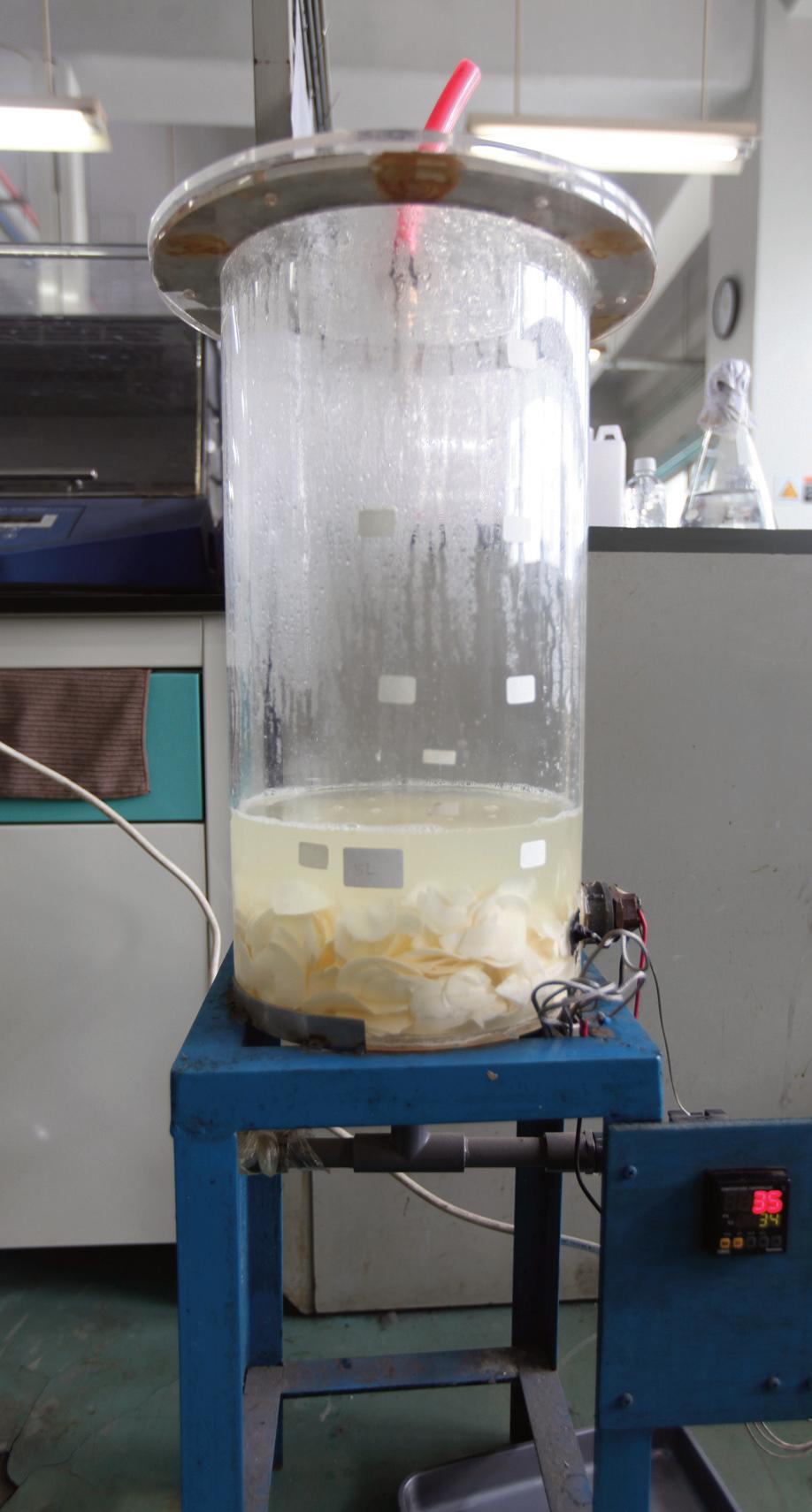
company. Subsequently, the simplified procedure was socialized and directly tested in the mocaf flour production process. The resulting starter exhibited superior quality comparable to commercial starters, ensuring that the aroma, color, and taste of the mocaf flour remained unchanged.
Through the implementation of this starter production procedure, economic advancement is achievable, benefiting both the owners and
employees of CV KMC directly, as well as indirectly benefiting cassava farmers in the West Bandung Regency whose harvests are utilized by CV KMC to produce mocaf flour. The selling price of mocaf flour remains stable due to the reduction in production costs from purchasing starters, enabling it to compete with the selling price of imported wheat flour since wheat is not cultivated in Indonesia.
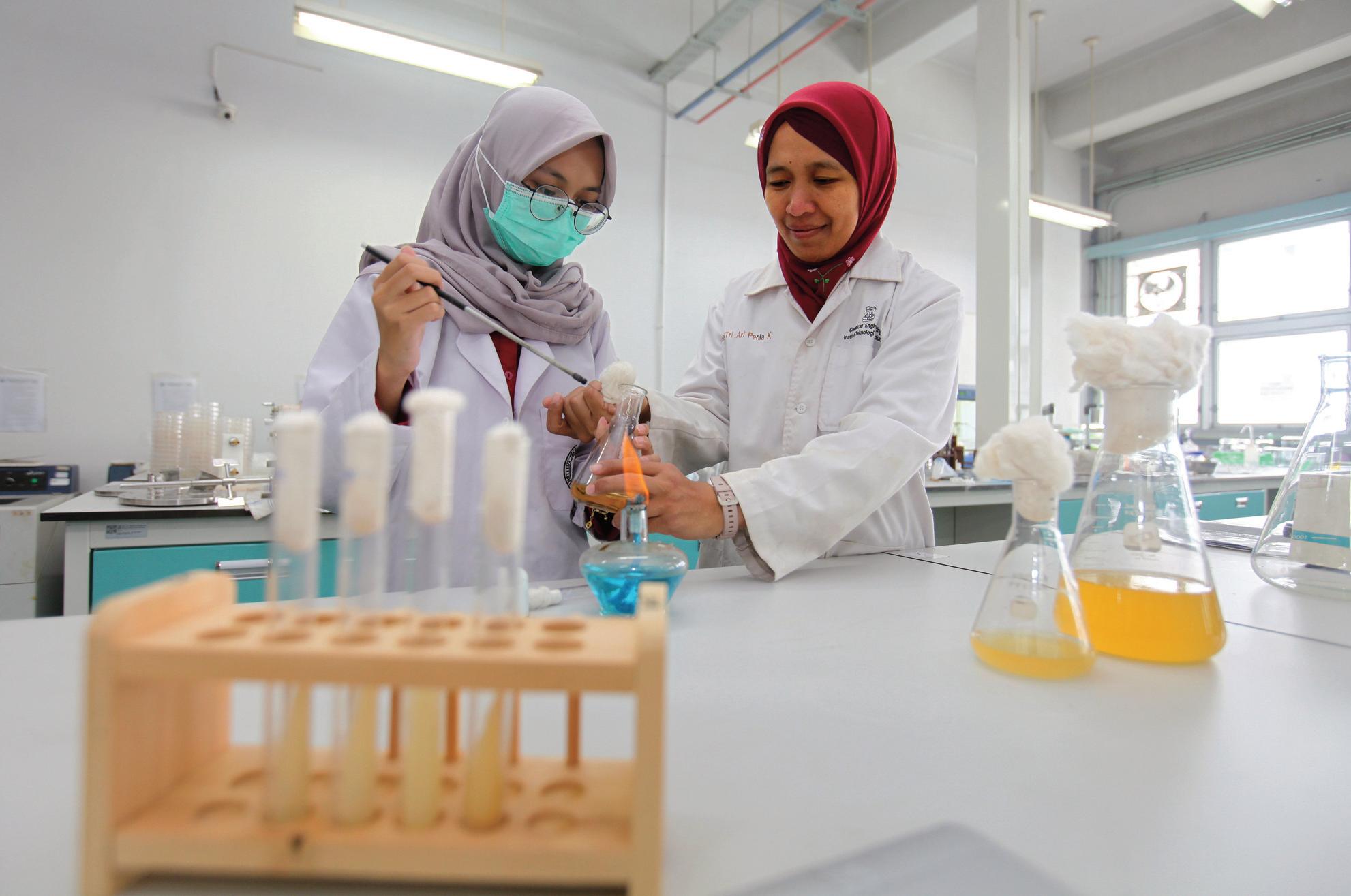

The initial stage carried out was the identification of the types of microorganisms present in the starter commonly used by CV KMC. From the isolation process of the used starter, 8 types of microorganisms were obtained, consisting of 6 types of bacteria and 2 types of fungi, namely Rhizopus oryzae and Aspergillus oryzae. These microorganisms will be used as starters that can be utilized and produced independently by CV KMC.
The second stage in the implementation of the activity is the development of starter production procedures and the maintenance of isolated culture that are easily understood by the available human resources in the company. The procedures are also designed to be simple enough to be implemented with the facilities available in the company without having to significantly alter the production habits or routines at CV KMC.
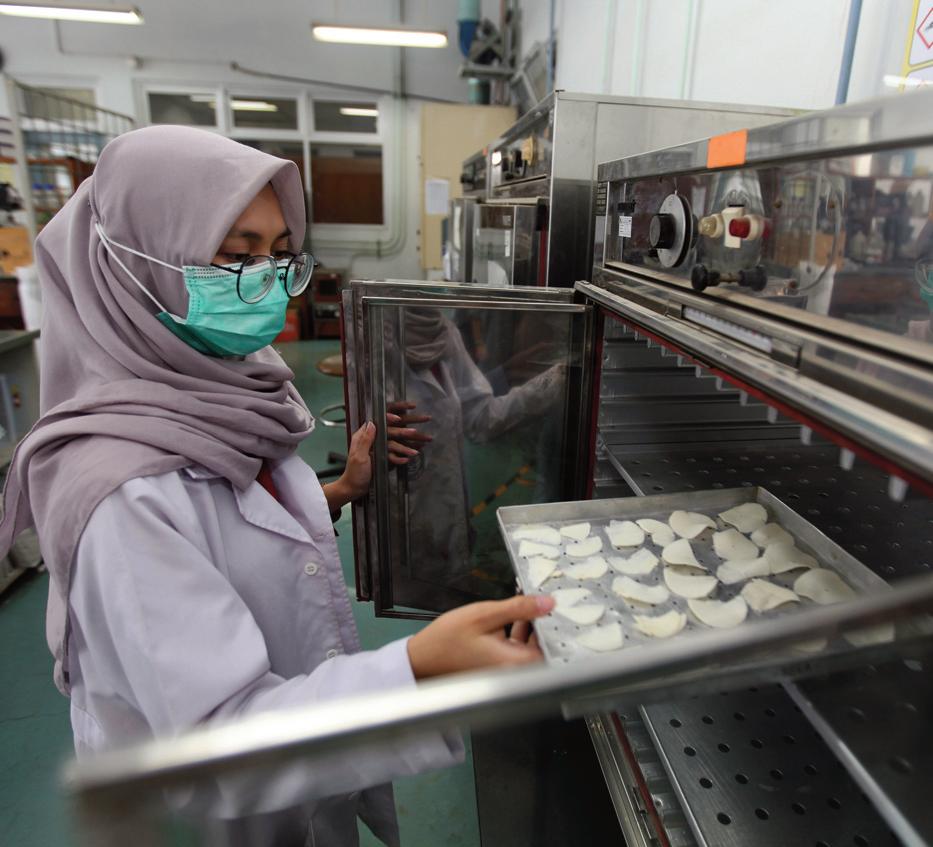
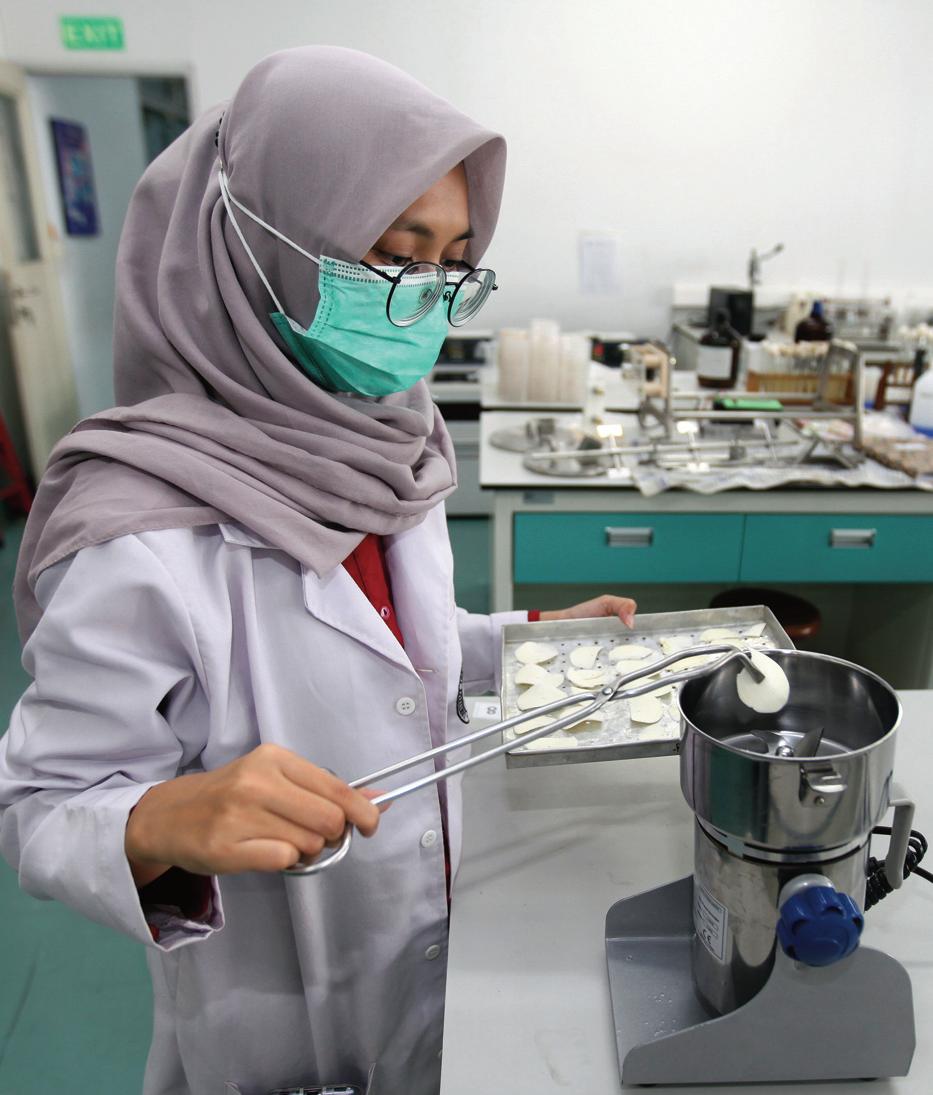
The third stage of this activity involves testing the starter produced in the mocaf production process at CV KMC. The mocaf flour produced from this homemade starter is comparable to mocaf produced with commercial starters. No significant differences in color and aroma were identified between the two, indicating that this homemade starter production procedure can be directly applied to the routine production process at CV KMC.
Thus, the output of this activity is the implementation of appropriate technology for independent starter production at CV KMC, which has been achieved. The production costs of purchasing starter components can now be minimized.
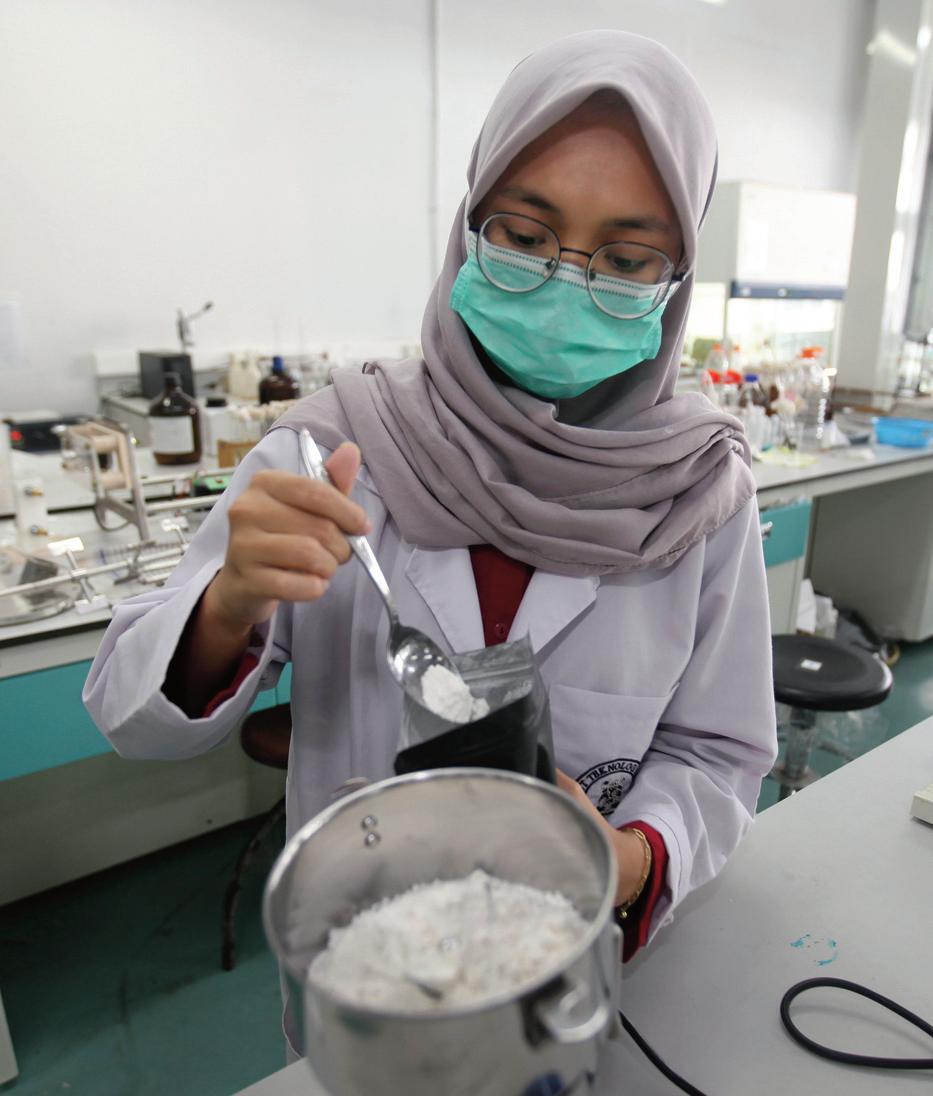
One of the greatest challenges in implementing this community service activity is simplifying the process of making the starter. If the manufacturing process is too complicated, employees who initially only needed to add commercial starter directly and practically will be reluctant to produce their own starter.
The procedure designed for CV KMC has been simplified, while still maintaining the quality of the starter produced to ensure it does not affect the quality of the mocaf products.
If the starter production process is to be used by other mocaf producers in Indonesia, modifications are needed according to the type of starter to be produced because there may be differences in the types of microorganisms present in the starter used by other companies. The microbial isolation stage is required to identify these microorganisms, and then the starter production process can be adjusted accordingly.
Through this community service activity, local economic improvement can occur with the achievement of outcomes such as reducing the operational costs of producing mocaf flour by CV Karunia Maha Cipta. The reduction in operational costs ensures the sustainability of mocaf flour production amid inflation affecting Indonesia.
This business unit can continue production by purchasing cassava from cassava farmers in the West Bandung Regency, West Java Province. The selling price of mocaf flour can also be maintained stable to remain competitive with the selling price of imported wheat flour since wheat does not grow in Indonesia.
This program aligns with several points of the Sustainable Development Goals (SDGs) established by the United Nations (UN), namely:
1. SDG 8 (Decent Work and Economic Growth): The development of value-added industries from local natural resources, namely cassava, through small and medium-sized enterprises (SMEs). Economic growth can be achieved and have a double effect, benefiting both cassava farmers whose harvests are purchased to produce mocaf and the owners and employees of CV KMC.
2. SDG 9 (Industry, Innovation, and Infrastructure): Supporting small and medium enterprises to continuously innovate in production processes to reduce various production costs. The innovation in starter production is expected to inspire CV KMC to continue development and innovation to achieve sustainability in terms of environmental, social, and economic aspects.
3. SDG 12 (Responsible Consumption and Production): In the production procedure provided to CV KMC, the chemical and water requirements have been calculated and optimized to prevent excessive use of these materials, which could lead to water pollution.***
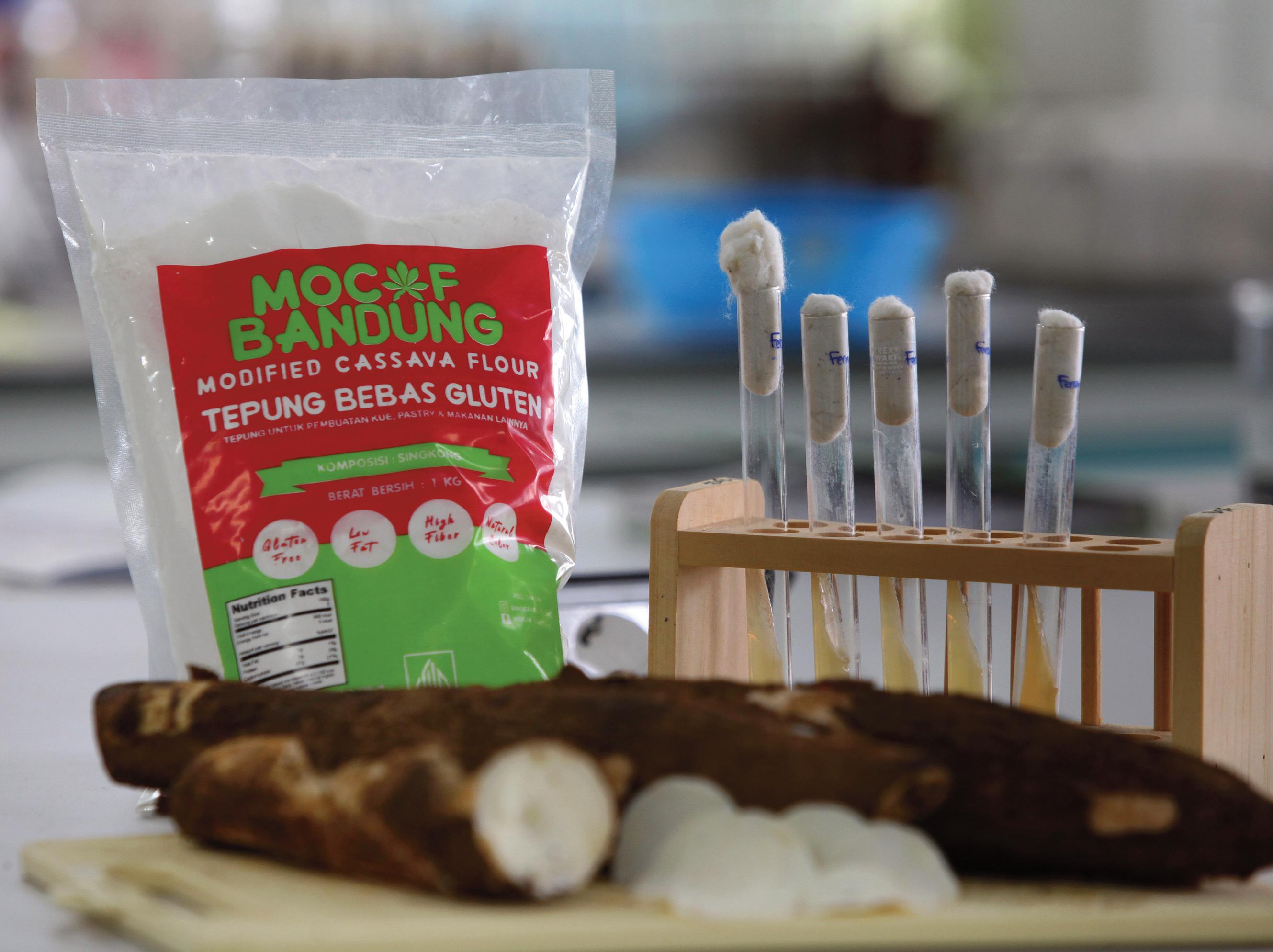
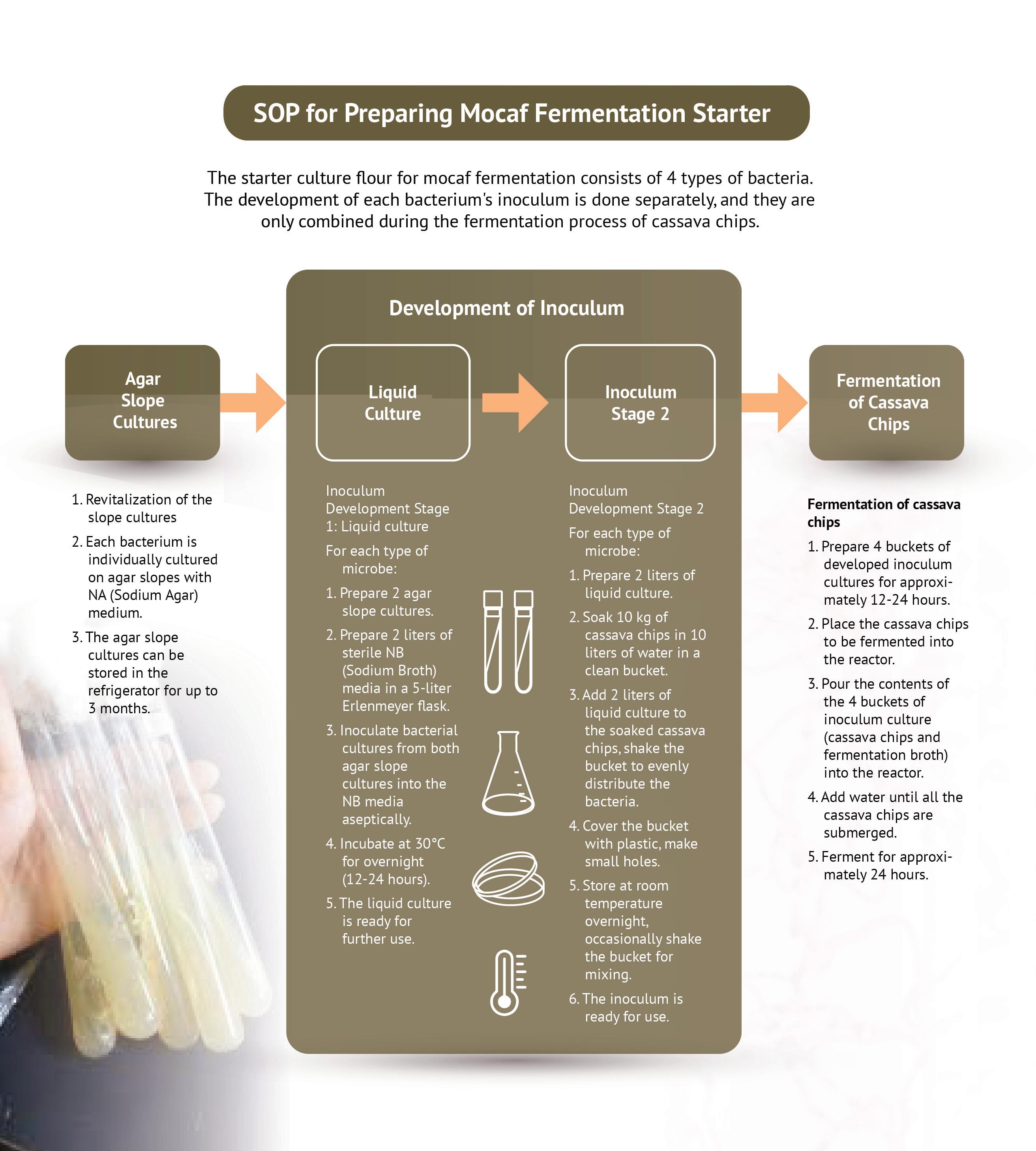
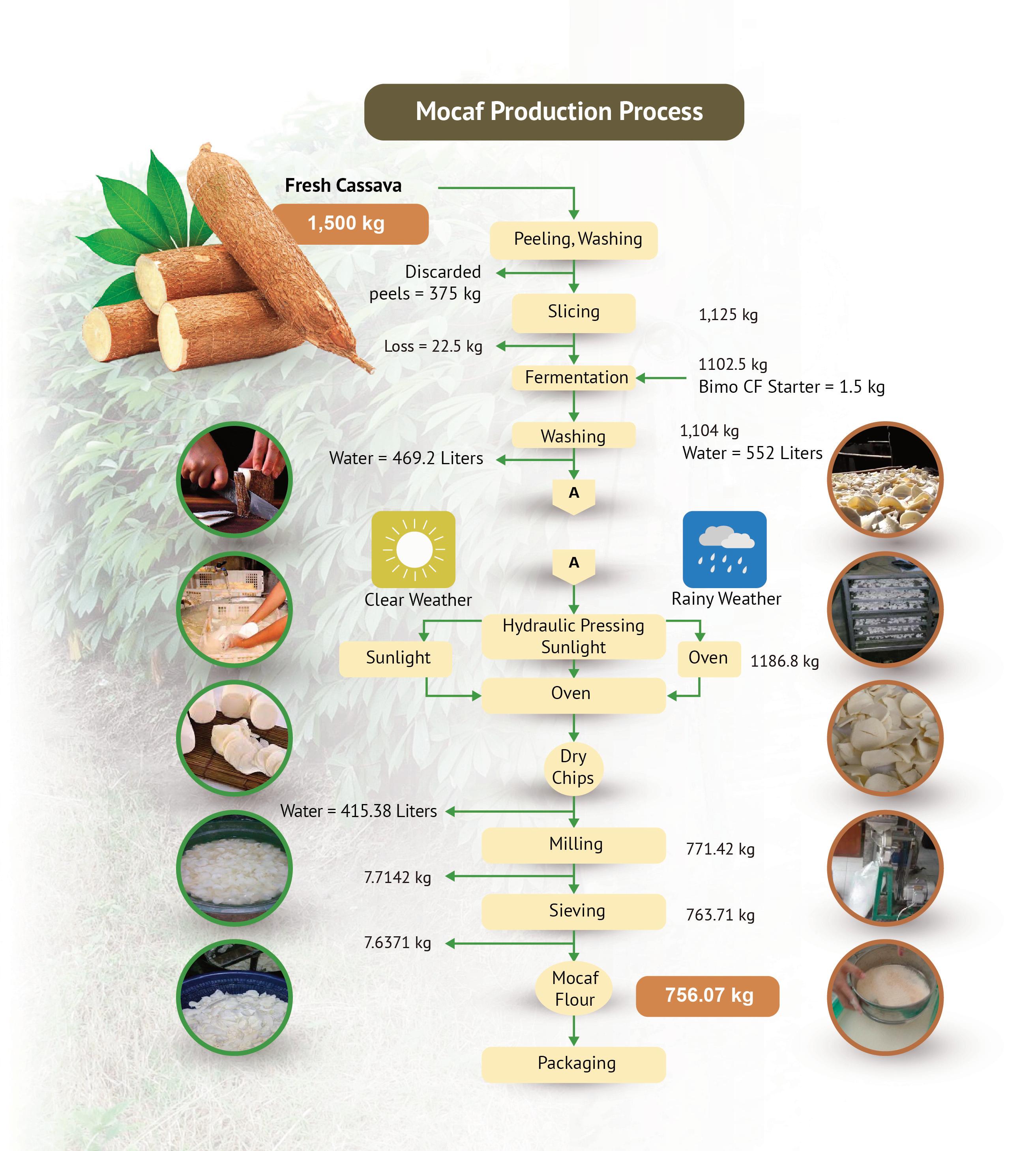
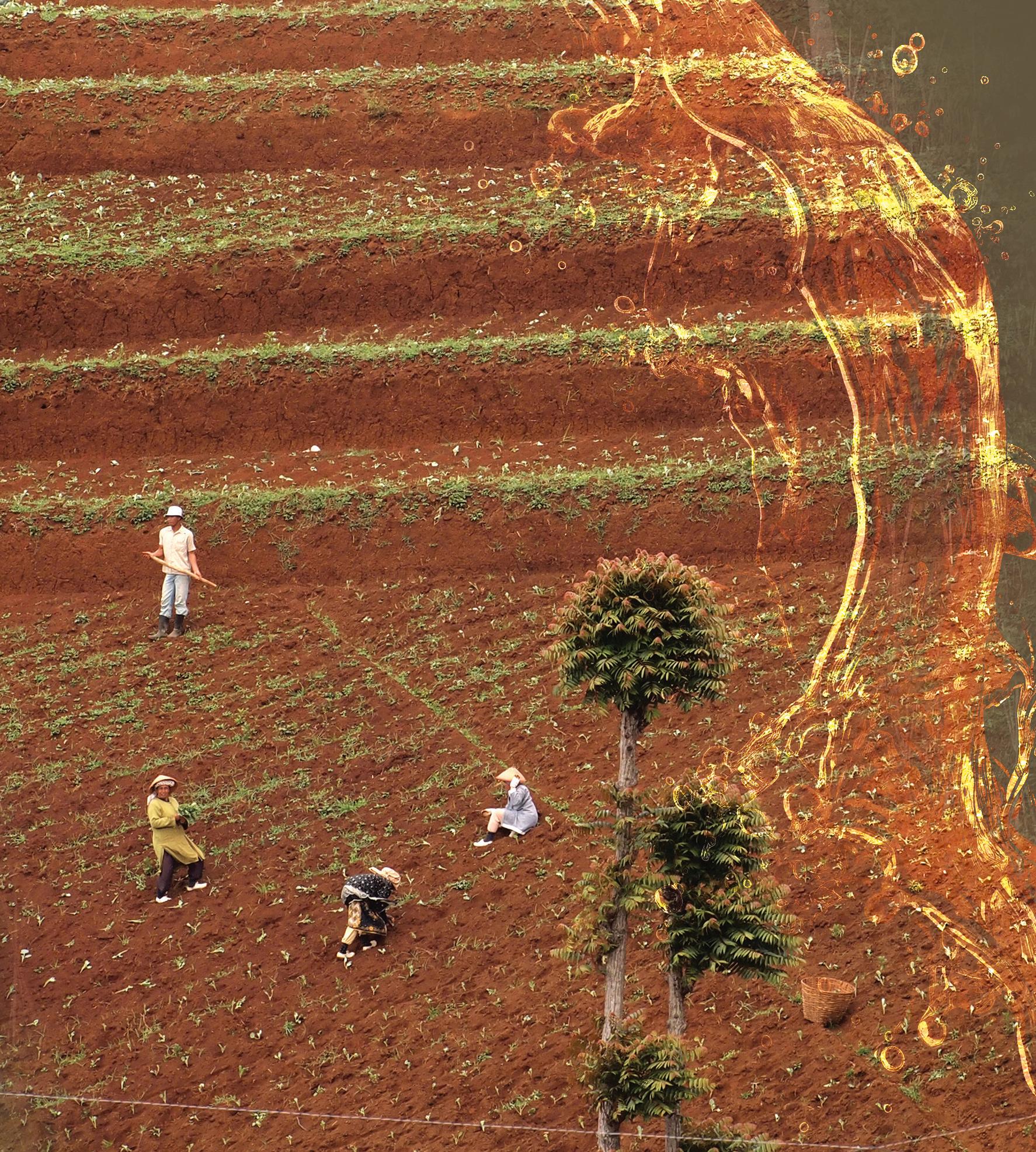
Improving Productivity and Conservation of Critical Lands Through the Application of Community-Based Agroforestry Models in Mentengsari Village, Cianjur Regency, Cikundul Sub-River Basin (DAS)
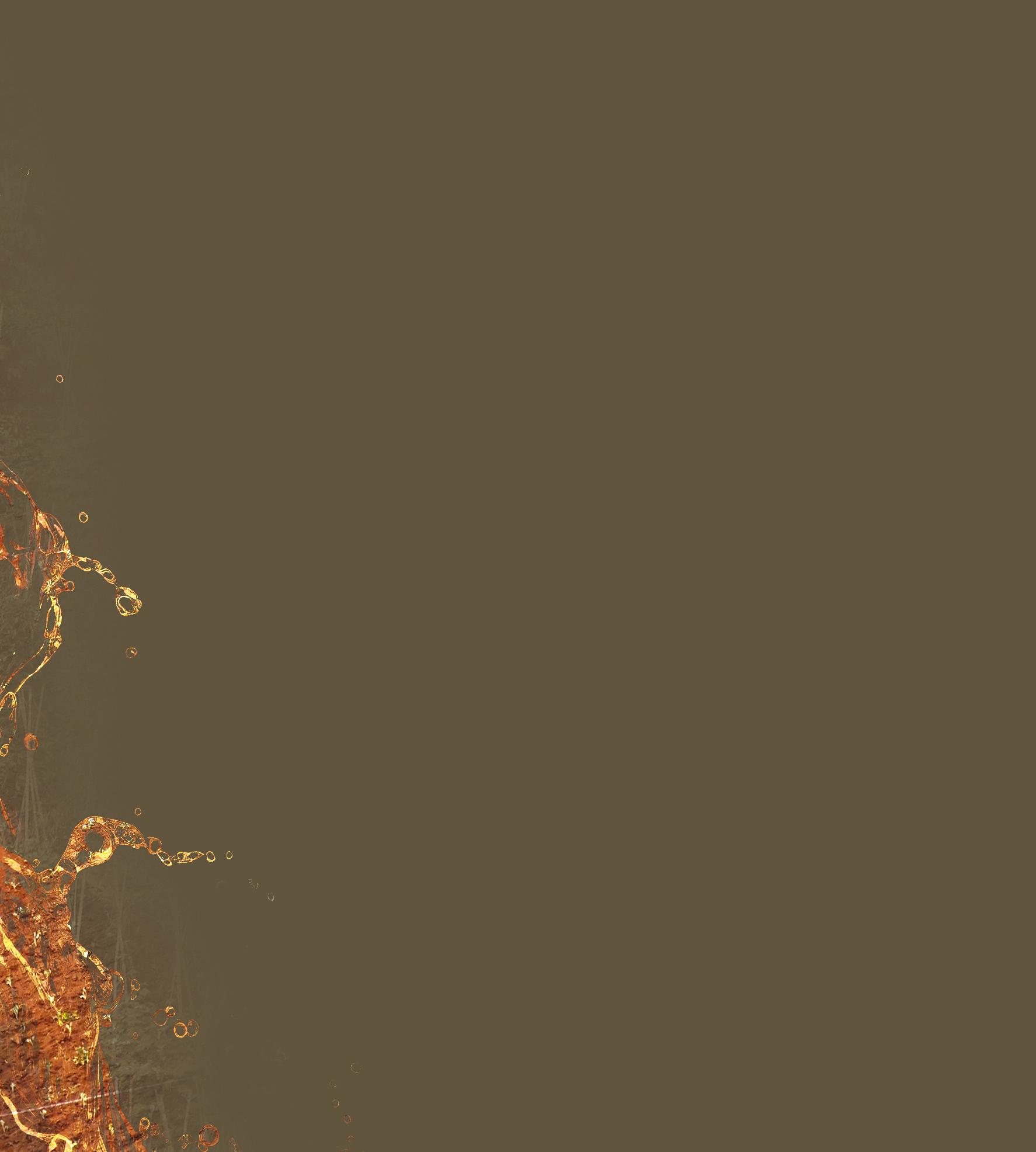
Dr. Sopandi Sunarya
Prof. Endah Sulistyawati, Ph.D., Dr. Susana Paulina Dewi
Forestry Technology Research Group, School of Life Sciences and Technology
This activity is aimed at developing an agroforestry model that can enhance land productivity for communities while also contributing to environmental improvement. The method for building the agroforestry model involves determining the status of the land categorized as critical. Next, an interactive interaction model is carried out with the community to select the types of plants for the agroforestry model. The agroforestry model constructed consists of two models, namely the border line agroforestry model and the pure model.
Land management techniques in communities around the Citarum River play a crucial role in anticipating the sustainability issues of the Citarum River. The paradigm of land management in communities has evolved over time, shifting towards lands managed with a greater emphasis on short-term economic value rather than long-term environmental and economic value.
This shift has resulted in an increase in critical lands and land degradation, especially in lands adjacent to the river. The increase in critical lands or degraded lands, as noted by Kurnia et al. (2010), has tripled over a 7-year period (20002007). From 23.25 million hectares in 2000 to 77.8 million hectares in 2007.
The increase in critical land, such as land degradation due to erosion, has also been economically calculated by Margrath and Arens (1989), indicating losses of around 341-406 million US dollars per year in Java Island. Therefore, critical land needs attention and anticipation to avoid disasters and negative effects resulting from land management in communities.
The West Java River Basin (DAS) Management Agency (2022) records that the critical land area in West Java reaches 616,913.75 hectares categorized as critical and very critical. Furthermore, areas categorized as disaster-prone cover an area of 1,020,722.42 hectares with categories including extreme and high runoff as well as landslide-prone areas.
Spatial analysis using Landsat imagery has indicated that in Citampele Hamlet, Mentengsari Village, Cikalong Kulon District, Cianjur Regency, there is a significant erosion contributing to the conservation of the Citarum River. The high erosion from community lands is believed to result in increased sedimentation in the river body. This hamlet is part of the Citarum River Basin, specifically located in the Cikundul Sub-River Basin.
A productive land management system that also contributes to erosion control is one that can eliminate erosion while providing substantial income to the community. The appropriate solution for this condition is to establish an agroforestry model. Agroforestry is considered a suitable solution because it
emphasizes two pillars in land management: productivity (from harvest yields) and the creation of soil and water conservation measures.
Productivity is obtained from varied outcomes, while soil and water conservation is achieved through the structural conditions of the stands that have a complex layer due to the variation in the composition of their components. This agroforestry model makes it a wise choice to be applied in community lands.
There are three main pillars in the implementation of agroforestry model development, namely the environmental pillar, the economic pillar, and the socio-cultural pillar. The economic pillar is indicated by the harvest results that must be obtained by agroforestry practitioners (where managed land must contribute to environmental improvement). The economic pillar is characterized by the built model being able to contribute to community income through its harvest results. Meanwhile, the socio-cultural pillar is characterized by being able to create better social conditions and becoming part of the community’s culture in land management systems.
Various types and patterns of agroforestry have been developed and implemented, both in Indonesia and worldwide. However, the socioeconomic-cultural conditions of communities have signi fi cantly in fl uenced the formation of various model variations and have contributed to the diversity of agroforestry types and patterns. Therefore, the established models are greatly
in fl uenced by the social, economic, and cultural characteristics of the communities.
Similarly, the agroforestry models established in hamlets/villages are in fl uenced by the socioeconomic-cultural context. Even within one land management system, each has its own characteristics as a result of community participation and the local cultural context.
The goal and target of this community service implementation are to create a planting design and develop a land processing model that is productive and effective in reducing erosion in the communities around the Citarum River (Mentengsari Village, Cikalongkulon District, Cianjur Regency, Cikundul Sub-watersheed).
The expected impact is to obtain a design layout and land processing model in the community that is productive (increasing community income) and a low-erosion land design model that can be used as one of the land management models contributing to the preservation of the Citarum River. The expected impacts include providing science-based solutions and their applications in addressing land management issues around the Citarum River while also contributing to policymakers in anticipating the physical, social, and economic environment of the communities around the Citarum River.
The implementation method of community service through the approach used to ensure that the agroforestry model can achieve its goals and objectives. The stages of implementation are as follows:
1. Identifying and describing community land in the target area. The selected land is categorized as critical and offers opportunities for high erosion rates, located along river side or sub-river side. The selected land must be integrated with the Citarum River Basin.
2. Another criterion is non-productive and degraded land. This criterion is identified through field observations. The selected land, in a healthy state, still has potential for increased productivity and soil and water conservation.
3. The selected land is introduced with an agroforestry model integrating forest and agricultural crops. To accommodate community participation, the selection of plant types for the model construction is organized through interviews. The community is given the opportunity to determine the types of plants composing the model so that they feel a sense of ownership over the constructed model. If there are types that are deemed unsuitable, dialogue is conducted to find the best solution in determining the types of plants composing the model.
4. Creating a land design layout by arranging the layout and spacing between plants in the field. The output of this stage is the layout plan of plants and the number of plants needed for constructing the model.
5. The established model serves as an initiation for planting models on critical land.
6. The established model is a plot-scale model that serves as the basis for the development of subsequent models. It is hoped that the establishment of this model will inspire other communities, ultimately leading to a change in the cultural approach to land management.
7. The established model is used as a model for both agroforestry and agricultural cultivation techniques.
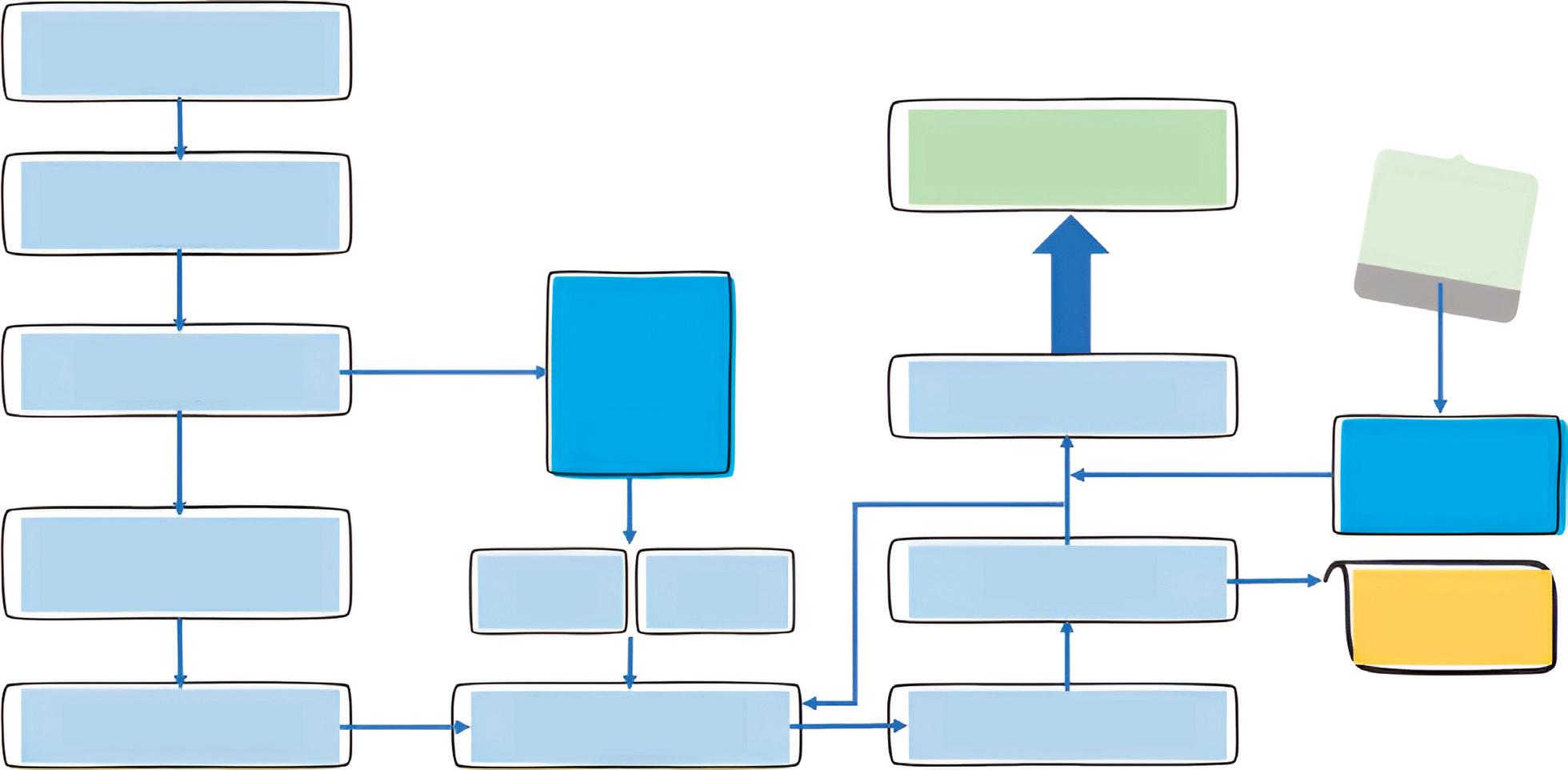
Based on the schematic above, the ultimate goal of establishing the agroforestry model is to create a productive and low-erosion model on critical lands managed by communities around the Citarum River Basin. The established model must be developed massively and continuously to become a sociocultural norm in society.
Model development is a continuous process to ensure ongoing adoption by the community. Adoption of the model by the community will create a cultural condition that inadvertently becomes a culture practiced by the community in their land
management systems. To create an ideal model, the established model must be continuously evaluated and monitored to provide feedback for model development in the community, as well as to make changes or adjustments for subsequent design plans.
Planting as an initiation for the model involves designing plantations on a plot scale as a foundation for further developing an ideal model that can be adopted by the community. The established model serves as a tangible reference for the community in developing similar models.
The description of the location using spatial analysis to obtain suitable locations based on the target yielded information that the location is situated in critical lands with land cover consisting of community plantations. In detail, the results of the spatial analysis map indicate that the implementation location of the Community Service Program (PPM) based on land criticality (Mentengsari Village) consists of the following categories: 1). Very Light (236.75 ha); 2). Light (205.353 ha); 3). Medium (205.961 ha); 4). Heavy (82.04 ha); and 5). Very Heavy (6.39 ha).
The results of the spatial analysis of land criticality and land cover in Mentengsari Village as shown in figure below. Based on the land criticality conditions, the placement of the agroforestry model in areas categorized as Medium Critical (as observed in the field) still has the potential to contribute to the overall improvement of land criticality.
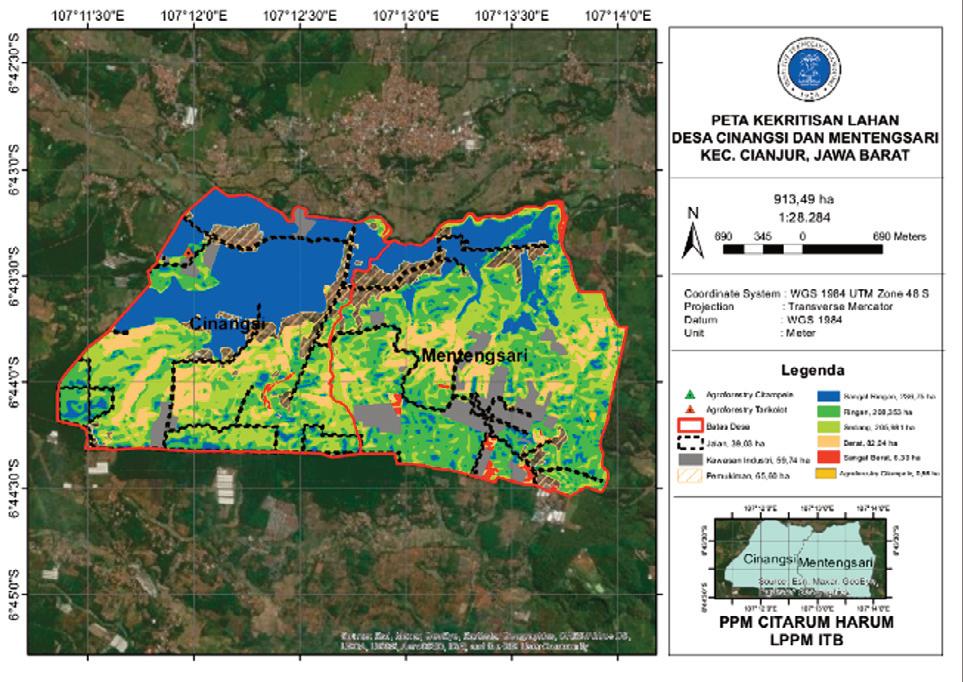

The agroforestry model plays a crucial role in continuously being developed to anticipate critical land conditions, as in Mentengsari Village where critical land covers approximately 11.96% of the area, categorized as critical (Heavy and Very Heavy). Anticipating critical land conditions through model development will have an effect on reducing critical land in Mentengsari Village.
This can be achieved if the plants serve functions in improving environmental conditions. For tree and perennial crops, it takes a relatively long time to contribute to environmental improvement.
The land cover condition of the agroforestry model site falls under the category of plantation land cover. Ground checks revealed that the land cover consists of community gardens with a well-
managed system, as the community has combined various productive plants including fruit trees and forest plants.
However, specifically at the existing agroforestry model location, the predominant plant types are horticultural crops. Therefore, to create productive land conditions and environmental improvement, efforts should be made to engineer the land management system. The proposed engineering involves diversifying the types of plants and incorporating forest plants.
In general, the land cover conditions in Mentengsari Village are as follows: 1). Oil palm plantations (72.43 ha); 2). Open land (9.82 ha); 3). Plantations (294.96 ha); 4). Fields (177.37 ha); and 5). Rice fields (194.54 ha). There is still a significant opportunity for model development, especially in areas of open land, plantations with open land conditions, and fields that require better coverage. The opportunity for agroforestry model development is still possible in around 64.36% of the Mentengsari Village area.
The application of the model is conducted through a participatory approach, where the community is given the freedom to determine the types of plants to be grown. Through interactions with the community, the chosen types for the agroforestry model composition are sengon (Paraserianthes falcataria), avocado (Persea americana), sapodilla (Manilkara zapota), and durian (Durio zibethinus). These four types are considered productive as they are expected to yield varied harvests.
The timber yield will be obtained from the forest plants, particularly P. falcataria, while the harvests of fruits (MPTs) will include P. americana, M. zapota, and D. zibethinus. The sengon harvest is predicted to occur approximately 6 years after planting, based on literature studies indicating a 6-year harvesting cycle for P. falcataria. From the second to the fourth year, avocado harvests will be obtained.
M. zapota harvests are expected when the M. zapota trees are between 3-5 years old, while D. zibethinus harvests can be predicted around the eighth year. Considering this, it can be anticipated that the harvests will commence in the second year and will vary from the fifth to the eighth year. In the meantime, short-term harvests will be obtained from horticultural crops independently grown by the community, such as long beans (Vigna unguiculata), amaranth (Amaranthus caudatus), snaps (Pasheolus vulgaris), bananas (Musa paradisiaca), and corn (Zea mays).
After determining the types of plants for the model, planting is carried out in the field. The planting process involves creating planting space measuring 4 x 4 meters for P. falcataria, while for Multi Purpose Trees Species (MPTs), the spacing is adjusted based on the number of plants to be planted. Based on the design and field observations, the spacing between MPTs is relatively wider compared to the spacing for forest plants.
The design of the agroforestry model consists of two types: pure agroforestry model (dominated by forest plants) and border line agroforestry model.
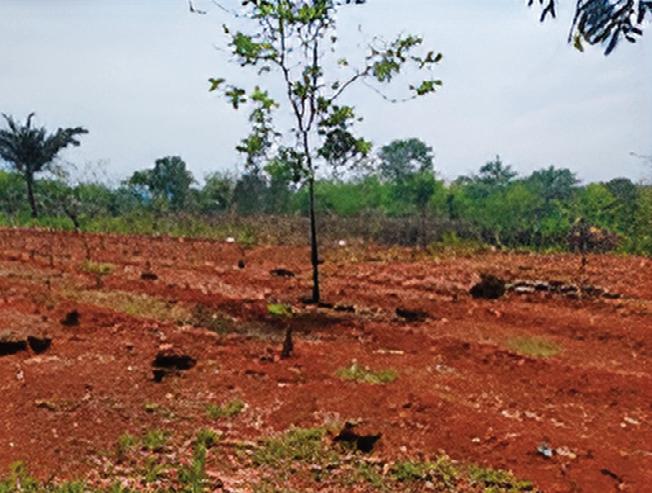
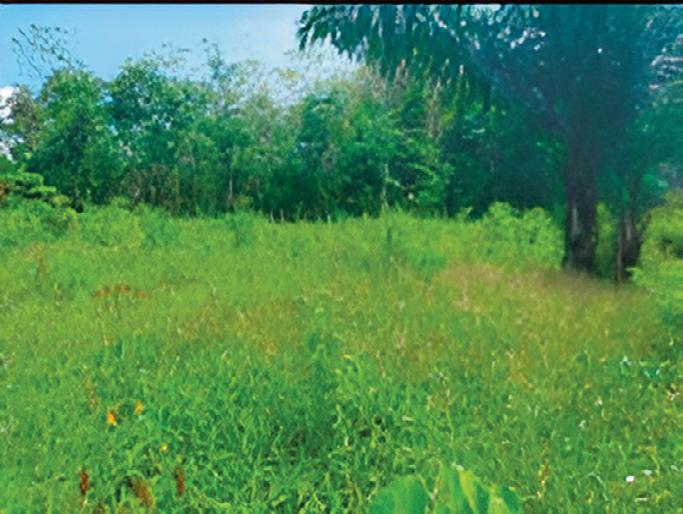
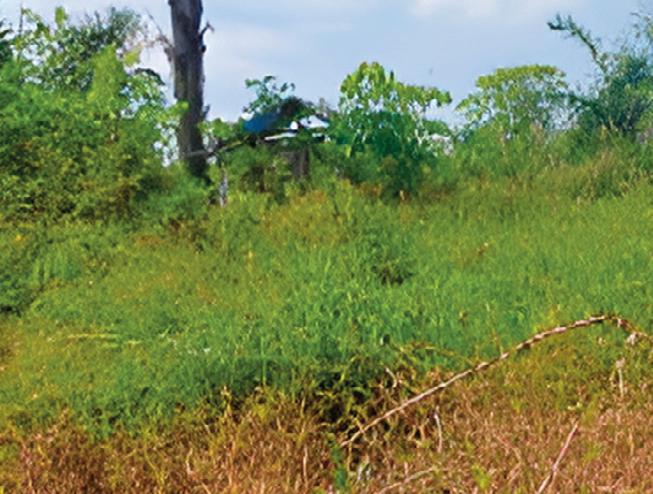


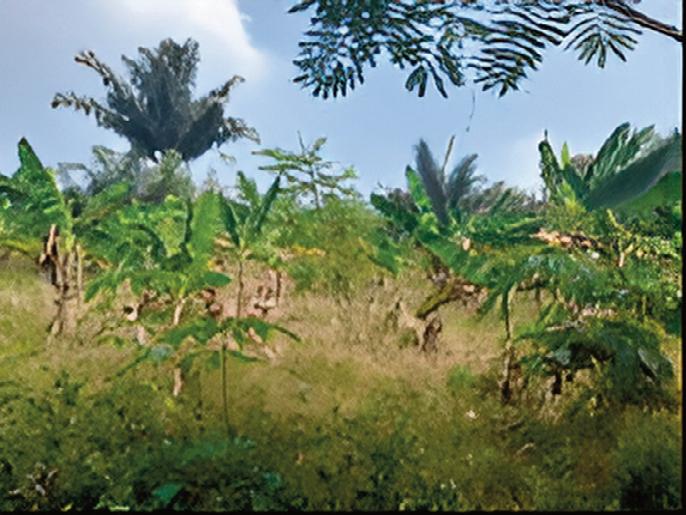
The pure agroforestry model is mainly composed of P. falcataria trees with only a small portion planted alongside M. zapota and P. americana. On the other hand, the border line agroforestry model arranges forest plants around the perimeter of the land. Meanwhile, MPTs are planted in the middle of the land and divided into blocks for P. americana and M. zapota.
The development of the border line agroforestry model provides sufficient information during the

harvesting of forest crops. With this model, damage to the stands due to harvesting can be minimized. The direction of tree felling can be directed outward from the land so that the crops will not be disturbed by the felled trees. Similarly, if the direction of tree falling is inward towards the land, there is still enough space for the felled trees (the spacing between MPTs is relatively wide).
Based on both models, it can be inferred that the border line agroforestry model is superior to the pure
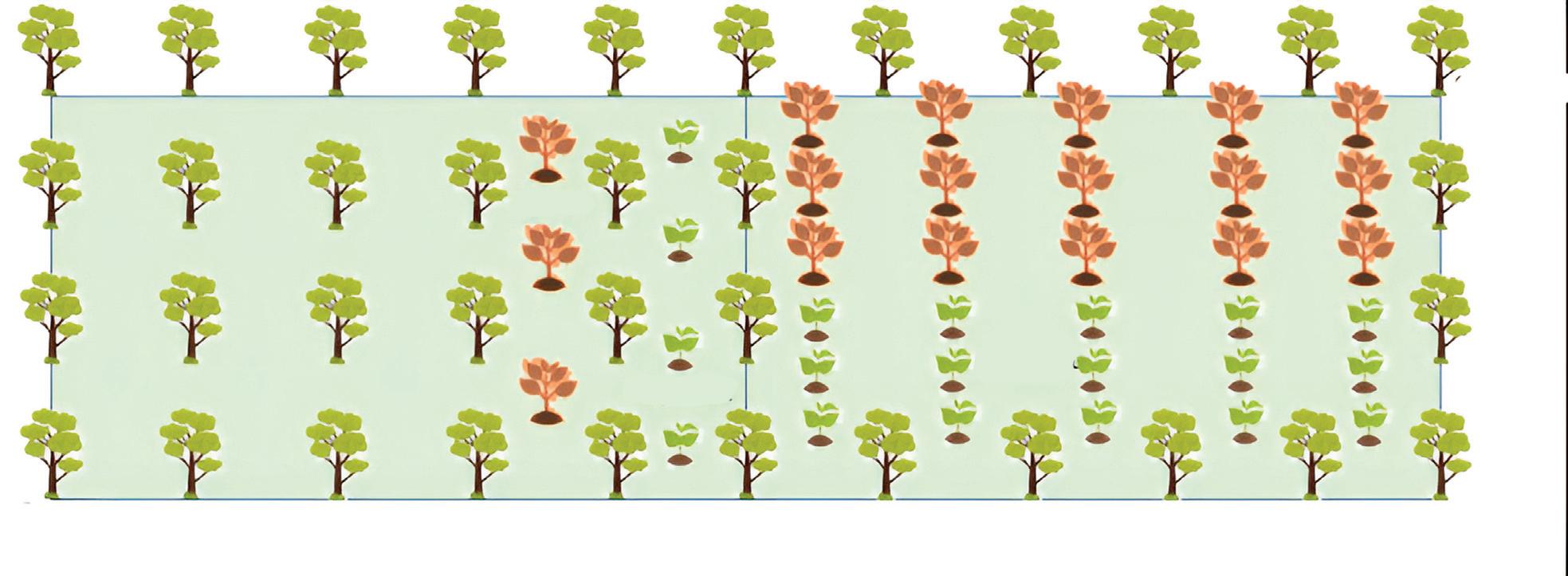
agroforestry model. Its advantage lies in more varied harvests and reduced risk of damage during harvesting. Meanwhile, the pure agroforestry model is relatively less favorable because of its less varied harvests and inferior soil and water conservation functions.
The interaction among the components of the border line agroforestry model is relatively better compared to the pure agroforestry model. This is because there is less competition for environmental resources due to the different needs of the plant types. In contrast, in the pure agroforestry model, the environmental resource requirements are relatively homogeneous.
The target/output of the implementation of the Citarum Harum community service program is the establishment of pure and border line agroforestry models covering an area of +-1.5 hectares. The establishment of these models is expected to contribute to the increase in land productivity (economic improvement) and conservation (supporting soil and water conservation) in community lands. Additionally, it is expected to contribute to the anticipation of critical land issues in the Mentengsari Village community.
The contributions that can serve as benchmarks for development through the implementation of the Citarum Harum community service program can have
an impact on improving food security, increasing community income/economy, environmental improvement, establishment of land management institutions, and increasing community participation in development and social processes within the community.
Food security can be enhanced if the established model has contributed to increased harvest yields. Although on a plot or demonstration plot scale, the community receives real examples in land management systems. Harvests of fruits and vegetables will have an impact on fulfilling the food needs of the community (both as producers and consumers).
Continuous harvests will also have an impact on the income and economy of the community if the harvest can be sold. Community income can be obtained from short-term horticultural crops. Medium-term harvests can come from MPTs (Multi Purpose Trees Species) that will continue each season. MPTs harvests can also provide long-term income during the biological period of the MPTs plants. Medium-term harvests can also be obtained from forest tree yield such as P. falcataria.
Improvements in environmental conditions can occur once the constituent plants of the model are able to perform soil and water conservation functions. Environmental improvements will affect the availability of water resources, which are currently quite worrying. With the established structure and composition of the stands, it is hoped that there will be an impact on the sustainability of
water provision for the community’s livelihoods.
Environmental improvement also has the potential to contribute to the reduction of critical land in the area. Reducing critical land is an important aspect of development as anticipating critical land is already a regional target for West Java Province and nationally. Other environmental improvements include reducing erosion on community land, which ultimately can contribute to reducing sedimentation rates in the Cikundul Sub-riverbasin. The reduction in sedimentation in the Cikundul Sub-riverbasin will have an impact on reducing sedimentation rates in the Citarum watersheed.
Social development in the community is characterized by the aim of anticipating conditions of poverty in the community. Through the development of a massive model, the resulting impact can increase community income/economy, thereby reducing poverty in the community.
The increase in community income will be accompanied by an increase in the active role of the community in land management systems because the implementation of community service has involved community participation. Community participation, in other words, community involvement, is an essential factor in the social development process.
This is related to the community not only being an object in the development process but also needing to become a subject. Involving the community in the development process will have direct and indirect impacts on the community. Direct benefits must be
prioritized because as subjects, the community should be able to improve their standard of living and quality of life.
Based on the above, the next impact is the achievement of environmental performance, both in terms of biophysical and social aspects. Biophysically, with the creation of a better environmental condition, the environmental benefits can be felt by the majority of the community. Environmental performance that can create a sense of comfort in the community, with the creation of microclimate conditions, becomes an important environmental performance in people’s lives. Other environmental performances, such as erosion control, anticipation of sedimentation, and the reduction of critical land, are performances that are much needed at present.
The social environmental performance in the community can be improved by fulfilling the livelihood integrity of the community. Fulfillment of livelihood needs will increase social performance because the community’s livelihood needs have been met. Thus, ultimately, it can also have an impact on social performance by reducing social crimes in the community. Social performance must be continually improved through increasing community income/economy to achieve community prosperity.
The social dynamics through the improvement of community social performance must be continuously enhanced through the development of agroforestry models to achieve the theoretical goals of agroforestry, namely sustainability, productivity, and ease of adoption. Increasing understanding and changing mindsets are key factors for development in communities so that they can play a role in creating environmental, economic, and socio-cultural balance. Preserving culture with the latest innovations will be an asset to achieve development and social cohesion in society.
The social environmental performance in the community can be improved by fulfilling the livelihood integrity of the community. Fulfillment of livelihood needs will increase social performance because the community’s livelihood needs have been met.
The social dynamics through the improvement of community social performance must be continuously enhanced through the development of agroforestry models to achieve the theoretical goals of agroforestry, namely sustainability, productivity, and ease of adoption.
The contribution that can be obtained through the establishment of agroforestry models in communities can be seen in the three pillars that characterize agroforestry: environmental improvement through the formation of multistructured and compositional land management systems, increased income through sustainable harvests, and social dynamics within community groups and the preservation of culture.
Challenges that arise in the development of agroforestry models include increasing community understanding to manage land wisely and intelligently. This can be achieved through continuous interaction and engagement with the community. The introduction of research findings and scientific information must be continuously applied in the community so that contemporary developments in innovation, knowledge, and technology can be felt by the community.
Further development for the purpose of more massive development poses its own challenges because each location and region has specific characteristics in land management systems. Culture also varies, so the approach in Mentengsari Village serves as the basis for development systems in other locations.
The different characteristics of communities due to education levels, lifestyles, and cultures must be adapted to different location conditions. However, in
general, the practice of developing agroforestry models will be relatively similar in implementation because it mainly needs to be adjusted to specific local conditions in new locations.
The community-based planting system already exists in every location, making adjustments relatively easier. This is driven by the characteristic of agroforestry, which, in practice, should be a practical technique easily adopted by communities.
Resource management must be continuously improved, starting from individual community members as managers, extending to groups within broader units, and even forming business entities. The enhancement of income and economic development should be pursued through approaches such as forest farmer groups (KTH) and combined farmer groups (Gapoktan). Achieving such land management systems within communities will have a significant impact on establishing better businessoriented land management systems.
The formation of groups, in the sense of community organization in land management systems, to create a land resource management system has not yet been implemented due to the agroforestry model development still being in the initiation stage. Moving forward, evaluation and monitoring are needed to continuously improve the established system as feedback for the implemented activities. Issues must continue to be explored as the basis for improving the established model. Increasing the role of the entire community in managing the established model will be crucial to maintaining dynamism,
integrity, and achieving a broader land management system.
The development and capability of developing the established model have high flexibility because the established model is an improvement on existing models in the community. Participatory-based model development systems also serve as a standard reference for being flexible if developed in other places, locations, and regions.
The management process that needs to be emphasized includes community character development, model dissemination with adjustments to community conditions, enhancing group dynamics to build better group institutions, and increasing capacity and understanding through the introduction of innovation, science, and technology. The management process and system should be continuously implemented to realize an ideal model that accommodates local wisdom.
The creativity/innovation resulting from the agroforestry model is evident in the planting patterns and systems. The innovation of developing the border line agroforestry model has created a land management system that can minimize damage to the agroforestry model during tree harvesting. It is predicted that the border line agroforestry model will not harm other plants during forest crop harvesting because the space for fallen direction trees can be directed to avoid disturbing other plants.
In terms of harvest, the community has been open for a very long period of time. The final stand is oriented towards producing fruits throughout the biological cycle of the MPTs plants. The originality of the established model is the result of the community’s work with minimal input from academics.
The originality is evident in the local community garden management system, which has been enhanced by increasing the variety of planted species. In other land areas, there already exist community agroforestry models predominantly planted with various and different types of MPTs. In the established agroforestry model, species of forest plants are interspersed to provide additional biodiversity and harvest yields in the system.
The support for sustainable development initiatives has been accommodated through the development of this agroforestry model. As mentioned earlier, the established model is directed towards addressing current issues in the community, including environmental issues (erosion, floods, critical land, and sedimentation), economic/income concerns (through sustainable product variability), and accommodating the socio-cultural aspects of the local community.***

 V. Sri Harjati Suhardi, Ph.D.
V. Sri Harjati Suhardi, Ph.D.
Microbial Biotechnology Research Group School of Life Sciences and Technology
Kampung Tarikolot in Cinangsi Village has potential for development in freshwater fisheries and agriculture. The local population consists mostly of farmers and freshwater fish cultivators, supported by the river flow in the village. Conventional fish farming methods have caused river pollution due to waste. To address this, probiotics are applied during fish farming. Probiotics help break down leftover food, organic compounds, and fish waste, improving fish health, recovery, and maintaining water quality.
Kampung Tarikolot, Cinangsi Village, is one of the areas with potential for further development in freshwater fisheries and agriculture. This potential is supported by the continuous flow of a river passing through Kampung Tarikolot.
The local community also use water from this river for their daily needs. However, they still practice conventional fish farming methods, which result in waste that pollutes the river flowing through Kampung Tarikolot.
One effort to reduce fishery waste is through the use of probiotics during fish farming. The use of probiotics functions to break down leftover feed, dissolved organic compounds from the feed, and fish waste. The probiotic properties of beneficial bacteria for fish can also suppress the growth of harmful bacteria (pathogens).
Probiotics will help fish to be healthier, aid in the healing process of sick fish, and maintain water quality, preventing it from becoming murky or foamy. Additionally, the community of Kampung Tarikolot, Cinangsi Village, also have livelihoods as farmers.
The previous community service program involved processing local domestic waste to produce organic fertilizer beneficial for plants. As a further effort to enrich and enhance plant growth, additional treatment is needed by introducing probiotic substances.

One of the commonly used probiotics is Bacillus sp., which is beneficial in the process of nitrogen fixation, converting atmospheric nitrogen into a form usable by plants to enhance their growth and development.
In this activity, a training session will be conducted on the production of probiotics for animals (fish) aimed at reducing the pollution impact of fish waste. Additionally, probiotics will be made from plants with the aim of enhancing plant growth and development.
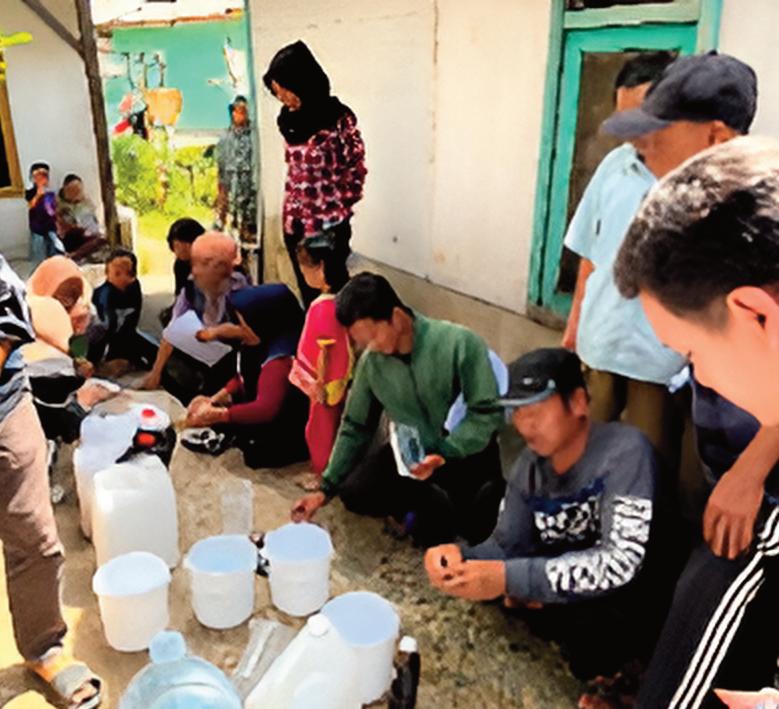
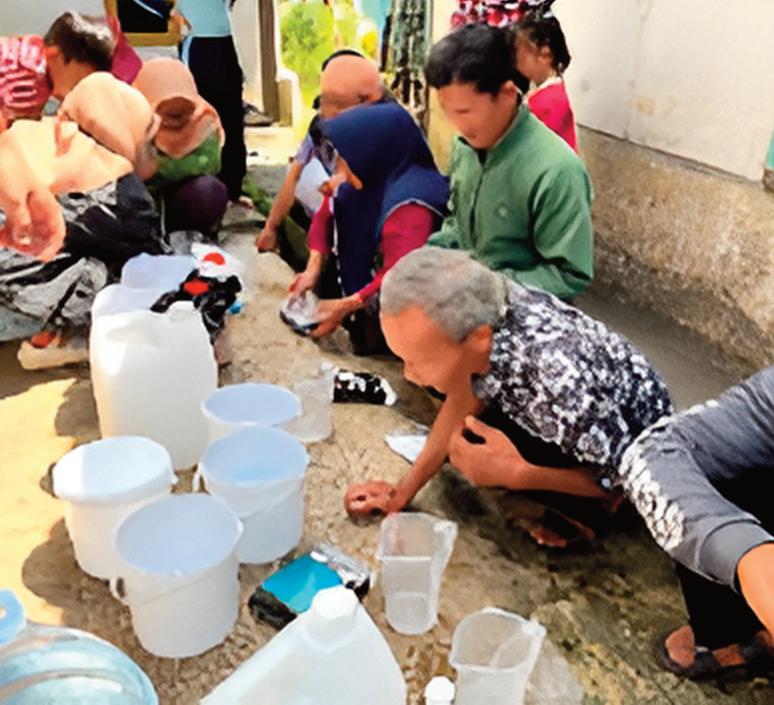
The local issue will be addressed through a series of activities, including program socialization, training on the production of probiotics for animals (fish) and plants, probiotic production for fish and plants, and their application. Sosialization and training are conducted directly while maintaining health protocols. This program involves several management processes and systems, such as:
1. Training: This is a crucial stage in the program. Training should be well-designed, tailored to the community’s level of understanding, and conducted using effective methods.
2. Probiotic Production: Managing probiotic production involves bacterial culturing processes, monitoring production conditions, and ensuring product quality.
3. Application: The use of probiotics in agriculture and fisheries requires a good understanding of the proper dosage, frequency, and application methods.
4. Community Participation: Participatory management is crucial to maintain community involvement and support throughout the program.
5. Monitoring and Evaluation: Continuous monitoring and evaluation processes are necessary to measure the impact of the program and identify areas in need of improvement.
Practices are conducted according to the standard operating procedures (SOP) for probiotic production. This is followed by hands-on practice by local community with guidance and monitoring from the Citarum Harum team. Once they are capable of
producing probiotics, farmers/main actors and entrepreneurs must be willing to apply them intensively on their farmland. The benefits of probiotics are remarkable in terms of both plant and soil quality sustainably, as they enrich the soil with
This program has a significant positive impact on social development and community progress in Kampung Tarikolot, Cinangsi Village. In terms of skills enhancement, the training program in probiotic production provides local community with new skills that can enhance their competitiveness in the labor market. These skills can also be applied in entrepreneurial endeavors, helping to reduce unemployment rates and boost the local economy.
Through the training and provision of tools for producing probiotics, opportunities are opened up for them to develop more productive farming and fishing businesses. This can help alleviate poverty levels in the area. Additionally, the community can work together on a beneficial project, strengthening unity and cooperation among community members, enhancing social relationships, and solidarity.
By understanding the importance of using probiotics in environmentally friendly agriculture and fisheries, local community will gain new knowledge about sustainable practices. This will promote environmental awareness and a more proactive mindset towards environmental protection.
This program also has positive impacts on the environment and energy performance, namely waste reduction. The use of probiotics in aquaculture will help decompose leftover feed, organic compounds, and fish waste. This reduces the amount of organic waste entering the river, helping to prevent water pollution. This has a positive impact on water quality and river ecosystems. In terms of soil and water conservation, more sustainable farming practices using probiotics help maintain soil and water quality. Probiotics help improve soil structure and reduce soil erosion
microorganisms.
The proposed program is a continuation of the previously running program targeting the same community, the community of Kampung Tarikolot, Cinangsi Village, Cikalongkulon District, Cianjur Regency. The goal of the activity is to enhance the skills of local community in probiotic production and produce probiotics for application in fisheries and agriculture by the local community.
and surface runoff that can pollute rivers. The use of probiotics in agriculture can reduce dependence on agricultural chemicals that can pollute soil and water and endanger human health.
By enhancing agricultural and fisheries productivity through the use of probiotics, this program can help optimize the utilization of resources such as land, water, and energy. This leads to higher efficiency in local food production.
Health, safety, and environmental aspects are crucial in the implementation of this program. By promoting the use of probiotics in aquaculture and agriculture, the program can help improve the health of fish and plants. Healthier fish tend to have a positive impact on consumer health. Additionally, by reducing the use of potentially harmful agricultural chemicals, the program also contributes to the health of farmers and the community reliant on agricultural produce.
This program makes a real contribution to increasing income and economic independence. Communities can develop their own farming and fishing businesses, reduce dependence on external resources, and enhance economic stability.
However, the program also faces several challenges, such as education and awareness. Shifting from conventional practices to sustainable practices requires a change in attitudes and knowledge. It may take time to ensure that all community members understand the importance and how to implement these new practices.
Furthermore, resource constraints, financial challenges, technical, or infrastructural limitations may affect the implementation of the program. Initial investment may be required to build capacity and acquire necessary resources.***

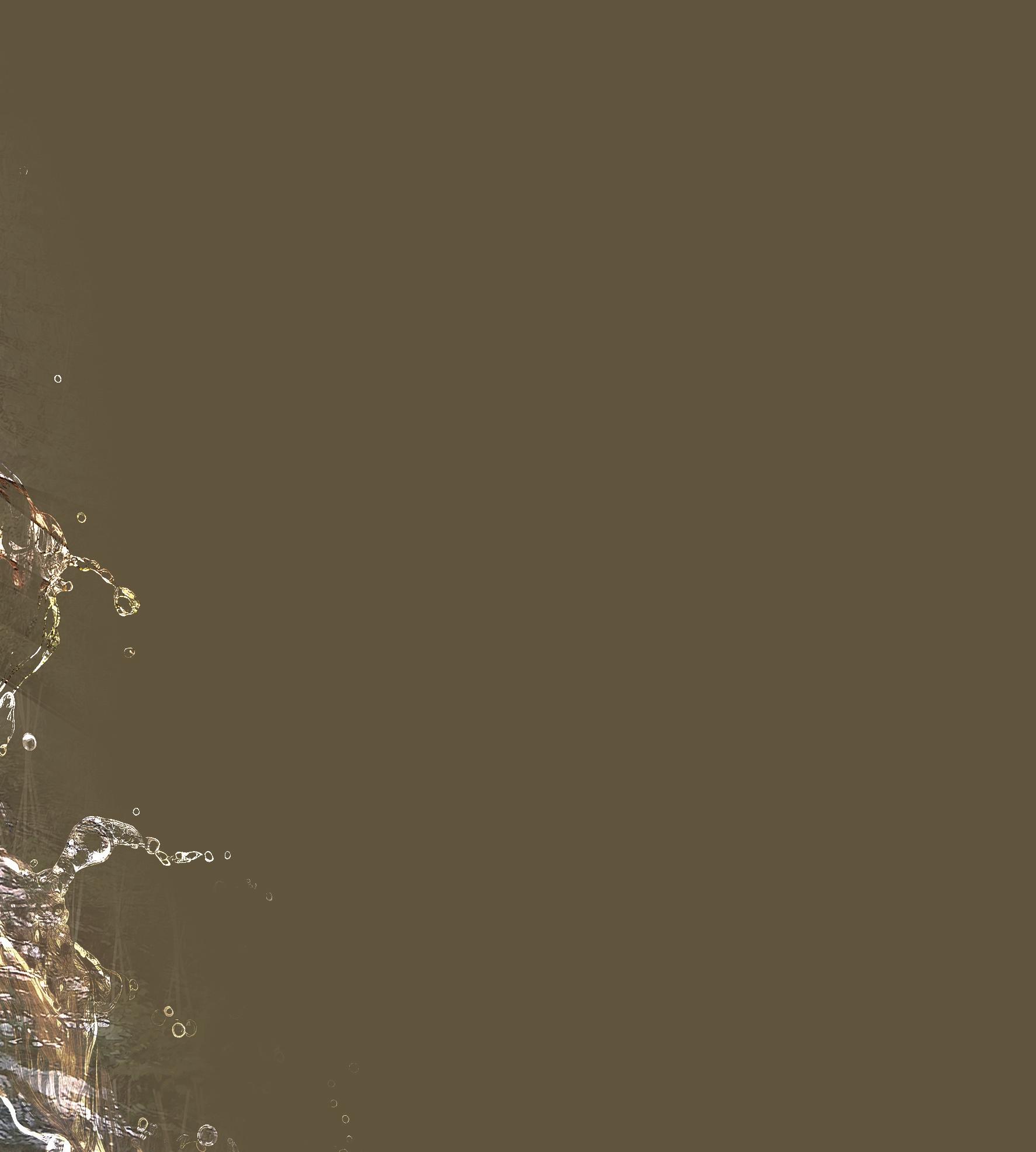
Dr. Taufikurahman
Andira Rahmawati, M.Si.
Plant Sciences and Biotechnology Research Group, School of Life Sciences and Technology
Endra Susila, Ph.D. Geotechnical Engineering Research Group, Faculty of Civil and Environmental Engineering
Aquaponics is one of the alternatives to tackle the pollution caused by fishery waste. The aquaponics system can provide a solution to address the effluent waste issue in the Cianjur region, which is part of the Citarum River Basin. Fish farming companies that discharge their production waste into the river without treatment are encouraged to build aquaponics systems as an alternative waste treatment method without incurring significant costs. The surrounding community is also educated to replicate the construction of aquaponics systems at home.
CINANGSI Village is a village located in the Cikalongkulon District of Cianjur Regency. This village is situated around the Citarum River Basin, specifically in the Cikundul Subriverbasin, which is an area known for fish farming. Entrepreneurs in this area utilize surface water as a medium for fish farming because water from the Citarum River cannot be used due to high levels of pollutants.
The background of the community service theme stems from the existing issues in Cinangsi Village, namely the limited availability of clean water and pollution resulting from fish farming activities. Fish farming activities present a significant economic opportunity for community development, but they also have other impacts on the environment.
The waste from fish farming contains various pollutants that can degrade water quality. Therefore, applied technologies are needed to address this issue without disrupting existing systems. The community, particularly this company, disposes of fish farming waste directly into the river without any effort to reduce the pollutant levels being discharged. Most of the community engages in farming on relatively large and potentially landslideprone land.
Aquaponics serves as one alternative to mitigate the pollution from fishery waste. The aquaponics system is proposed as a solution to address the effluent waste issue in the Cianjur region, which is part of the Citarum River Basin.
The implementation of this activity involves urging fish farming companies in Cianjur Regency to establish aquaponic systems as an alternative waste treatment method without incurring significant costs. These companies typically discharge their production waste directly into the river without treatment. Additionally, the surrounding community is educated on how to replicate aquaponic systems at home to reduce pollutants that contaminate the Citarum River Basin. Consequently, the community can use the water for their daily needs. The achieved objective is to install aquaponic (hydroponic) installations in the Cianjur fish farming area.
The community has been encouraged to emulate what has been established and apply it on a household scale to minimize river pollution from organic waste. The data obtained from this activity can be used for bioremediation efforts, thereby improving the quality of treated water that can be utilized by the broader community.
In the implementation of this activity, several challenges were encountered. One of them is the company’s work schedule/operations that need to be adjusted by the researchers to avoid disrupting office operations. Additionally, the environmental climate conditions in Cianjur are not suitable for hydroponic development (plants are less fertile). Therefore, it needs to be replaced with more suitable plants.
1. Initial Survey
The initial survey was conducted in early May, involving visits to companies to determine the installation location and measure the initial condition of the waste.
2 Trial of Floating Matt Application at Outlet
The second survey involved testing the use of floating mats with pre-existing plants to measure the level of waste toxicity to plants.
3 Installation of Aquaponic Systems in Fish Pond Effluents
Aquaponic installations were set up with a Nutrient Film Technique (NFT) system using gutters as the water flow medium. Once installed, several pre-seeded plants were placed into hydroponic holes.
4 Plant Germination for Stock
Plant seeds were germinated on rockwool and then placed on floating mats to draw nutrients from the fish waste.
5 Aquaponic Workshop
Materials and explanations were provided to the surrounding community, as well as to company employees and owners, regarding the use of aquaponic systems on a simpler scale. The community reviewed the built hydroponic system.
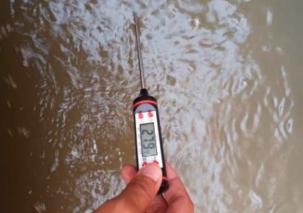
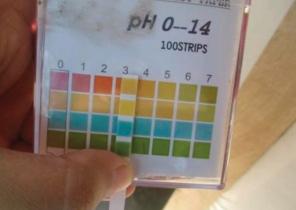
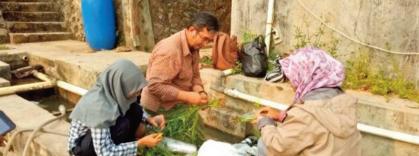
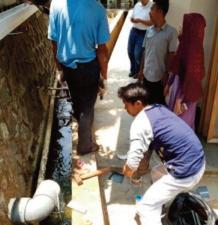

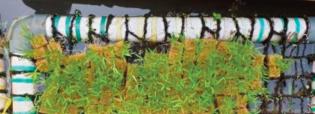

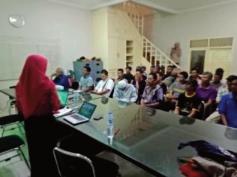
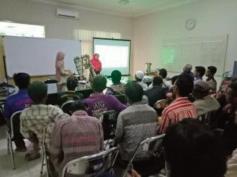
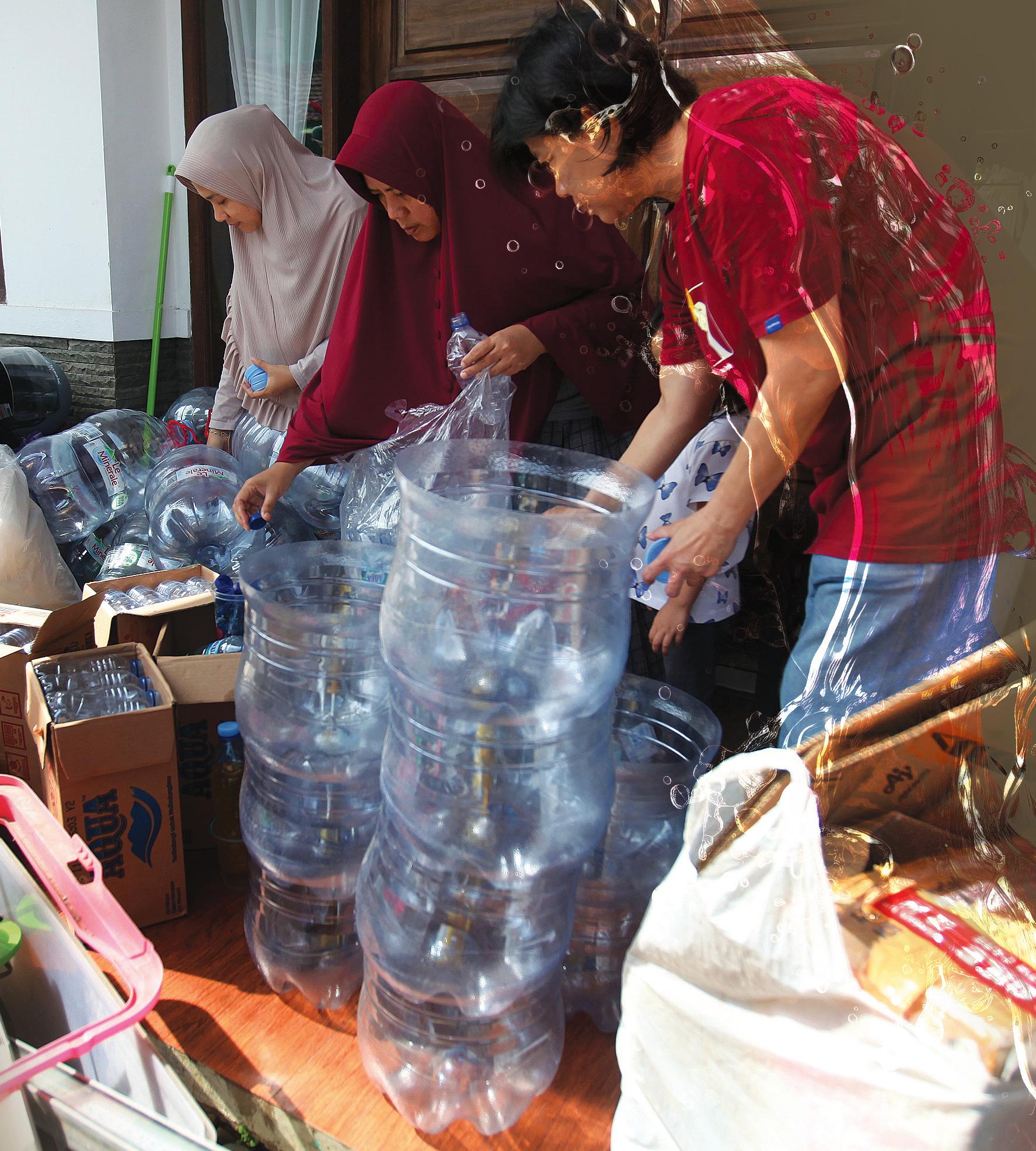

Meirina Triharini, Ph.D.
Dr. Arianti Ayu Puspita, Prananda Luffiansyah Malasan, Ph.D.
Human and Industrial Product Design Research Group
Faculty of Fine Arts and Design
The community of Cinangsi Village is encouraged to independently process “inorganic” waste and add economic value to the waste that has been reprocessed using simple technology. During the handover of the plastic waste shredder and steam oven, a workshop was also conducted for practicing the production of products made from plastic waste, which was attended by community.
In the village of Cinangsi, Cianjur Regency, West Java Province, there is a temporary disposal site (TPS) managed voluntarily by the surrounding community. The establishment of this TPS was initiated by the local RT head in response to previous education and guidance programs from ITB community service to prevent people from dumping waste into the river. The amount of “inorganic” waste is approximately 4 quintals per week from each RT. Previously, this waste was simply dumped directly into the river, causing it to become shallow and polluted, making it unsuitable for washing and bathing.
The community of Kampung Tarikolot are accustomed to separating waste into organic and “inorganic” types. Organic waste is sometimes processed into compost, while others are disposed
of directly. Meanwhile, “inorganic” waste is collected by designated RT personnel using small carts. Waste collection takes place every Tuesday and Saturday. The “inorganic” waste is collected by personnel and taken to the TPS.
From the collected “inorganic” waste, the officers will further sort out which waste can be reused, such as plastic bottles, glass bottles, and plastic waste that is too dirty and damaged to be reused. The recyclable plastic and glass waste are eventually sold to collectors because the personnel and the community cannot process themselves.
On the other hand, the plastic waste that is already too dirty and cannot be sold continues to accumulate over time. Eventually, the village head decided to resort by burning it because of concerns that the waste would continue to pile up and create new problems.
Technology/Approach Working Process:
1. Conducting an initial survey to identify the types of “inorganic” waste that are not yet managed in the village of Cinangsi.
2. Mapping out the issues and potentials of the local community to explore various directions for solving problems that have the most positive impact on the community.
3. Creating or designing products for processing “inorganic” waste and/or creative products from “inorganic” waste that can be produced and managed by the local community.
4. Providing training to the community on how to process “inorganic” waste.
This activity aims to find a solution to handle “inorganic” waste that remains unresolved for the community of Kampung Tarikolot. The objective of this activity is to empower the community of Desa Cinangsi to independently process their inorganic waste and add economic value to the recycled waste using simple technology.
The distribution of plastic waste shredding equipment and ovens took place on November 28, 2022. During the equipment distribution, the team conducted a workshop for practicing the production of products made from plastic waste, which was attended by the community of Kampung Tarikolot.
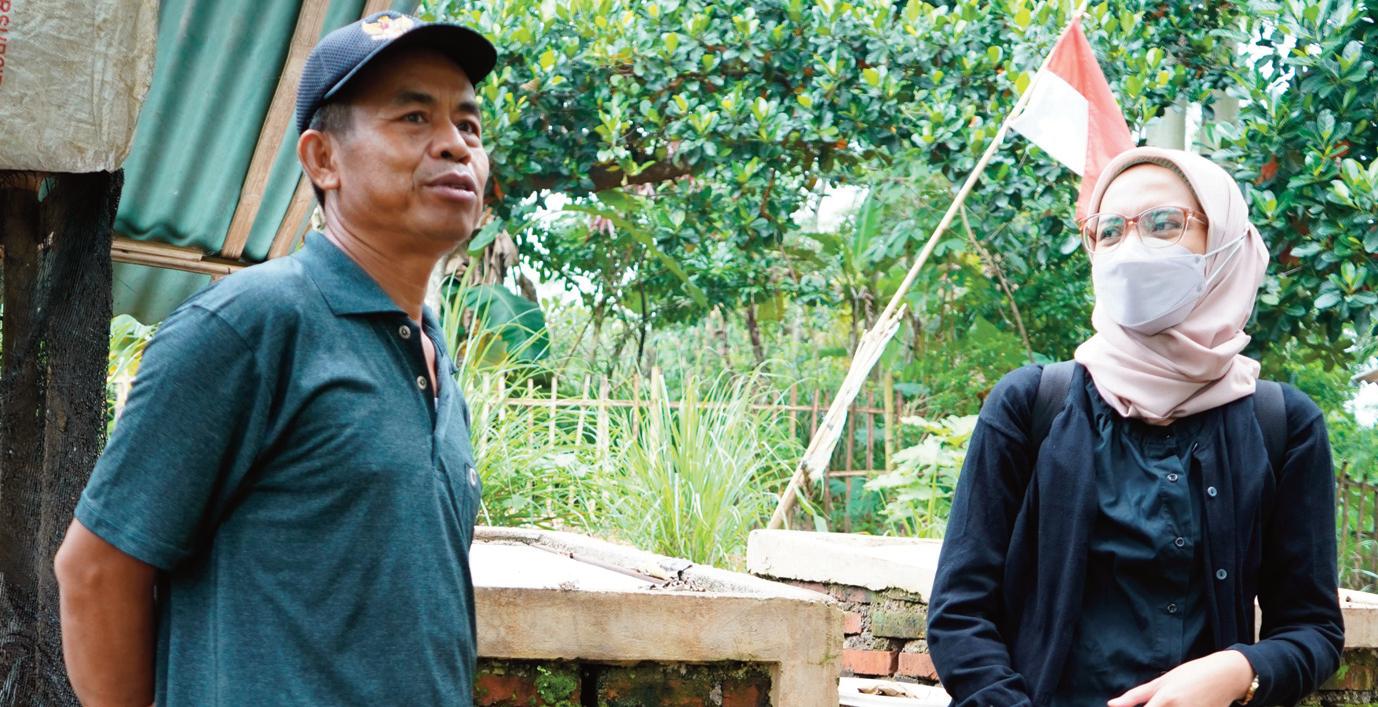
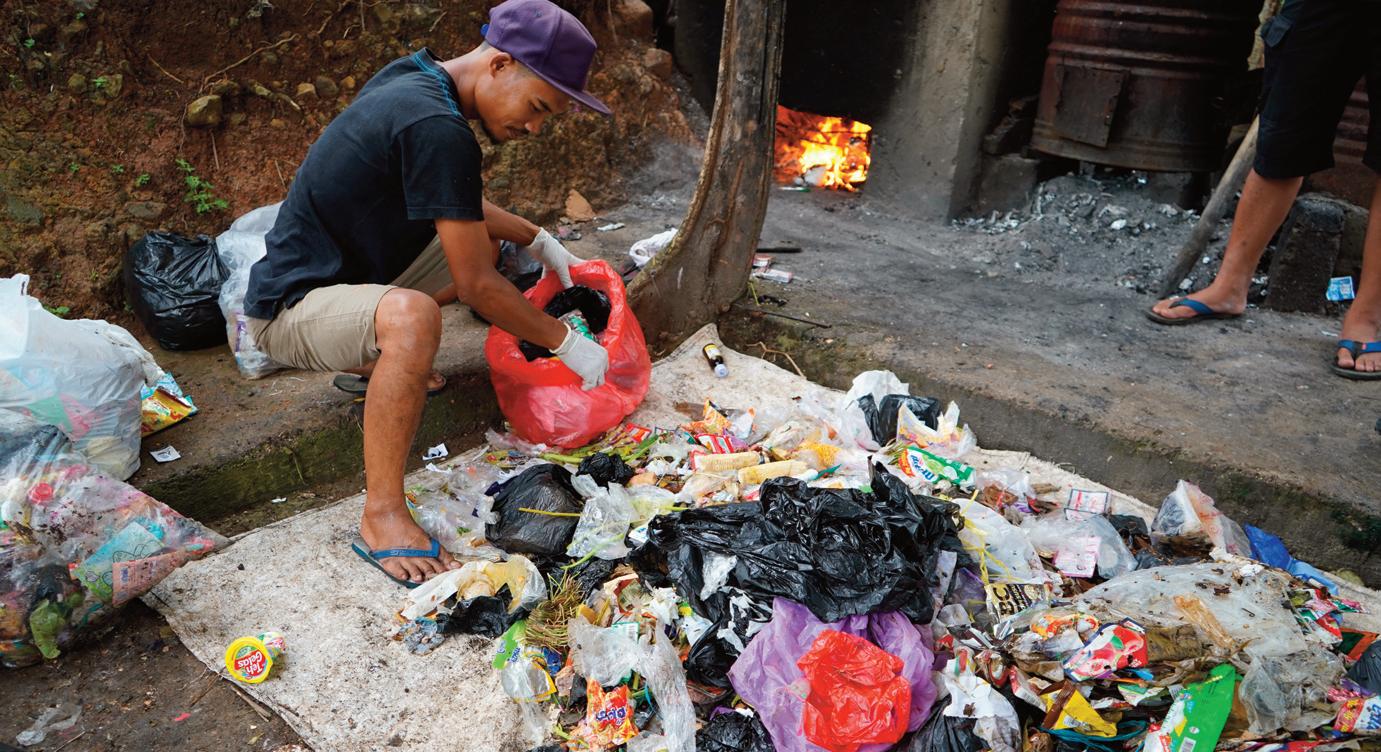
1. Field research related to plastic waste processing in the village of Cinangsi through interviews and observations.
2. Provision of equipment consisting of plastic waste shredder, electric oven, electric sander, electric drill, iron mold, aluminum trays.

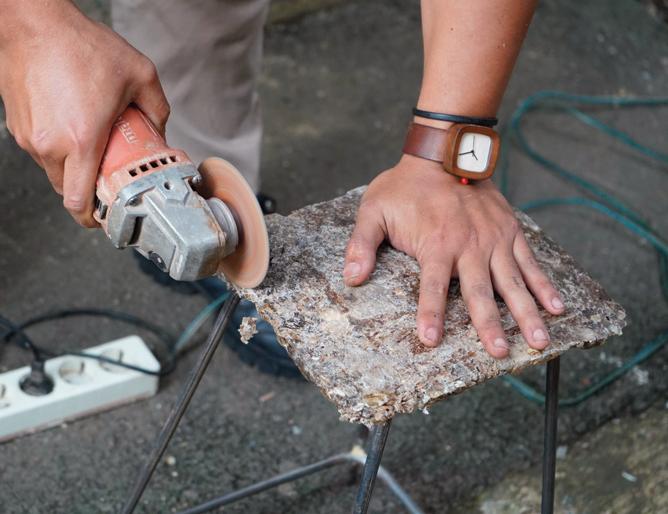
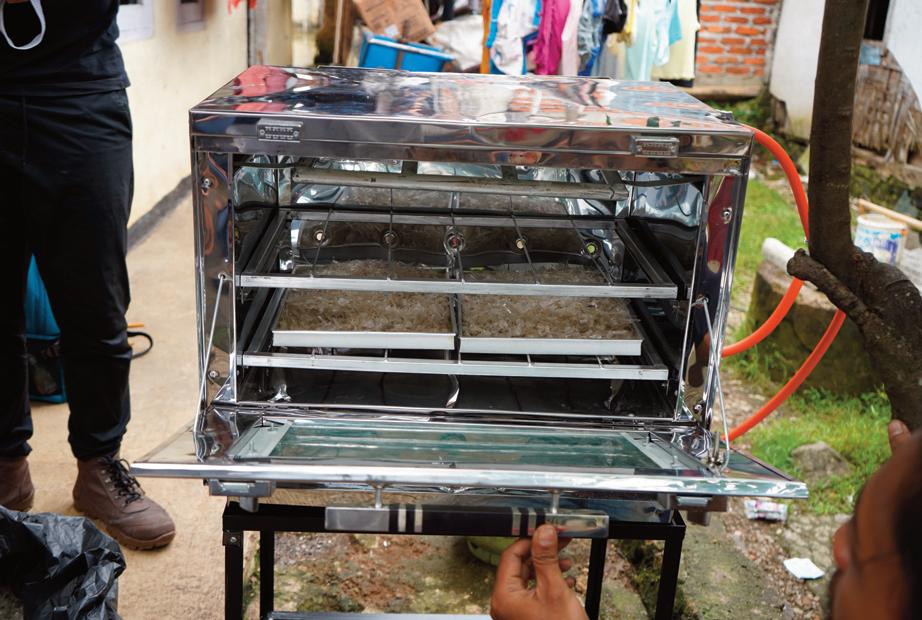
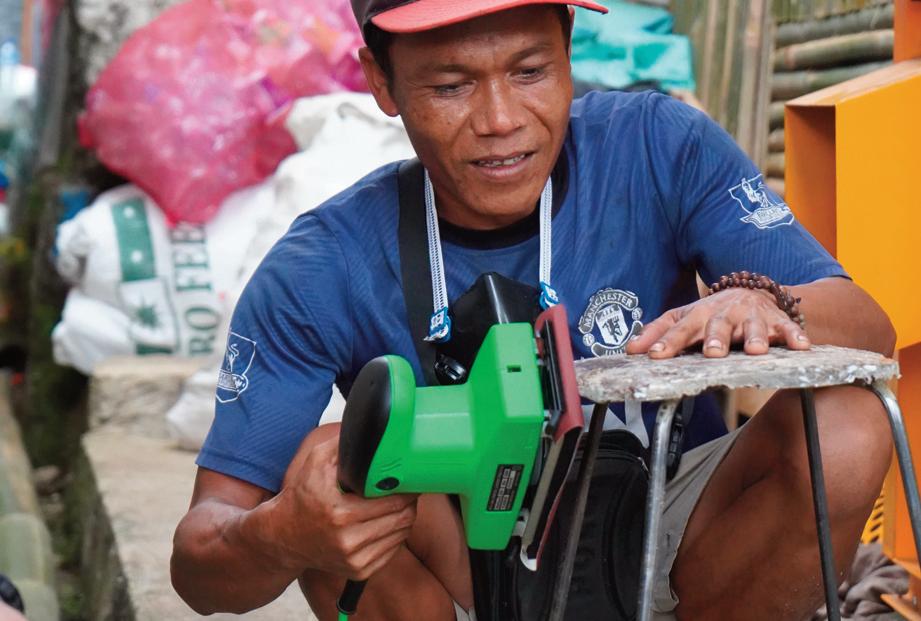
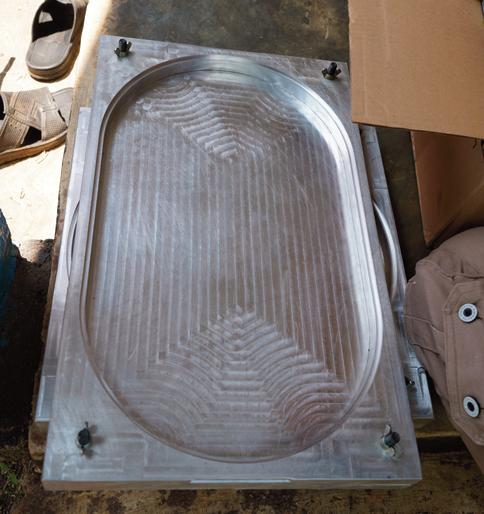
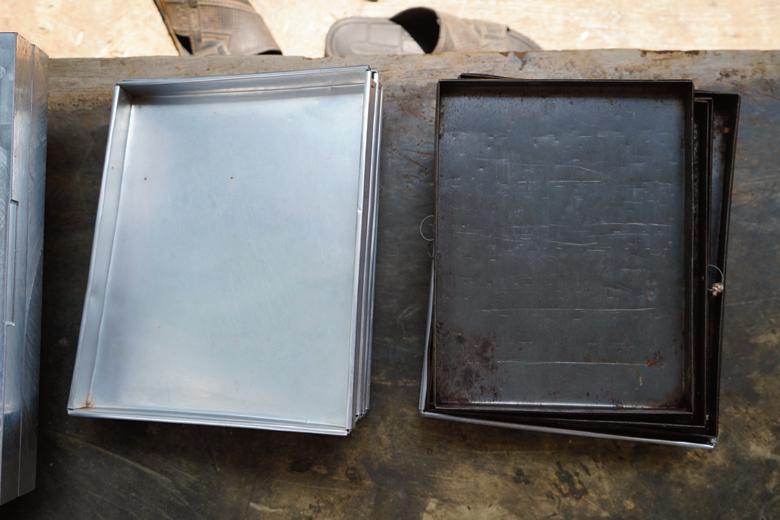
3. Training on design and development of recycled plastic products with the following steps:
- Sorting plastic waste based on type and cleaning it.
- Shredding plastic of the same type using a shredding machine.
- Mixing plastic pieces with wood powder waste as a binding material.
- Melting the plastic and wood powder mixture
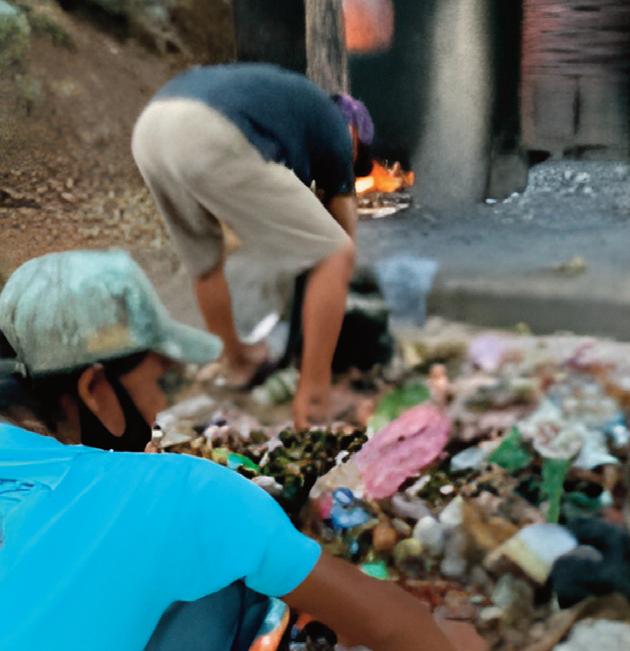
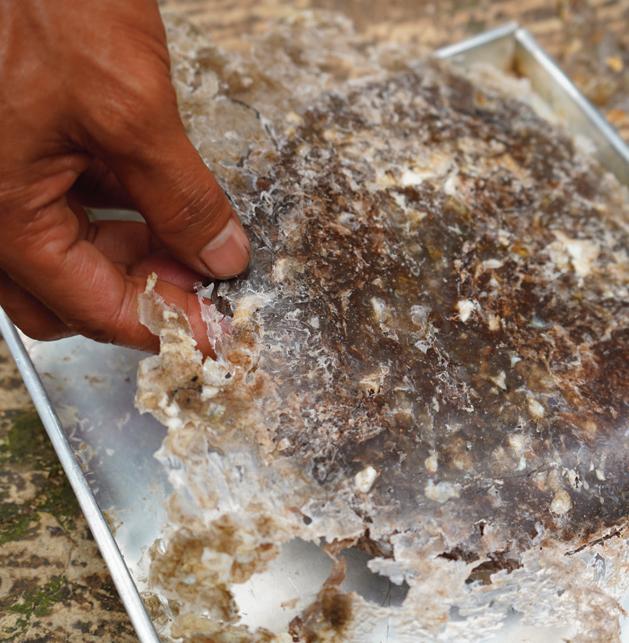
using an electric oven and aluminum tray as a mold.
- Cooling the melted plastic and releasing it from the mold.
- Shaping and smoothing the molded plastic using an electric sander.
- Attaching the plastic seat to the bench frame using a drill and screws.
- Product finishing.***
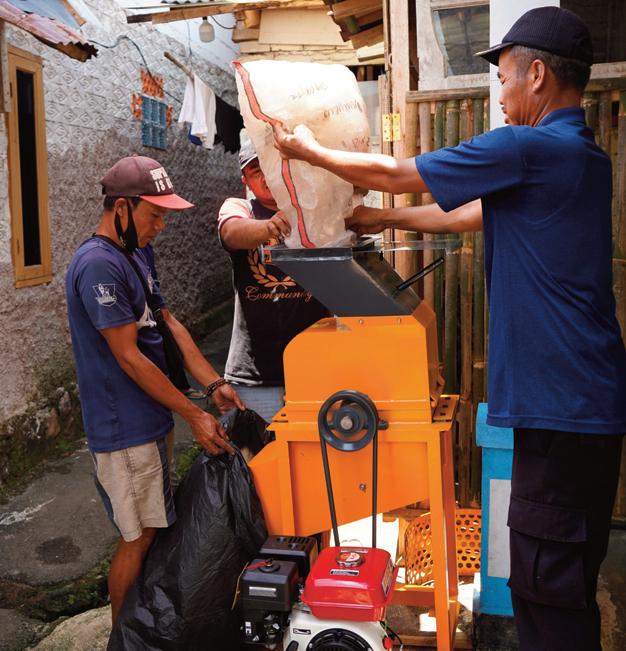
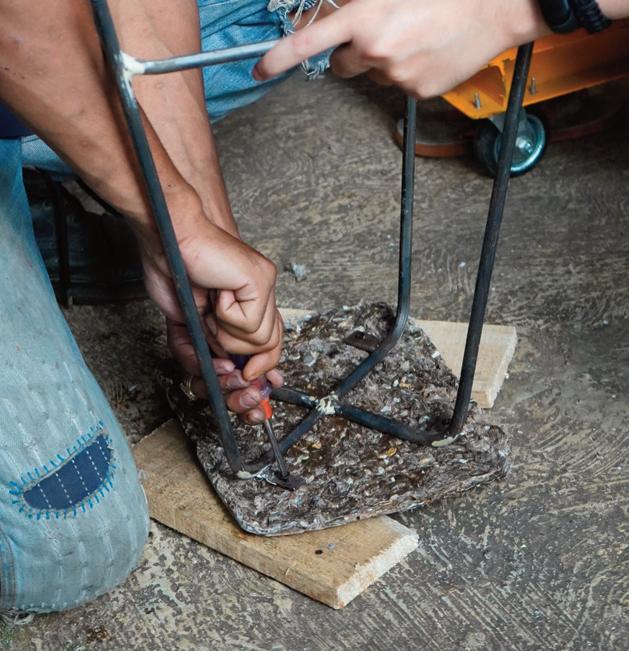

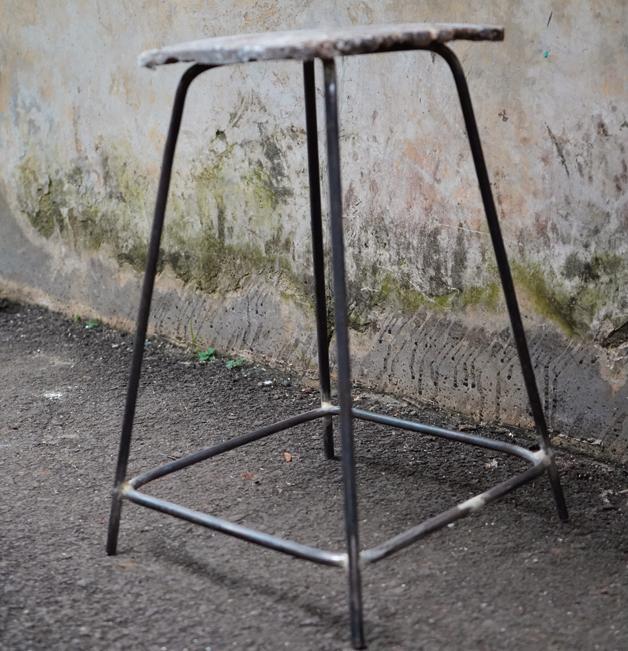
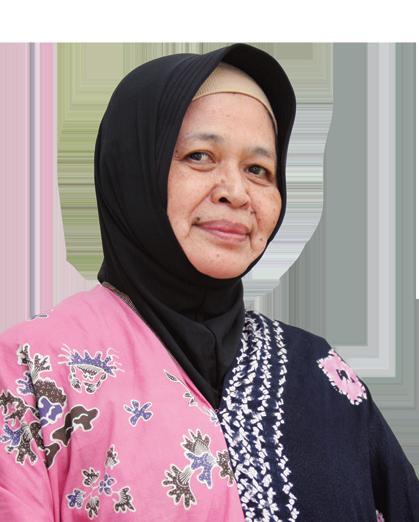
Is the Chair of the ITB Task Force for Citarum Harum for the period 20182022. She is a member of the Water and Wastewater Engineering Research Group, Faculty of Civil and Environmental Engineering, ITB. She completed her bachelor's and master's studies at ITB and obtained her doctoral degree from Victoria University of Manchester (University of Manchester Institute of Science and Technology/UMIST), United Kingdom.
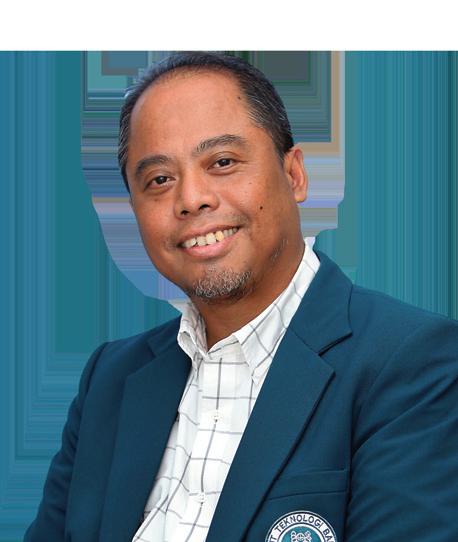
Has been the Chair of the Institute for Research and Community Service (LPPM) at ITB since 2021. He is affiliated with the Thermal Science and Engineering Research Group, Faculty of Mechanical and Aerospace Engineering at ITB. He completed his bachelor's and master's studies at ITB, while he obtained his doctoral degree from Kobe University, Japan.

Currently serves as the Head of the ITB Task Force for Citarum Harum in 2023. He is part of the Water and Wastewater Engineering Research Group, Faculty of Civil and Environmental Engineering at ITB. He completed his master's and doctoral studies at ITB. He is actively involved in community service activities that support the Citarum Harum program, such as training on simple water treatment and industrial wastewater treatment with a good WWTP operational approach.
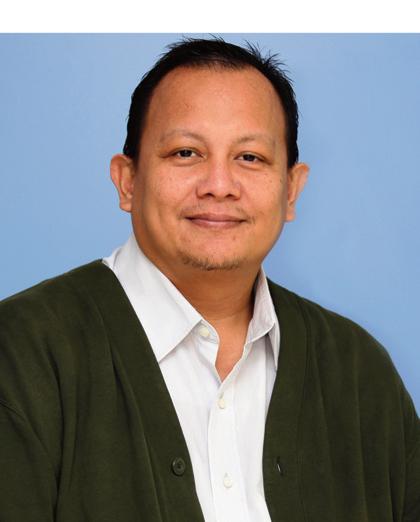
Serves as the Secretary of the Community Service Division at LPPM ITB. He is directly responsible for implementing one of the university's Tri Dharma, which is expected to have a direct impact on society. He completed his bachelor's and master's studies at ITB, while his Ph.D. was obtained from the Japan Advanced Institute of Science and Technology (JAIST), Japan. Currently, he is affiliated with the Human and Interior Space Research Group, Faculty of Art and Design at ITB.

Serves as the Secretary of the General Affairs Division at LPPM ITB. He is a member of the Water Resources Engineering Research Group, Faculty of Civil and Environmental Engineering, ITB. He completed his bachelor's and master's studies at ITB. His doctoral education was pursued at Tohoku University, Japan.

Is the Secretary of the Research Division at LPPM ITB since 2020. He is a member of the Inorganic and Physical Chemistry Research Group, Faculty of Mathematics and Natural Sciences, ITB. He pursued his bachelor's degree at ITB. His master's and doctoral education was completed at Universiti Teknologi Malaysia and Technische Universität München, Germany, respectively. His research on zeolite materials has earned him several prestigious awards.
